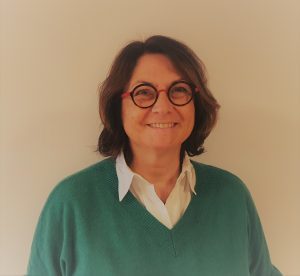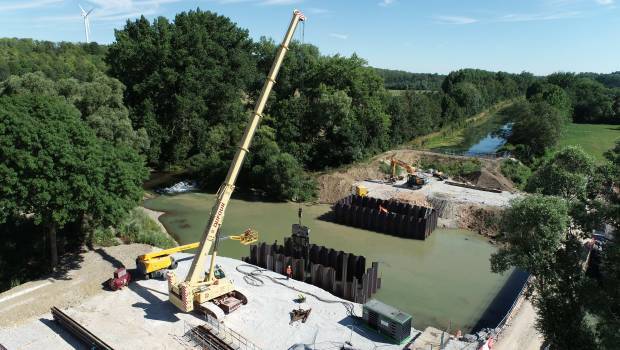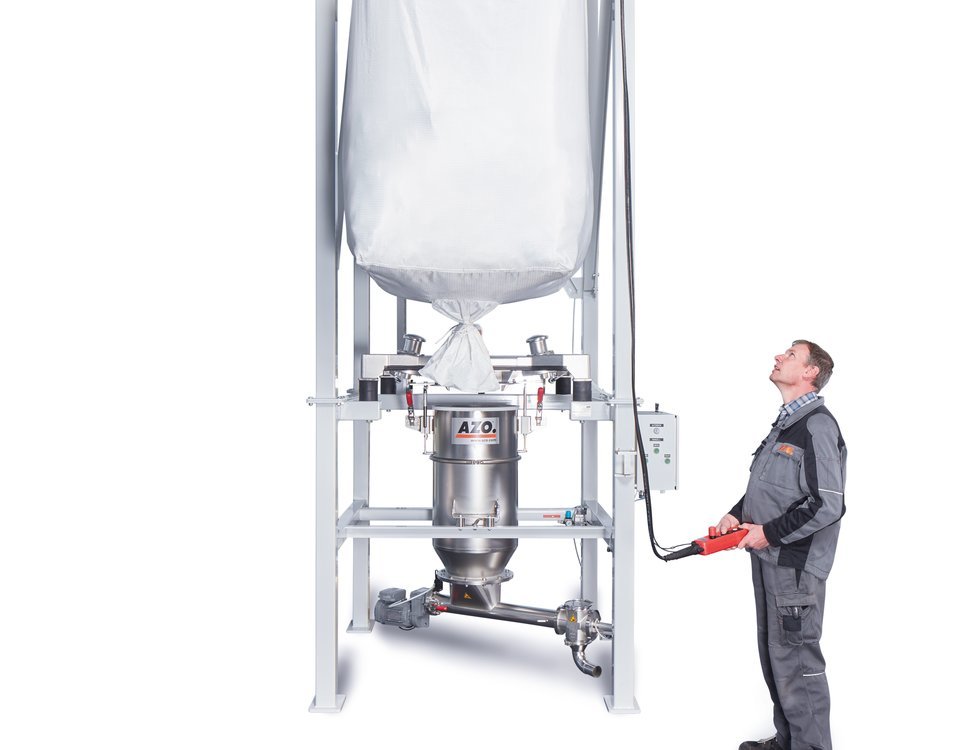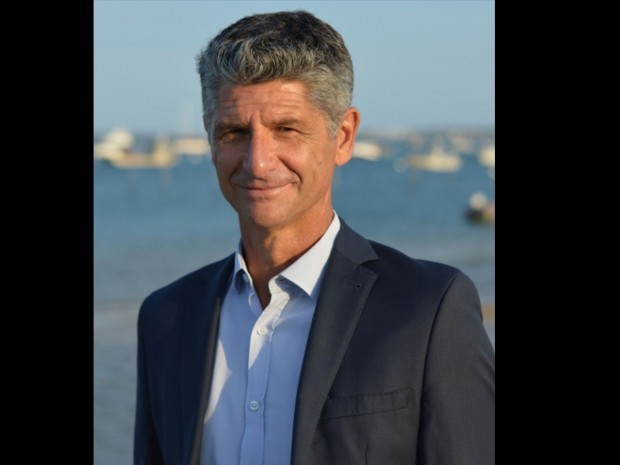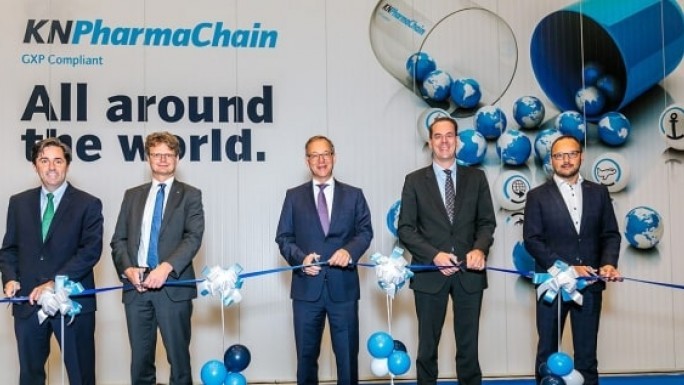News
APIA Technologie sécurise le vrac alimentaire dès le stockage

APIA Technologie sécurise le vrac alimentaire dès le stockage
Dans l’industrie agroalimentaire, les flux de vrac sec sont souvent synonymes de défis majeurs en matière de sécurité : contamination croisée, introduction de corps étrangers, dispersion de poussières, ou encore mise en danger des opérateurs lors des manipulations. Pour éviter que le stockage ne devienne un point critique du process, des solutions techniques existent. Spécialiste du transfert des poudres dans l’agro-alimentaire, APIA Technologie déploie des équipements dédiés à la sécurisation des ingrédients secs, depuis leur extraction jusqu’à leur transfert sur ligne.
Sécuriser l’extraction des ingrédients secs depuis le stock
Un stockage prolongé entraîne fréquemment la formation de voûtes ou de cheminées qui bloquent l’écoulement des poudres. Ces phénomènes mécaniques mettent les opérateurs en difficulté, les contraignant parfois à intervenir manuellement, avec des risques de chute de produit ou d’accidents. Pour sécuriser cette étape, APIA Technologie propose diverses solutions d’optimisation du process poudres selon la nature du produit et selon le type de conditionnement : fonds vibrants sous silos, bras de massage sur stations de vidange big-bags, vibrateurs sur trémies, grilles vibrantes, ou encore aubes de dévoûtage. Ces systèmes permettent une extraction fluide, sans intervention humaine intrusive, garantissant à la fois la continuité du process et la sécurité opérateur.
Éliminer les mottes et éviter les colmatages de matières premières pulvérulentes
Les ingrédients stockés peuvent durcir, formant des grumeaux ou grugeons qui compromettent la qualité du produit et bloquent les réseaux de transfert. Ces obstructions, en plus de générer des arrêts de production, peuvent engendrer des surpressions ou des bris mécaniques. APIA Technologie propose l’intégration d’égrugeonneurs ou de solutions multifonctions telles que l’Emotteur Tamiseur Broyeur (ETB), capable d’émotter, désagglomérer ou égrener les matières en sortie de stockage. Modulable et simple à intégrer, l’ETB permet de revaloriser les lots en sortie de stock tout en sécurisant le réseau de transfert en aval.
Contrôler la qualité et éliminer les contaminants
Dès leur déconditionnement (ouverture des sacs, dépotage des big-bags ou des silos), les ingrédients alimentaires sont exposés à des risques de contamination : corps étrangers, poussières métalliques, fibres plastiques, allergènes, ... Pour sécuriser les matières premières, APIA Technologie intègre des équipements de contrôle et de séparation en amont ou en cours de process : Grille Vibrante de Sécurité (GVS) sur vide-sacs, pièges magnétiques, et tamiseurs de sécurité. Ces dispositifs sont conçus pour respecter les normes hygiène et qualité des filières agroalimentaires. La sécurité des flux de vrac ne s’improvise pas. En anticipant les risques dès la sortie de stockage, et en intégrant des solutions adaptées à chaque étape du process, les industriels peuvent conjuguer qualité produit, sécurité opérateur et performance de ligne. Grâce à son expertise en manutention des poudres alimentaires, APIA Technologie accompagne les sites agroalimentaires dans la conception de lignes robustes, hygiéniques et sûres, à chaque étape du cycle de vie des ingrédients.
Contact : commercial@apia-sa.com – 02 99 14 62 33
JLG expands production in Europe

JLG Industries Inc., une filiale d'Oshkosh Corporation (NYSE: OSK) et l'un des principaux fabricants mondiaux de plateformes élévatrices et de chariots télescopiques, a transféré la production de certains modèles de nacelles élévatrices diesel et électriques JLG vers son site de Nogara, dans le nord de l'Italie, afin de mieux répondre aux besoins de ses clients européens. Le premier modèle produit en Italie, une nacelle articulée E450AJ, a été expédié avec succès à un client en Espagne au cours du 1er trimestre 2025. Cette usine, acquise dans le cadre de l’achat d'Hinowa par JLG en 2023, offre plusieurs avantages, notamment une logistique optimisée, des délais de livraison réduits et des coûts de transport moindres. Elle contribuera également à la réduction des chaînes d'approvisionnement et, à long terme, à une empreinte carbone plus faible. Idéalement située pour alimenter le marché européen, l'usine continuera à produire des nacelles à flèches sur chenilles, des mini-dumpers, des transpalettes à chenilles et des châssis de la marque Hinowa. Elle dispose également d'une main-d'œuvre hautement qualifiée et d'une infrastructure robuste, avec des équipements de pointe, des systèmes de stockage verticaux, un département d'ingénierie et de prototypage dédié ainsi que des zones de test sur le terrain. À Nous avons déplacé la production de ces modèles vers notre base opérationnelle européenne existante afin de mieux répondre aux besoins de notre clientèle européenne, » a déclaré Rogerio dos Santos, vice-président de JLG pour la région Emeai, la stratégie mondiale et les fusions-acquisitions. « Cette flexibilité est un exemple de la façon dont nous pouvons utiliser notre présence mondiale pour apporter une valeur ajoutée à nos clients. » Zeno Poltronieri, directeur général de la gamme Hinowa, ajoute : « Depuis l’acquisition d’Hinowa par JLG en 2023, nous avons travaillé en étroite collaboration pour développer de nouvelles opportunités et combiner nos savoir-faire. La production du premier élévateur à nacelle JLG en Italie témoigne d'une collaboration fructueuse. »
Port of Caen-Ouistreham: temporary closure of the west lock, last phase of a vast rehabilitation project

Après plusieurs années de travaux, Ports de Normandie engage la dernière phase du chantier de réhabilitation de l’écluse ouest. Objectif : remplacer ses portes aval et renforcer ses mécanismes. À l’issue de cette opération, l’écluse retrouvera un fonctionnement normal, plus fiable et plus performant. Depuis 2019, Ports de Normandie pilote un chantier de grande envergure pour sécuriser et réhabiliter l’écluse ouest de Ouistreham, un ouvrage stratégique pour l’exploitation du port de Caen-Ouistreham. Construite entre 1958 et 1962, l’écluse ouest avait montré des signes de faiblesse structurelle nécessitant des interventions de sécurisation et de confortement. Des premiers travaux de confortement ont été réalisés entre 2019 et 2021, suivis en 2024 d’importants travaux de génie civil. Ces interventions ont permis de conforter l’infrastructure, mais l’écluse fonctionne actuellement en mode dégradé, limitant ses capacités. La dernière phase de travaux, programmée entre mai et juillet 2025, permettra de retrouver un fonctionnement normal et sécurisé de l’écluse, condition essentielle pour garantir la fluidité des échanges maritimes. À partir du 2 mai 2025, l’écluse ouest sera fermée à la navigation pour une durée de 3 mois, le temps de remplacer ses portes aval, dont la protection anticorrosion est en fin de vie, et de finaliser les travaux de réhabilitation structurelle.
Du 2 mai à fin juillet 2025, les opérations porteront notamment sur la mise en place d’un barrage provisoire (batardeau), le démontage et remplacement des portes, ainsi que la remise en service complète de l’écluse. La réouverture à la navigation est prévue début août 2025. Impacts pour les piétons Des perturbations ponctuelles de la circulation piétonne sont à prévoir du 2 au 20 mai, lors de l’installation du batardeau ; la signalisation sera adaptée en conséquence. Une passerelle temporaire sera mise en place au-dessus de la grande écluse pour maintenir la continuité piétonne tout au long de l’été. En revanche, aucun impact n’est à prévoir pour les cyclistes ni pour les véhicules en dehors des passages de navire de commerce dans le petit sas. Ce chantier représente un investissement de 3,5 M€, financé par :
• Région Normandie : 60 % ;
• Ports de Normandie : 30 % ;
• Communauté urbaine Caen la mer : 10 % ; Ports de Normandie remercie les usagers pour leur compréhension pendant la durée des travaux.
Universal Robots launches the UR15, its fastest collaborative robot to provide unprecedented performance

Avec des capacités de mouvement inégalées et un TCP pouvant atteindre la vitesse de 5 m/s, l'UR15 est le cobot le plus rapide jamais conçu par Universal Robots. Il offre des temps de cycle réduits, une productivité accrue et une diminution des coûts, et ce, pour toutes les applications et tous les secteurs industriels. Pour les applications de pick & place, l’UR15 réduit les temps de cycle de 30 % par rapport aux autres cobots UR. Le tout avec les mêmes caractéristiques propres à l’entreprise danoise, à savoir une conception légère et une empreinte au sol réduite, qui lui confèrent une flexibilité inégalée pour une intégration dans des espaces restreints.
« Cela fait 20 ans que nous repoussons les limites de l’automatisation collaborative, pour la rendre plus facile, plus sûre et plus puissante dans toutes les entreprises du monde », souligne Tero Tolonen, directeur produits d’Universal Robots. « C’est aujourd’hui un bond en avant que nous faisons avec l’UR15. Spécialement conçu pour fonctionner à des vitesses plus élevées et avec une fluidité inégalée dans la robotique actuelle, il s’adapte parfaitement à tous types d’environnement de production. Il permet à notre vaste écosystème de partenaires de dynamiser les applications existantes et de développer de nouvelles solutions transformatrices pour faire passer l’automatisation collaborative à la vitesse supérieure ». Combinées à la nouvelle technologie de contrôle des mouvements d’UR OptiMove, ces avancées vont encore plus loin, avec une trajectoire plus fluide et des mouvements toujours plus précis, même pour des applications à grande vitesse et à forte charge utile.
Alimenté par PolyScope X, prêt pour l’IA
L'UR15 fonctionne avec PolyScope 5 et PolyScope X, les plateformes logicielles de pointe d'Universal Robots. Il est prêt à être optimisé avec l'IA pour une facilité d’utilisation inégalée. L’UR15 peut en effet être utilisé facilement avec Al Accelerator, kit d’UR pour le développement d’applications alimentées par l’IA. Développé en collaboration avec Nvidia, AI Accelerator utilise les librairies et modèles CUDA de Nvidia Isaac et fonctionne sur le système sur module Nvidia Jetson Agx Orin.
Conçu pour être flexible, efficace et fiable L’UR15 est doté d’une charge utile de 15 kg, qui peut être augmentée à 17,5 kg pour des applications comme la palettisation où le poignet du bras robotisé est orienté vers le bas. L'UR15 est un cobot polyvalent, conçu pour optimiser de multiples applications et secteurs industriels – chacun avec ses propres exigences – où la flexibilité, l'efficacité et la fiabilité sont essentielles.
Parmi ces secteurs, on retrouve :
• l’industrie automobile, où l’espace est restreint et la flexibilité essentielle. Ici, le faible encombrement et l’enveloppe de travail complète de l’UR15 garantissent de hauts niveaux de performance sans compromettre l’espace ou la vitesse. Les applications automobiles courantes, historiquement limitées par la vitesse de production cobotique – par exemple le bin picking, le chargement/déchargement de machines et l’inspection –, pourront considérablement gagner en vitesse, tout en conservant un niveau de précision maximal ;
• le métal et l’usinage, où les environnements peuvent être difficiles. L’UR15 offre une protection optimale contre les infiltrations (indice IP65), tout en proposant une charge utile élevée et un déploiement facilité ;
• l’industrie électronique et technologique, qui exige précision et compacité. Par sa forme compacte et son contrôle de mouvement exceptionnel, l’UR15 est conçu pour un pick & place à grande vitesse et une intégration harmonieuse avec les AMR et les AGV. Il est en outre utilisable en Salle blanche.
« La conception de nos produits se fonde sur les besoins de notre clientèle très diversifiée », poursuit Tero Tolonen. Chaque industrie se caractérise par un ensemble unique d’exigences qui façonne l’approche de nos cobots et des solutions de notre écosystème. L’UR15 permettra à nos clients de relever leurs défis actuels et de saisir leurs futures opportunité.s »
Un cobot pour chaque besoin -évolution de la gamme de cobots UR L’UR15 rejoint l’UR20 et l’UR30 au sein de la gamme de cobots UR à haute performance, l’UR Series, qui répond aux besoins en charge utile plus élevée, en capacités avancées et en certifications dans des environnements exigeants. « Nous mettons également à jour notre gamme éprouvée e-Series », précise Tero Tolonen. Nous augmentons la charge utile de l’UR5e de 2,5 kg pour libérer davantage de potentiel dans les installations existantes. L’UR10e, qui peut déjà soulever des charges de 12,5 kg, est quant à lui renommé. Ainsi, pour mieux refléter leurs caractéristiques, nous dévoilons deux nouveaux noms : l’UR7e et l’UR12e. La même polyvalence et les mêmes niveaux de performance, mais une dénomination plus claire et davantage de puissance là où cela compte. »
En plus de l’UR7e et de l’UR12e, la gamme e-Serie comprend également l’UR3e et l’UR16e. L’UR15 est d’ores et déjà disponible à la commande ; les livraisons commenceront en juin. L’UR7e et l’UR12e sont disponibles pour disponibles dès à présent.
© Universal Robots
Gericke presents in-line centrifugal sieves

. Les tamiseurs centrifuges de l’industriel sont utilisés depuis plus de 70 ans dans tous les secteurs industriels : agroalimentaire, chimie, minéral… Ils sont en majorité alimentés gravitairement par des équipements positionnés en amont, tels que des vis, des doseurs, des écluses, des tubes vibrants… Gericke propose également une gamme de tamiseurs centrifuges pouvant être insérés dans une ligne de transport pneumatique en phase diluée en pression ou en dépression. Cette configuration moins fréquente comporte de nombreux avantages tels que :
· le tamiseur peut être placé n'importe où sur la ligne de transport pneumatique, ce qui facilite son implantation,
· aucun organe d'alimentation du tamiseur n'est nécessaire,
· élimination automatique des refus hors de la chambre de tamisage,
· système compact même pour des débits de plusieurs dizaines de tonnes par heure,
· un seul tamiseur en ligne peut être suffisant pour tamiser différents produits provenant de différents points de départ. Ces tamiseurs sont disponibles en de multiples exécutions pour satisfaire aux exigences des industries dans lesquelles ils sont utilisés. Les stations d'essais du groupe Gericke sont équipées d'un tamiseur en ligne sur une ligne de transport pneumatique en phase diluée.
IPP France: a new appointment

Vincent Prat succeeds Matthieu Huot, who has been promoted to program director within the group. A graduate of the ESLSCA business school (Paris 7), specializing in finance, he began his career in 2005 as a management controller at the children's clothing brand Jacadi. From 2006 to 2007, he held the same position at Dacem, a specialist in the distribution of parts and accessories for household appliances. He then joined the Tetra Pak Processing division of the Swedish company specializing in food processing and packaging solutions as a management controller and sales administrator. In 2011, he became logistics management controller for France and North Africa at Dachser, where he remained for nearly 13 years, supervising up to 11 logistics warehouses. Vincent Prat has been at IPP France since April 2024.
"I am delighted to join the teams at IPP, a division of Faber Group, a wonderful family business with a real vision of sustainability. Integrating IPP into this growth phase is very exciting. Effective management of a company's finances is key to ensuring its long-term development. It allows it to invest in the future, create value and jobs, while offering impeccable service quality to its customers," said Vincent Prat.
With consolidated revenue of €255 million, IPP forecasts a 51% growth in its pallet movements in Europe, reaching a total of 106 million by 2029.
Still invests 50 million euros in Hamburg!

This strategic project, which represents an investment of €50 million, demonstrates the two companies' commitment to strengthening innovation and ensuring the site's sustainable development. In this spirit, Still is also announcing a major expansion of its energy activities: the company aims to strengthen its position in energy systems and plans to produce its own lithium-ion batteries by 2026. This commitment marks a new step in Still's strategy to offer increasingly efficient and environmentally friendly technological solutions. Spanning 14,500 m², this new, ultramodern center will include 8,200 m² of production space and 2,600 m² of office space, where approximately 140 employees will work from summer 2026. It will offer state-of-the-art infrastructure for the production, testing, and development of mechatronic solutions, thus fostering interdisciplinary collaboration and operational efficiency. In addition to production lines, the site will also house test areas and development laboratories. With this expansion, the manufacturer is increasing its mechatronics footprint from 5,900 m² to 10,800 m², consolidating its expertise and preparing for the future with increased capacity for innovation and development. Located just 1 km from Still's current headquarters, this new center will free up space that will be reintegrated into the site's development projects, particularly for the expansion of the training workshop.
AHS & AMP opens new state-of-the-art production facility
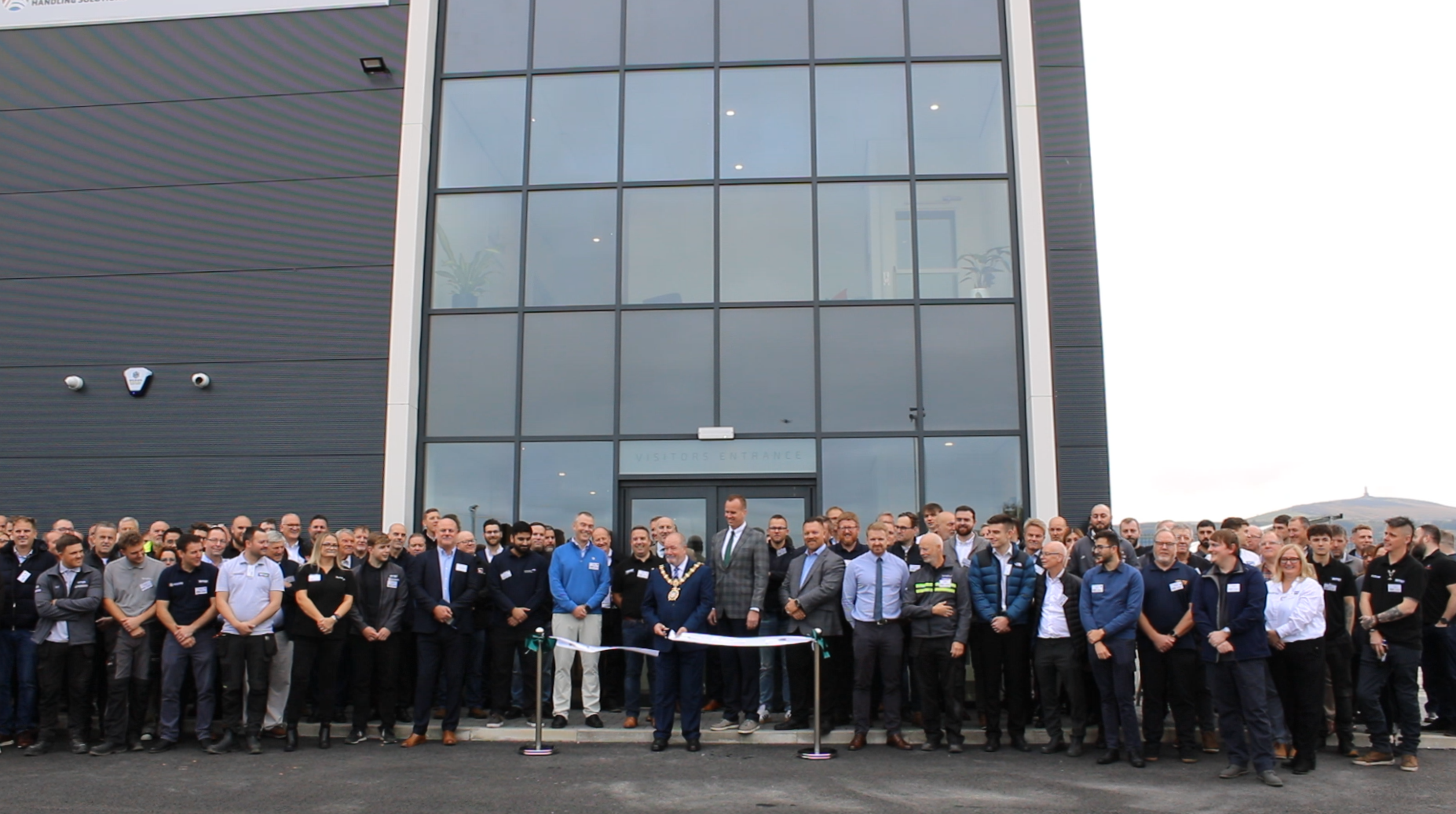
This new facility represents a significant improvement over the company's previous site in Clitheroe and now represents 25% of AHS & AMP's global manufacturing capacity. Designed to serve customers in the UK, continental Europe, Africa, and Asia, the Darwen site is part of the company's global growth and expansion strategy. The expanded facility is a major step forward for the company, enabling the company to improve lead times, increase efficiency, and support its growing business. The Darwen facility will be used to manufacture equipment for AHS & AMP's four core brands: Spiroflow, Cablevey, Marion, and Kason. Located close to major transport links, including the M65, rail networks, and nearby airports, the Darwen site offers logistical advantages that support AHS & AMP's supply chain and distribution network. The increased space also opens up recruitment opportunities, providing access to a larger talent pool in the region. AHS & AMP is committed to sustainability, and the Darwen site features energy-efficient solutions, including LED lighting, hybrid heat pumps, and a comprehensive recycling program. This ensures that the facility not only promotes operational efficiency but also aligns with the company's long-term environmental goals. As part of the grand opening, more than 100 people were invited to tour the new facility, meet key members of the AHS & AMP team, and experience firsthand the advances in manufacturing and materials processing offered by the new site.
XPO Logistics and SKF commit to greener logistics with a 100% electric truck
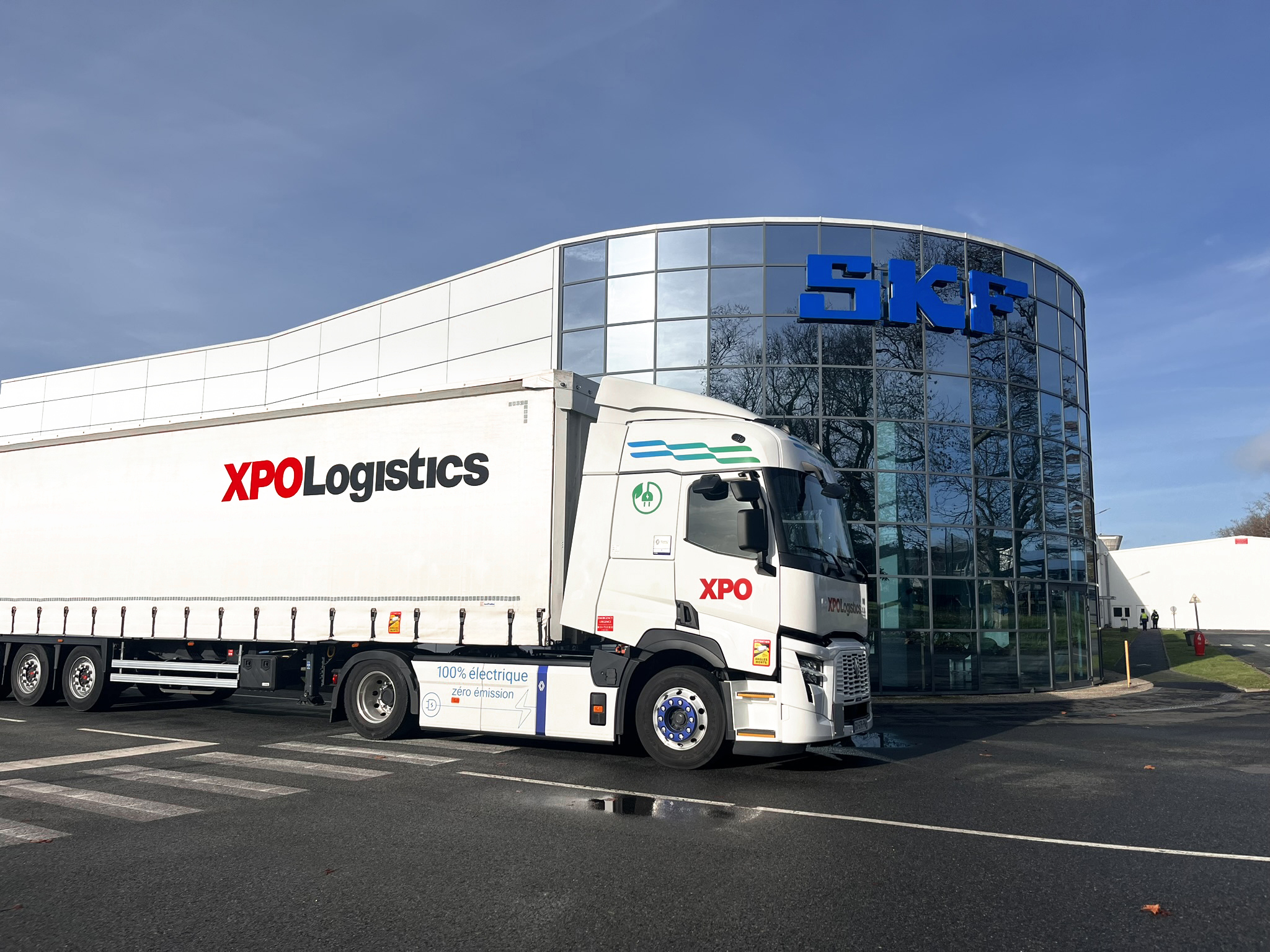
In France, XPO Logistics manages a key part of SKF's logistics, with a dedicated 6,000 m² storage space in a 24,000 m² warehouse located in Parçay-Meslay (37). Every day, five shuttles transport components used in bearing manufacturing (rings, cages, seals, plastic cups) between this warehouse and the SKF plant in Saint-Cyr-sur-Loire (Indre-et-Loire). Until now, these shuttles were carried out using a combustion engine truck. As part of its commitment to more sustainable growth, SKF recently adopted an electric tractor truck, a solution proposed by XPO Logistics to reduce the environmental impact of its operations. In early 2024, XPO Logistics ordered 105 electric tractor-trailers, in addition to 125 electric rigids, also planned for gradual integration into its fleet by the end of 2026. The electric trucks, which operate without direct CO2 emissions, also contribute to improving the environment by limiting noise and odor pollution. Equipped with a 360° camera, they enhance safety by eliminating blind spots.
This initiative is one of the concrete actions XPO Logistics is taking in France as part of its corporate social responsibility approach, with priorities including reducing the environmental impact of its operations, being a leading employer, and acting as a trusted partner. To promote decarbonization, XPO Logistics is positioning itself as a provider of multi-energy and multi-modal solutions. In addition to its electric vehicles, XPO Logistics offers its customers vehicles powered by biofuel, natural gas, or modal shifts to river, sea, or rail. SKF is also actively committed to a CSR approach to promote sustainable development and reduce its environmental impact. The company aims to decarbonize its operations by 2030 and achieve carbon neutrality across its entire supply chain by 2050.
In France, SKF has implemented concrete initiatives at its Saint-Cyr-sur-Loire site, such as the installation of a biomass boiler room, the renovation of the heating network, optimized energy management, LED lighting, and a high-performance logistics building (LEED certified). These achievements have already saved 4,000 tons of CO2 equivalent at SKF's main site in France. The site, which already has 12,600 m² of solar panels in the employee parking lot, will also be modernized with additional solar panels and insulation work to reduce its environmental impact.
AI and new technologies highlighted by Ishida at the CFIA
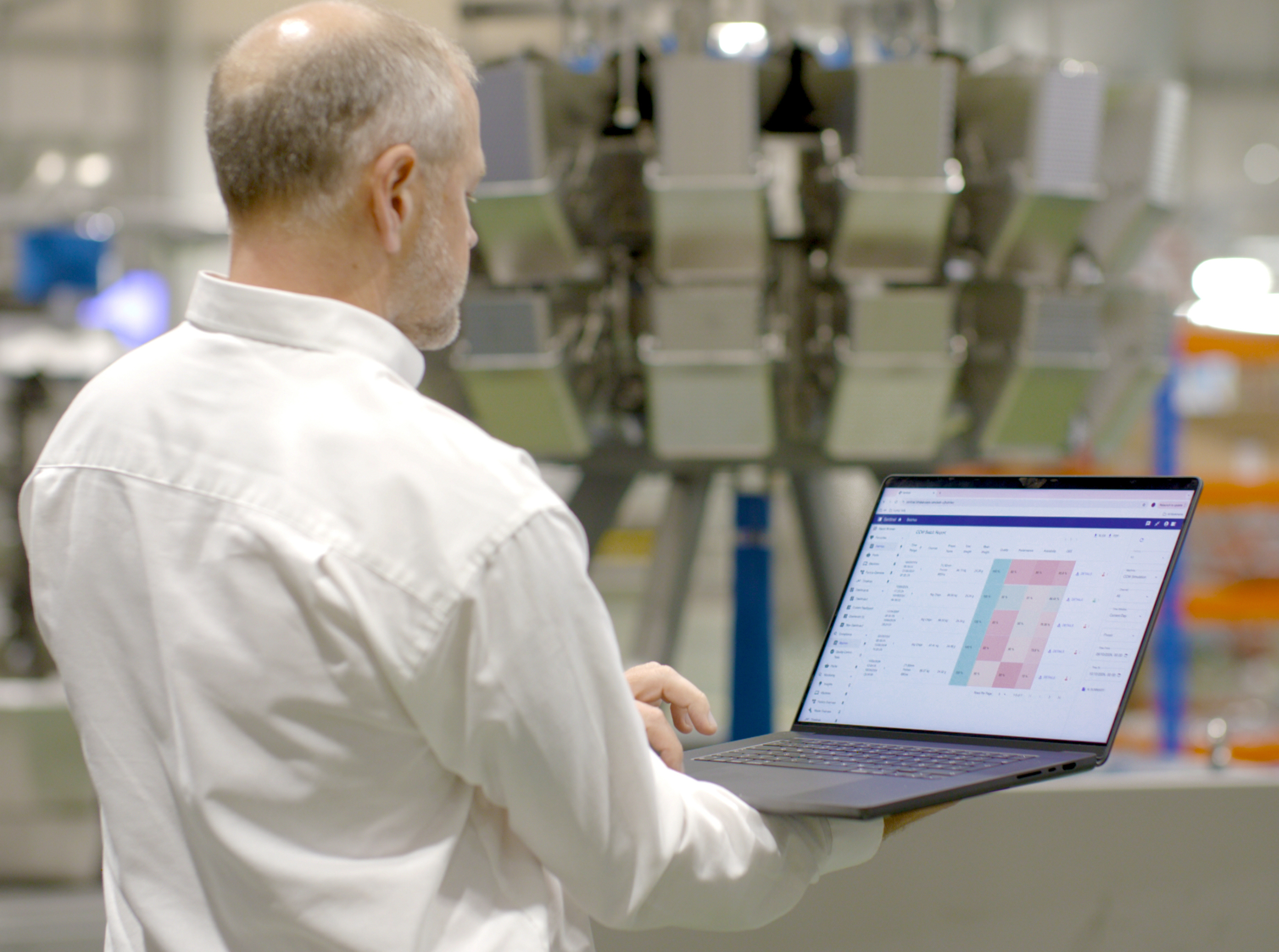
At CFIA Rennes, the Ishida France team will present a traysealer from its QX-500 range—an ultra-compact machine (46% smaller than the previous model) designed to improve production capacity and reduce energy consumption. The big news, however, is the artificial intelligence (AI) remote production management and reporting software: Sentinel 5.0. Launched in November 2024, Sentinel 5.0 offers food manufacturers a smarter, more consolidated, and in-depth analysis of their entire food production lines. Thanks to a generative algorithm based on the Ishida knowledge base, users can also receive personalized recommendations to optimize production. The manufacturer will also present the DACS-GN checkweigher, a recent range designed to meet the latest market requirements. To develop it, the Ishida teams focused on three main areas: electronics, software, and mechanical design. All DACS-GN models include a metal detector, as well as additional sensors for even more precise monitoring throughout the weighing process. Finally, two multihead weighers will also be present at the booth. Among them, the CCW-AS, a new-generation model, equipped with powerful and highly responsive radial feeders for superior conveying power, as well as new electronics and 15.6-inch touchscreens.
Metso annonce la nomination de Renaud Lapointe en tant que président de la zone de marché Europe et Asie centrale
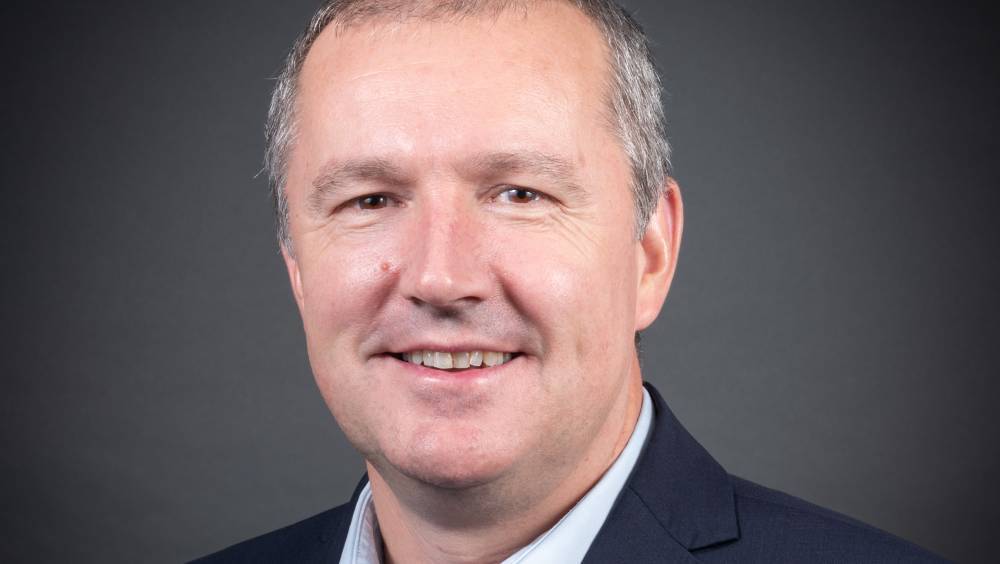
Metso a le plaisir d’annoncer la nomination de Renaud Lapointe en tant que président de la zone de marché Europe et Asie centrale. Il succède ainsi à Sasho Kitanoski, qui a pris d’autres fonctions au sein du groupe. « Je suis très enthousiaste à l’idée de franchir cette nouvelle étape dans ma carrière et d’avoir la chance de collaborer étroitement avec nos clients sur les marchés de l’Europe et de l’Asie centrale, aux côtés d’une équipe solide. Ce marché très important pour Metso nous offre de nombreuses opportunités de croissance », a déclaré Renaud Lapointe. Ce dernier apporte avec lui une solide expérience de la gestion réussie de la marque Metso dans le secteur des granulats. Avec près de 20 ans d’ancienneté, il possède une vaste expérience dans le secteur des granulats et dans l’industrie minière, ainsi qu’une connaissance approfondie des clients, des technologies, des produits et de l’organisation de Metso, ce qui lui sera très utile dans ses nouvelles fonctions.
Béghin Say, élue marque préférée des Français
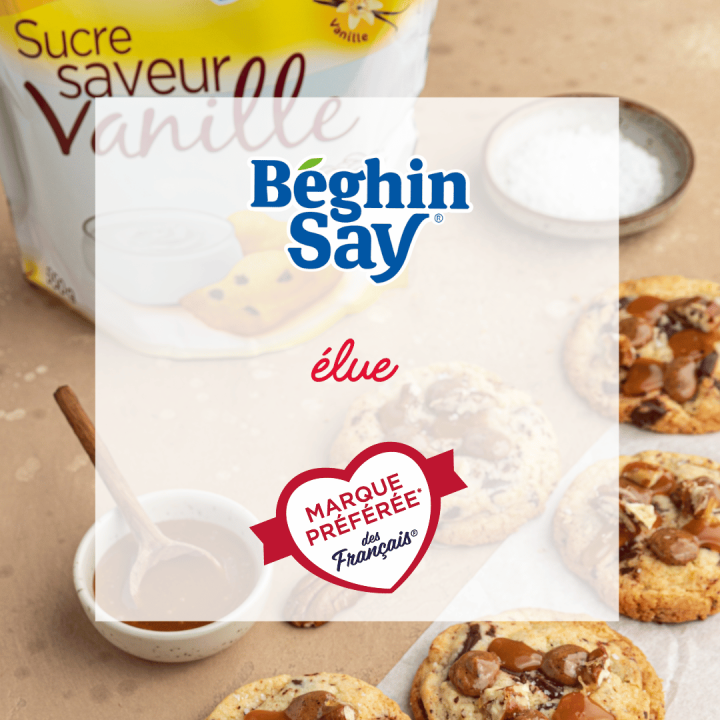 Béghin Say"
title="Copyright : Béghin Say"
/>
Béghin Say"
title="Copyright : Béghin Say"
/>
Cela fait 50 ans qu’elle est présente dans nos cuisines pour accompagner nos petits plaisirs gustatifs et affiche 7,5 millions de consommateurs (Source : Nielsen consommateur CAM P7 Total France). « C’est un honneur de voir Béghin Say recevoir le titre de “Marque préférée des Français” pour la première fois. Les consommateurs se sont exprimés, et cela récompense le formidable travail fait par nos coopérateurs et nos collaborateurs au quotidien », explique Capucine Duchesne, Chef de groupe marketing BtoC Béghin Say. Béghin Say s’est hissée sur la 1re place du podium en obtenant le plus grand nombre de « J’aime » après une étude réalisée du 6 au 7 mai 2024, sur le panel d’OpinionWay, auprès d’un échantillon représentatif de 1 097 personnes de la population française de 18 ans et plus. Pour rappel, la marque Béghin Say est née en 1973. Cette année-là, les deux entreprises sucrières familiales Béghin et Say s’unissent pour créer le no 1 français du sucre. Béghin Say est aujourd’hui consommée par 7,5 millions de consommateurs. Elle est la 1re marque de sucre de betterave en France, et également la plus connue avec un taux de notoriété assistée de 98 %. La marque commercialise aujourd’hui 30 références produits : sucre en poudre ou en morceaux, sucre en grains ou extrafin, saveur vanille, bio, sucre gros cristaux ou sucre & stévia... Béghin Say appartient au groupe coopératif Tereos qui compte aujourd’hui 10 700 agriculteurs coopérateurs sur l’ensemble du territoire, 9 sucreries (les usines dans lesquelles les betteraves sont transformées en sucre), et 4 usines de conditionnement en France.
Saint-Gobain Formula étend son usine de mélange au Royaume-Uni

Fournisseur de premier rang de produits industriels à base de plâtre et de gypse de haute performance, Saint-Gobain Formula a confié la réalisation « clés en main » de l’extension de son usine de mélange au Royaume-Uni à Actemium, marque de Vinci Énergies et spécialiste de la transformation industrielle. Ayant pour projet de moderniser et développer la production de son usine existante, Saint-Gobain Formula a, en effet, fait appel à Actemium Saint-Etienne Process Solutions pour définir conjointement une solution adaptée, évolutive, et en capacité de traiter une gamme de produits très large. Le mélangeur Sofraden doté de la technologie CIP (Clean In Place) est au cœur du process et garantit la non-contamination croisée entre les catégories de produits.
La genèse du projet
Après une collaboration étroite avec le client depuis septembre 2023, de façon à comprendre au mieux les besoins, les premières rencontres ont eu lieu en décembre 2023 afin d’analyser les conditions réelles du site. Au-delà d’un périmètre de fourniture étendu, Actemium prend aussi en compte la gestion des matières explosives (zonage ATEX), et les contraintes environnementales inhérentes à une telle construction. Actemium Saint-Etienne Process Solutions a également pris soin de collaborer avec Actemium Nottingham afin d’apporter un support local, gage de réactivité et d’un suivi de qualité. « Bénéficier de la collaboration avec Actemium Nottingham nous permet de nous rapprocher géographiquement du client et de le rassurer sur notre expertise, notre réactivité et notre support à long terme », nous confie le responsable commercial Actemium en charge du projet.
La solution elle-même
La nouvelle tour de mélange est en liaison automatique directe avec l'usine existante de Newark-on-Trent. Cette tour est conçue pour recevoir 3 lignes de production à terme. Une particularité supplémentaire est la connexion de la ligne à 5 systèmes d’emballage différents. La prestation étendue proposée par Actemium repose sur une collaboration étroite avec des sous-traitants locaux, de l’ingénierie pour le calcul des structures au montage complet sur site, en passant par le câblage électrique et la supervision sécurité dédiée. L’unité sera pilotée et supervisée par le logiciel de gestion de production « Prodose » édité par Courbon Software, autre filiale Actemium.
Innovative solutions to protect and secure the food industry
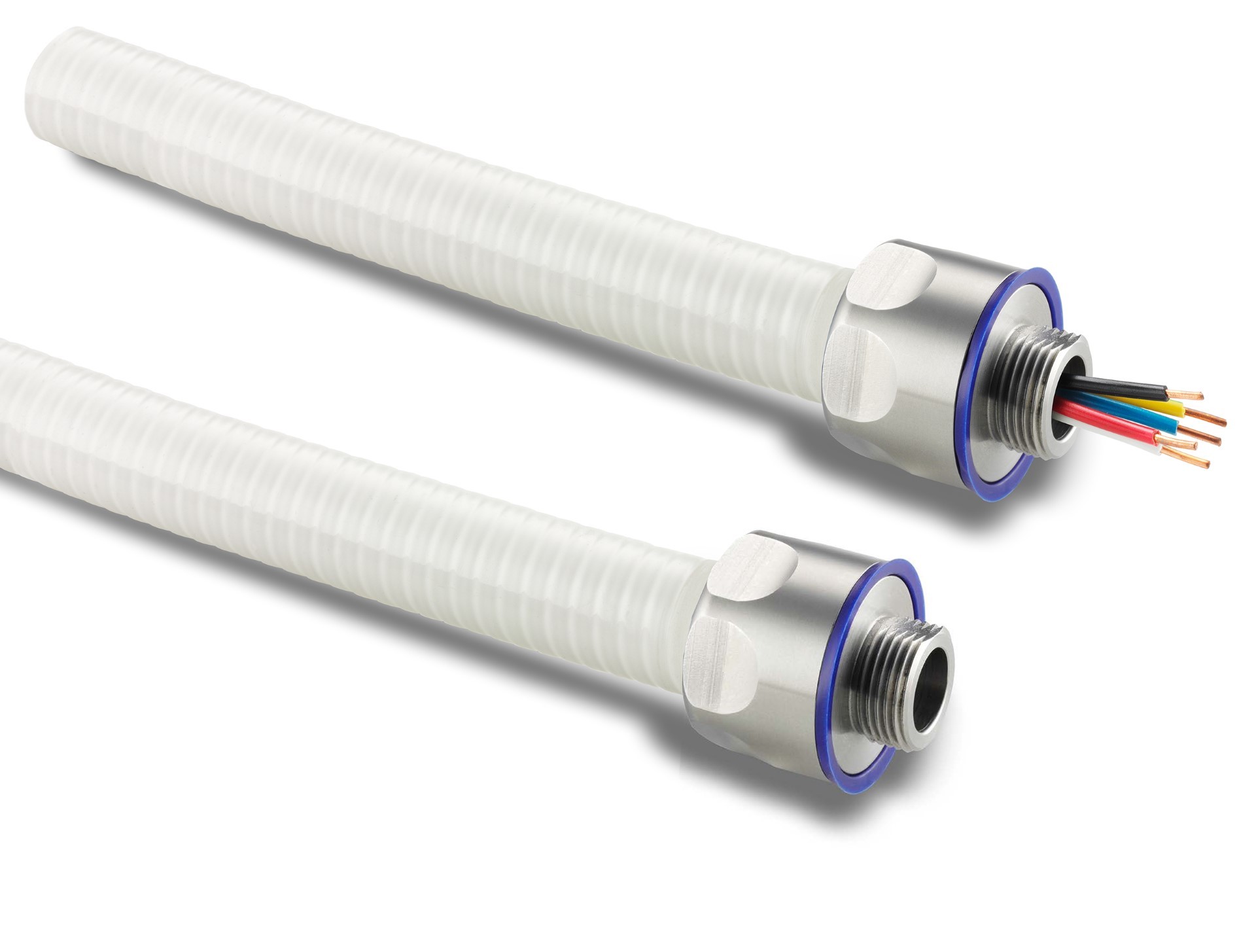
Les normes d’hygiène et de sécurité alimentaire de plus en plus strictes ajoutent une pression constante pour garantir la qualité des produits et la sécurité des consommateurs. Ces défis exigent une gestion efficace pour assurer la durabilité, la productivité et la conformité aux normes réglementaires. Dans cette optique, l’industriel ABB fournit de nouvelles solutions de produits d’installation Adaptaflex et PMA pour aider ses clients à relever ces défis. L’entreprise propose donc des gaines SAMHL flexibles en acier revêtu d’un matériau antimicrobien exclusif qui offrent une protection essentielle en empêchant la croissance bactérienne.
Réduisant les niveaux de bactéries de 99 % en 2 h (86 % en 15 min), ces gaines sont idéales pour protéger les câbles dans des environnements nécessitant des nettoyages fréquents. Leur surface lisse permet un nettoyage optimal, et elles offrent une haute résistance chimique et mécanique.
Adaptées aux températures extrêmes (-50 °C à + 130 °C) avec une résistance à la corrosion, elles sont flexibles et faciles à installer dans des espaces restreints, répondant ainsi aux besoins de l’industrie agroalimentaire. De plus, les colliers de serrage détectables Ty-Rap d’ABB sont une avancée majeure en matière de sécurité alimentaire et industrielle. Dotés d’un composite unique, ces colliers sont conçus pour être détectables par rayons X, détecteurs de métaux et systèmes de contrôle visuel. Idéaux pour les industries agroalimentaires, pharmaceutiques et autres secteurs sensibles à la contamination, ils évitent les risques en empêchant les résidus d’attaches de câbles de contaminer les produits finis.
Leur détection est possible avec des détecteurs de métaux réglés sur une sphère ferreuse d’un diamètre minimal de 1,5 mm et avec des équipements à rayons X.
Conformes aux normes EU HACCP et FSMA, ils sont disponibles en 2 versions, garantissant des normes élevées de sécurité alimentaire.
Open Modal: lifting of the gantries at the Provence West Terminal
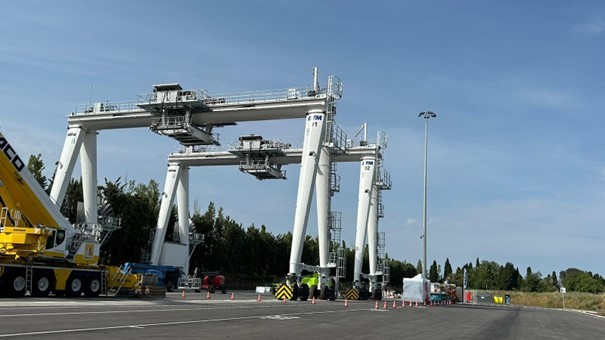
Réceptionnés fin mai et assemblés avec succès par les équipes de la société Künz sur place, ces équipements représentent un jalon crucial dans l'infrastructure logistique régionale et nationale. Les portiques, connectés au système ROS (Remote Operating System), permettront une gestion semi-automatique et un pilotage déporté des manutentions depuis le poste d’exploitation, améliorant ainsi l'efficacité opérationnelle et consolidant la position stratégique de Miramas en tant que hub pour le transport combiné en France et en Europe.
· Dimensions : 24 m de hauteur et 28 m d’entraxe ;
· Poids : environ 160 t ;
· Hauteur de levage sous spreader : 12,1 m (adapté pour 3 hauteurs de stockage + passage) ;
· Capacité de levage sous spreader : 40 t ;
· Spreader multimodal tournant ;
· Capacité de jusqu’à 30 manutentions par heure.
Le levage des portiques a été réalisé en 10 jours, avec un total de 15 techniciens de la société Künz mobilisés pour cette opération.
Bien que la technologie déployée ne soit pas exclusive à Open Modal et soit déjà utilisée en Europe par le secteur du transport maritime, elle représente une véritable prouesse technique et marque une première en France. Cela ouvre de nouvelles perspectives logistiques et économiques. La mise en exploitation complète du terminal est prévue pour mi-septembre. Cela inclut l'assemblage au sol, le levage en position nominale (effectif depuis le vendredi 7 juin), suivi de l'assemblage mécanique et électrique, ainsi que les tests et inspections réglementaires nécessaires pour assurer une mise en service réussie. En parallèle, la réception des reach stackers électriques cet été viendra renforcer davantage la capacité de décarbonation du TOP. Le TOP a été conçu pour répondre aux besoins du transport combiné rail-route. Implanté sur un site de 14 ha, le terminal est constitué de deux cours de manutention, une à portique et une à reach stacker, destinées à traiter simultanément 4 trains de 850 m. Les engins de manutention ainsi que les engins de manœuvre rail-route seront électriques. Les opérations de réception, de gestion, de contrôle et de sécurité sont digitalisées et interconnectées.
· Les unités de transport intermodal (UTI) entrants sont contrôlées et enregistrées au travers d’un Gate Operating System (GOS) ;
· Les portiques de manutention sont gérés de manière semi-automatique par un Remote Operating System (ROS) qui permet le pilotage déporté sur les postes de conduite installés dans le bâtiment d’exploitation ;
· Le Terminal Ouest Provence est géré par un Terminal Operating System (TOS) qui détermine les ordres à donner aux conducteurs de camions et aux engins de manutention afin d’assurer la fluidité sur le terminal, de gérer le stock d’UTI, d’optimiser l’usage des engins de manutention et d’assurer la traçabilité des mouvements d’UTI opérés sur le terminal.
All4Pack Emballage appoints a new director
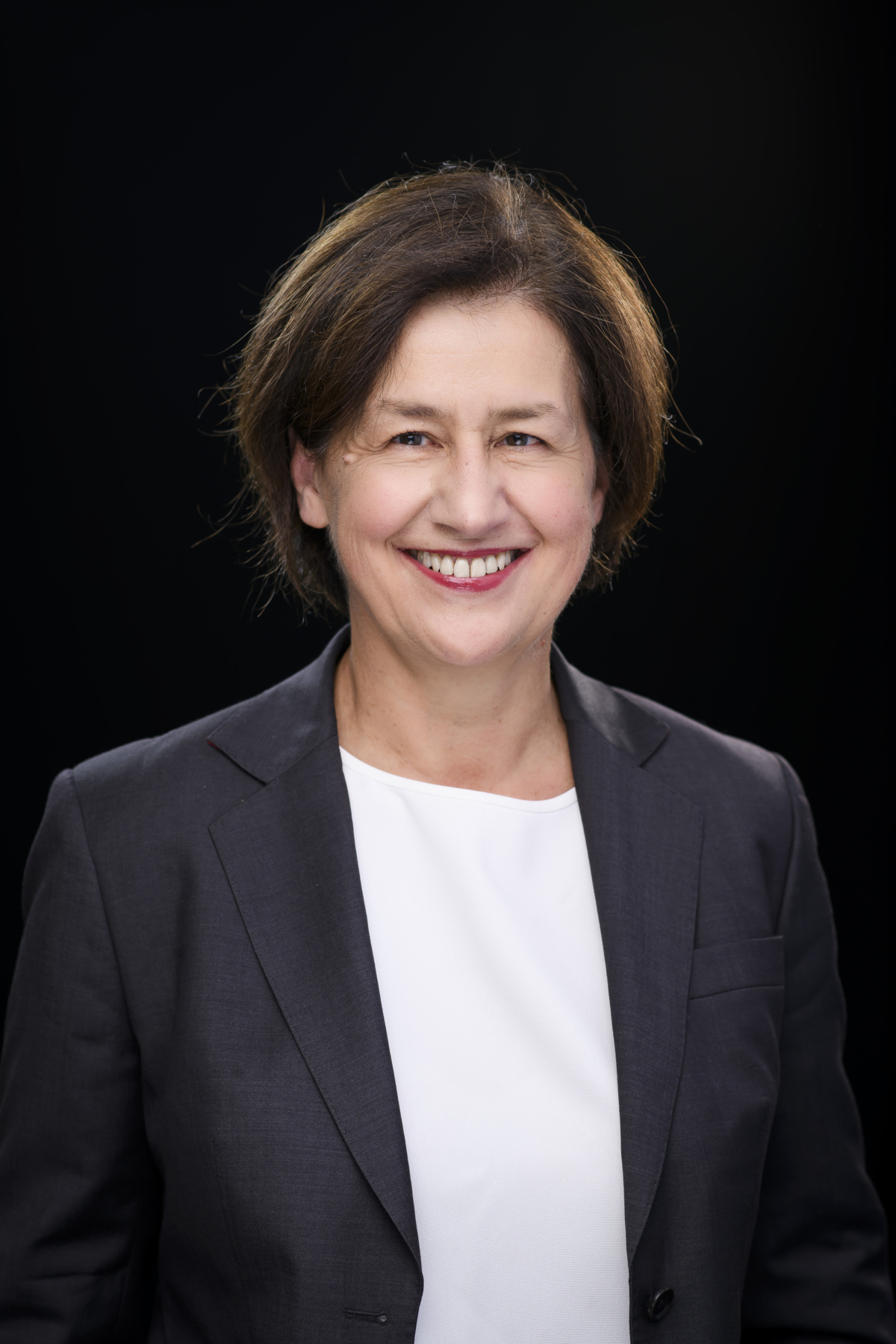
The latest edition has just taken place in Paris Nord Villepinte from November 4 to 7, 2024. Chantal de Lamotte will also take over the management of the Solutrans Show, while retaining that of Djazagro. The latter is placed under the responsibility of Laurent Noël, general director of the Comexposium division. A graduate of ISC Paris (Paris Higher Institute of Commerce), Chantal de Lamotte began her career at Sligos, which became Atos Origin, an IT services giant. She holds a position there in the sale of IT solutions intended for accountants and SMEs. She joins the Comexposium group as exhibitor manager at SIAL (International Food Show). In 2015, she took over the management of Gourmet Sélection, then that of Djazagro, a food production exhibition, and the Cheese and Dairy Products Show in 2019.
Banania fête ses 110 ans
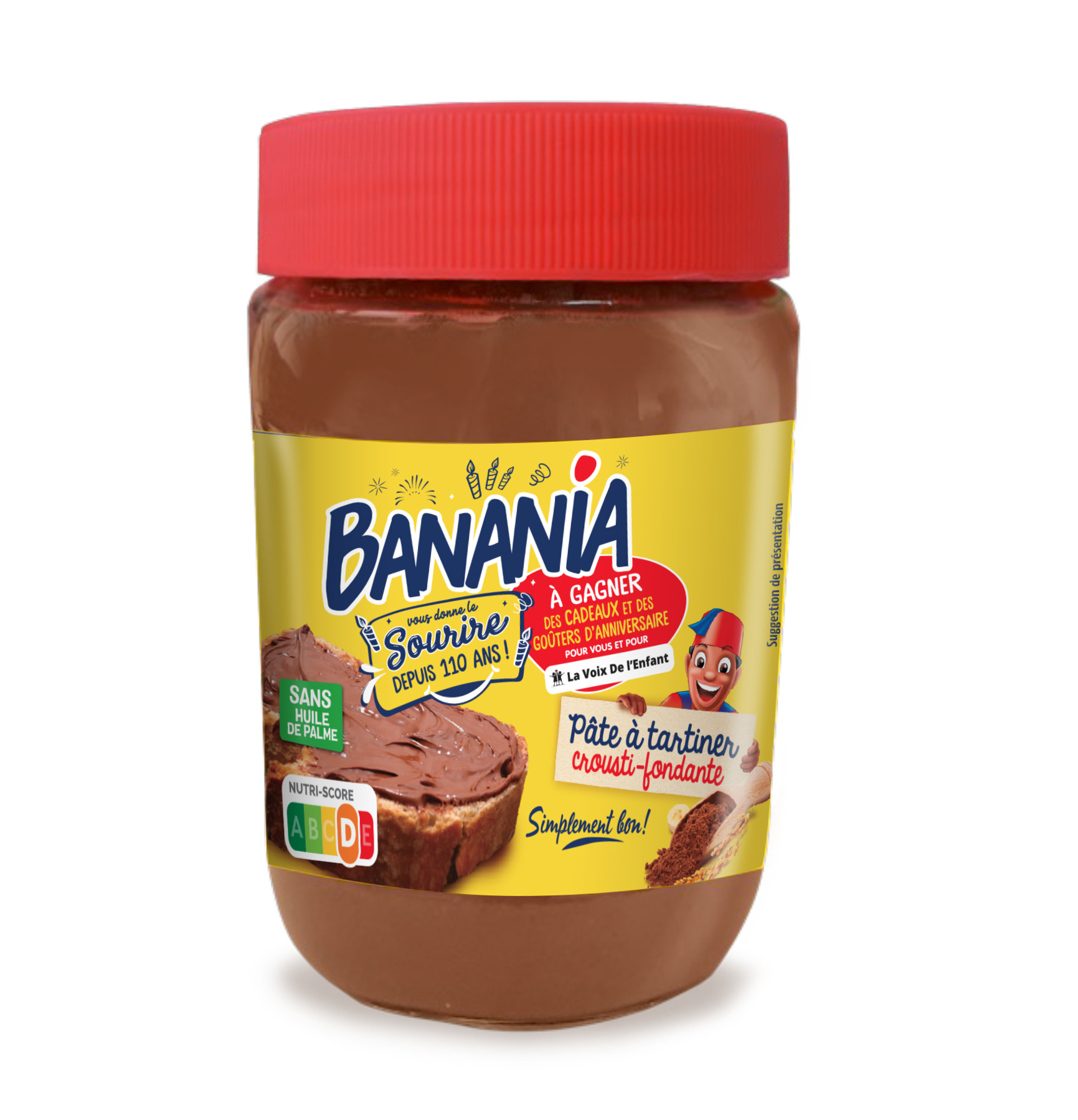
Rappelez-vous cette boisson du petit déjeuner, composée de cacao, de céréales et d’une touche de banane et de miel, sa boîte jaune ou figurait l’ami « Y’a bon » – personnage publicitaire. Eh bien Banania, marque iconique, inscrite dans le patrimoine et la mémoire collective de tous, fête ses 110 ans ! Et afin de célébrer ce siècle à figurer parmi les marques emblématiques les plus appréciées des Français, Banania mène une campagne d’envergure à plusieurs niveaux pour réaffirmer ses valeurs toujours basées sur le sourire, la joie, le partage et la gourmandise ! La marque a ainsi imaginé une campagne et des actions basées sur ses valeurs. Ainsi un partenariat avec La Voix de l’enfant (fédération qui regroupe plus de 80 associations membres en France et à l’international) a été signé. Un jeu-concours 100 % gagnant, relayé sur les emballages de plus de 1,4 million de produits de la marque jaune et rouge, est lancé et une grande diffusion d’actualités de la marque et de ses produits sont relayés sur les réseaux sociaux. Enfin la marque revisite 4 recettes emblématiques de la pâtisserie française : le banana bread, le gâteau au chocolat, la tarte poire-chocolat et le pain perdu. Allez, ne me dites pas que vous n'allez pas craquer avant la fin de l’année !
Signature de l’engagement autour d’un plan de souveraineté blé dur
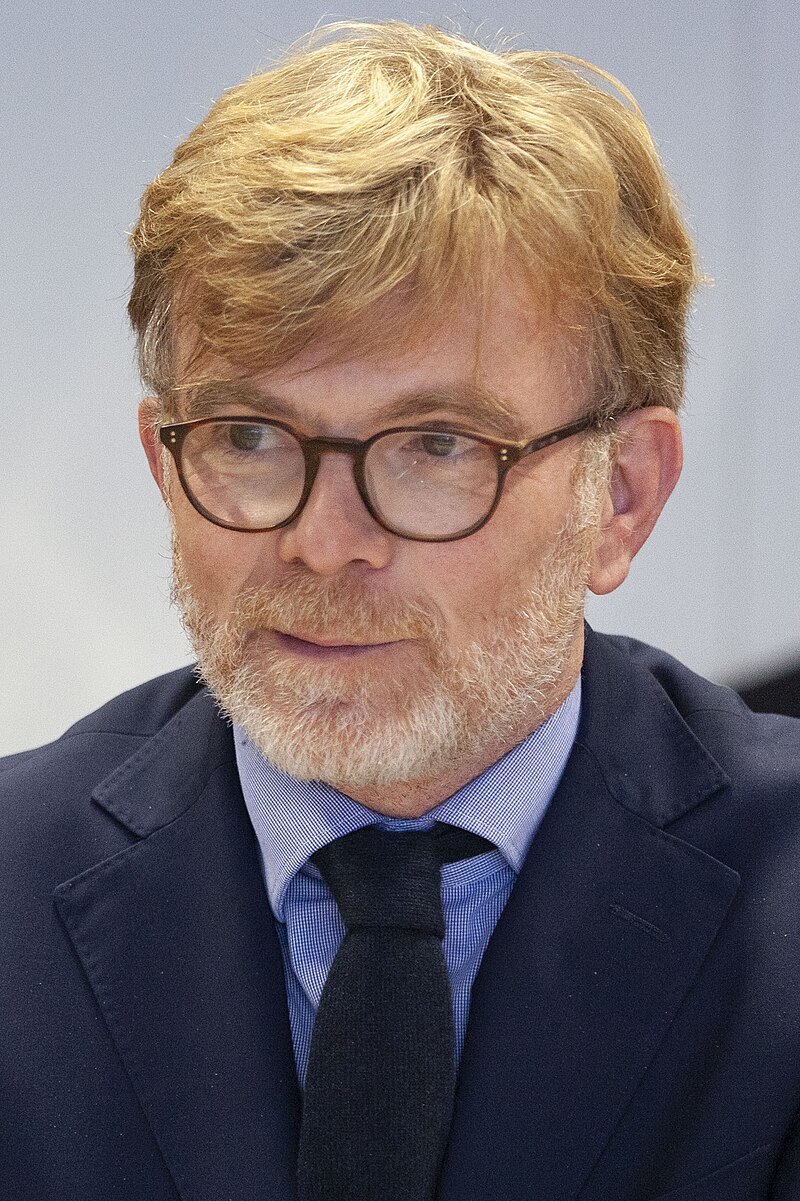
Alors que la consommation de pâtes ne cesse de croître (+ 8 % depuis 2019), les surfaces de blé dur ont été divisées par deux en moins de 15 ans. Cette contraction de la production est essentiellement due à un déficit d’attractivité de la culture pour différentes raisons : insécurité technique, le blé dur sensible aux aléas météorologiques, insécurité commerciale avec une forte dépendance aux marchés internationaux, besoins de R&D, etc. Par ailleurs, l’industrie pastière ne couvre qu’une partie de la consommation nationale (35 % des volumes en 2023). Face à ce constat, le ministre a signé la proposition de plan de souveraineté blé dur porté par la filière et par intercéréales. Organisé autour de 3 volets concernant la sécurisation de la filière, sa décarbonation et la sélection variétale, ce plan a pour objectif de proposer à tous les maillons de la filière des solutions concrètes de court, moyen et long terme à travers plusieurs actions complémentaires. Dans le détail, il visera à travers un processus de co-construction entre les filières, l’interprofession et les pouvoirs publics à : enrayer le déclin constaté, développer les surfaces ; reconquérir des parts de marché pour les pâtes pour arriver à 45 % de parts de marché d’ici 2033 ; réduire l’empreinte carbone pour inscrire la filière sur le long terme ; sécuriser une partie de la filière en instaurant des contrats entre les différents maillons (producteurs et industriels) et par la réflexion sur les différents mécanismes assurantiels. Ce plan est prévu sur une durée initiale de 5 ans, avec un montant de 43 M€. `
Sur l’axe Strasbourg-Rouen, Soprema a inauguré une nouvelle ligne de fret ferroviaire

La remise en fonctionnement de cette liaison est-ouest lancée en janvier de cette année permet d’assurer le transport de matières premières et de produits finis entre l’usine de l’industriel de Strasbourg et ses dépôts en région parisienne et à l’ouest du pays en réduisant les émissions de gaz à effet de serre de plus de 50 %. Après la livraison par barge sur le Rhin – projet nommé « Calypso » –, Soprema poursuit en effet sa transition vers l’utilisation de transports plus durables en favorisant le report modal de la route vers le rail. La remise en activité de la ligne ferroviaire des ports de Strasbourg vers Rouen permettra ainsi à l’industriel d’éviter la circulation de 200 à 400 camions et de réduire de plus de 50 % les émissions de gaz à effet de serre liées à ce transport. Cette initiative, réalisée avec Fret SNCF, l’opérateur ACPMC et l’appui des Ports de Strasbourg, permettra de faciliter la distribution dans les régions ouest et parisienne avec une livraison en 3 jours depuis son usine de Strasbourg. L’acheminement final, de la gare de Rouen vers les dépôts de la région parisienne et de l’ouest, sera effectué en camion traditionnel pour le moment. Une belle initiative qu’il est bon de souligner. Espérons que d’autres industriels les rejoindront afin de renforcer l’utilisation du fret ferroviaire à l’échelle régionale comme nationale.
Launch of Tetra Recart for pet food packaging

It is also an opportunity for Normandise Pet Food, a specialist in the production of wet food products for dogs and cats, to present a new range of food brick recipes. “This is a strategic turning point in our packaging offering,” declares Jean-Charles Duquesne, co-general manager of Normandise Pet Food. “We chose this range to meet the needs of distributors who want to optimize their storage and logistics, but also of consumers, by providing them with packaging that reduces carbon emissions by 81% compared to a can. Not to mention that the packaging is very practical and hygienic. We are proud to present our new range at Interzoo for our 30th anniversary. We will have our first products marketed from September,” continues the latter. The Tetra Recart packaging solution meets the new and changing needs of consumers, producers and distributors. It has various advantages: respect for the environment: made from 71% cardboard from sustainably managed and FSC-certified forests; practicality and hygiene: packaging with easy opening and closing for optimal use, which allows recipes to be kept fresh over several meals after opening, while avoiding unpleasant odors in the refrigerator; innovation: a unique design that saves space during transport and storage and packaging that is perfectly suited to small spaces.
Creation of FrigorTec France SAS

The company develops, manufactures and markets refrigeration solutions for a wide range of applications, including grain cooling, crane air conditioning, hay drying, thermal pest control and air purification. With service and sales locations in Germany, Austria, India and the USA, the company is active in more than 100 countries and is distinguished by in-depth know-how and extensive experience. With the creation of FrigorTec France SAS, the company is further strengthening its presence in order to be able to offer its French customers serious technical advice and excellent on-site service at any time. “We are pleased to mark a new milestone in our international expansion with the creation of FrigorTec France SAS. France is an important market for us and establishing our company there underlines the importance we attach to this country,” says Ralph E. Kolb (CEO). In addition to Eberhard Fröscher, Maxime François completes the sales team for France. The latter, an engineer with extensive experience in the subject of quality assurance of stored cereals, will operate from the new office in Reims. Granifrigor grain coolers have an excellent reputation in the sector when it comes to preserving the health quality of stored grains through a natural solution. In addition, FrigorTec offers with the Debugger range high-performance devices for thermo-disinfestation, used among others in the food industry to fight against parasites without chemicals. Already today, grain warehouses and mills around the world trust FrigorTec refrigeration solutions and appreciate the high competence of its advisors. FrigorTec is known for its practical and efficient solutions, individually tailored to each customer and their own on-site conditions.
Christophe Castaner, re-elected president of the Supervisory Board of the port of Marseille Fos

“I am approaching my new mandate, a “complete” mandate, after this first chapter of a year and a half, with even more enthusiasm. The renewed confidence of the members of the Supervisory Board obliges me. I also feel proud, because I now know the strengths of the port; I measure all the resilience that we have demonstrated in these times of chronic instability, demonstrating a constantly renewed capacity for adaptation, and therefore I am confident. So much will come to fruition by 2029! I am honored to be part of the adventure and I will make my modest contribution to making Marseille Fos a safe port of its strengths, proud of its history and a precursor of transitions,” expresses Christophe Castaner. The Supervisory Board of the large maritime port of Marseille makes strategic decisions for the public establishment, particularly large-scale investments, and controls its management. It meets at least once a quarter and is made up of 18 members appointed for 5 years: 5 qualified individuals appointed by the State, 5 representatives of the State, 5 representatives of local authorities and their groups and 3 staff representatives of the establishment. The Supervisory Board is developing the port’s future 2025-2029 strategic project.
A port in full transformation
The port of Marseille Fos is going through a period of major, unprecedented strategic transformations, renewing the foundations of its economic model. To achieve this, several very large-scale projects are being undertaken, and the 2025-2029 period will be decisive. The future strategic project is being built and is structured around 5 hubs – traffic & logistics, passengers, fuel & energy, industry and the digital hub – which will be drivers of economic development, energy sovereignty and the influence of the port area. , territory and country. “Alongside Hervé Martel and the management board, I will carry this ambition of successfully carrying out the spectacular transformation of the port of Marseille Fos as part of the energy transition. It will represent, for the port alone, €1.7 billion of investment over the next 10 years. We are determined to reduce our environmental footprint by promoting sustainable practices and investing in innovative solutions for a successful energy transition, serving the region and France,” concludes Christophe Castaner.
AMP and AHS strengthen their teams

In a decisive move to drive growth within the European market, AMP (Advanced Material Processing), a global material handling and processing specialist (which incorporates the expertise of Kason Corporation and Marion Process Solutions) and AHS (Automated Handling Solutions), which brings together Spiroflow and Cablevey Conveyors, have just announced the addition of three new regional directors to their European sales teams. These appointments will support AMP and AHS’ ongoing commitment to providing innovative solutions to their clients.
Switzerland: Gericke inaugurates the extension of one of its factories
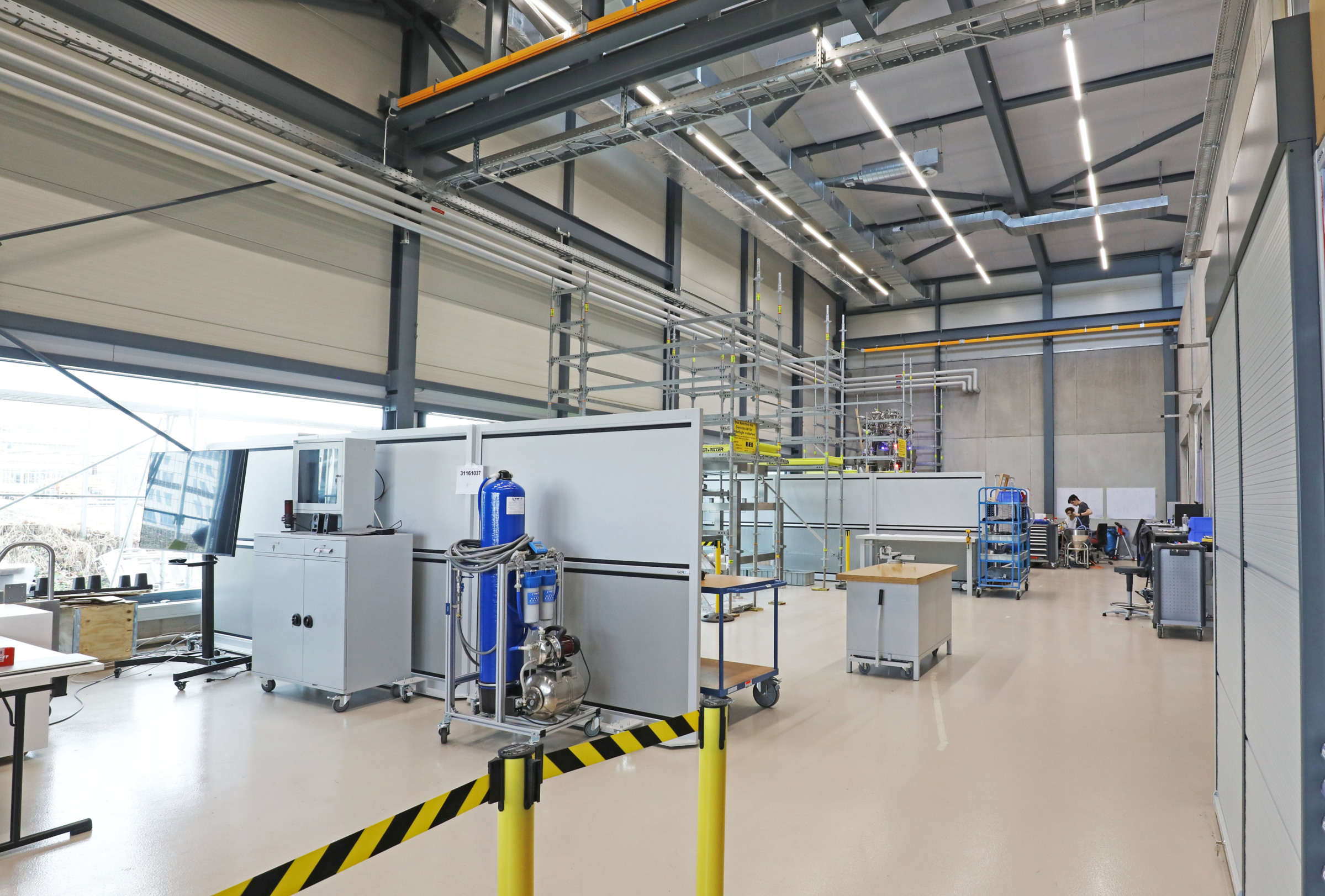
Gericke, one of the world's leading suppliers of innovative solutions for the processing and handling of powders, has indeed inaugurated a new production workshop in its Swiss factory in Zurich. This state-of-the-art facility marks a significant milestone in the company's commitment to meeting the growing demand for advanced technologies in the powder processing industry. This production space is equipped with the latest advances in manufacturing technology and will allow:
- an increase in production capacity: the new production space significantly increases Gericke's overall production capacity, enabling the company to meet the growing demands of its global customer base;
- a dedicated FAT (Factory Acceptance Test) area: the installation includes a large area for factory validation testing. Gericke's strong growth in continuous processing has created a great need for additional space;
- environmental sustainability: the manufacturer is committed to sustainable development, and the new production space integrates environmentally friendly practices, such as high energy efficiency systems and more than 1,200 m2 of solar panels. This will cover 60% of the energy demand at the Gericke site in Switzerland.
Denis-Sertac changes brand

Denis-Sertac announced the creation of the Industries by Denis brand, marking a new era in the development of the Denis group. This common brand will now be adopted by all companies in the group, namely Denis SAS, Denis-Somain SAS, Somain-Sécurité SAS, Denis-Sertac SAS, Denis-Protech SAS and Denis-Somain-Maintenance SAS. The result of in-depth reflection, Industries by Denis has adopted a more modern and dynamic visual identity, which better reflects the values and ambitions of the company. This new brand, effective March 25, 2024, will allow the company to assert its positioning and make all of its activities known to its customers and partners. This commercial name does not bring any change to the company name of Denis-Sertac SAS.
The Mousset-Jetransporte group has signed the acquisition of the company Europe Trans Route (ETR)
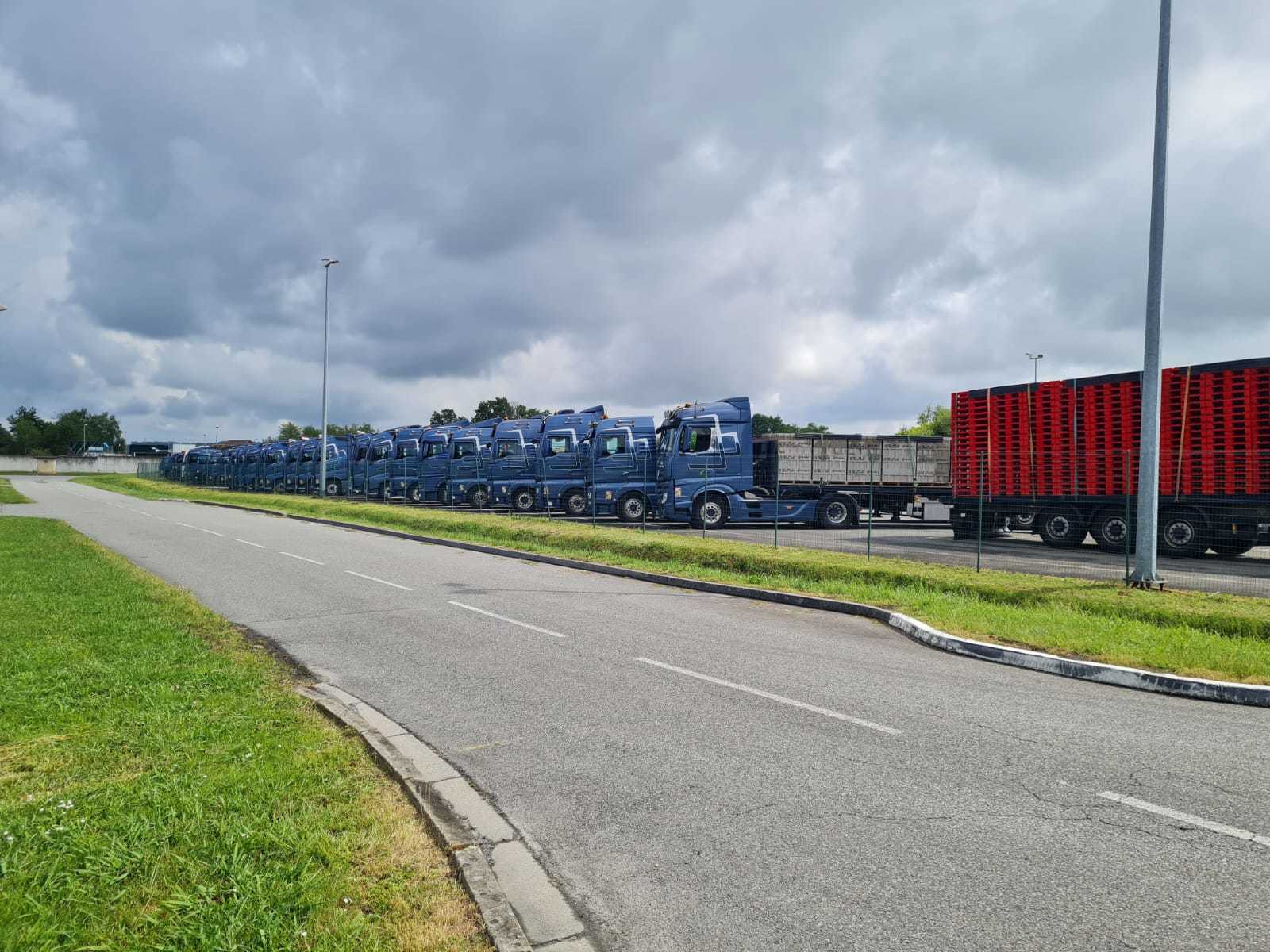
Created in 1989 by its current directors, Claude Pigot and Daniel Curutchet, ETR is located in Serres-Castet north of Pau. Over the years, the family business, which today has around forty employees, has specialized in very demanding transport services serving the construction industry (80% of customers) and industry. South of a Nantes-Lyon axis, with daily services to New Aquitaine, Occitanie, the South-East, ETR is dedicated to the transport of machinery, dangerous materials, industrial waste, and the organization exceptional convoys. The Mousset-Jetransporte group, through its subsidiary Avilog, is historically very established in the Nouvelle-Aquitaine region with its on-farm transport activities. Frédéric Leblanc, CEO and Karl Briens, general manager, immediately saw the strategic interest of a merger with ETR, to consolidate the positions of the industrial transport division in the South-West region. : “The Mousset-Jetransporte group, through its subsidiaries Nego Transports, Verriere and Pineau, already has extensive know-how in these very specific transports, located in the great North-West. The acquisition of ETR allows us to benefit from solid expertise while deploying new positions in the South-West,” explains Frédéric Leblanc. The transition promises to go smoothly since it is Antoine Brieu, 53 years old, and until now responsible for the operation of, who will take over the management of the company, accompanied for 6 months by Claude Pigot, the one of the two ceding managers. “We already have a team of more than 400 employees on our various sites in the South-West region. We will very quickly allow the ETR team to get to know its new colleagues and I have no doubt that the collaborations will be fruitful,” explains Karl Briend, who led the entire merger operation between the two companies.
Electrical connection at the shore: let’s go!
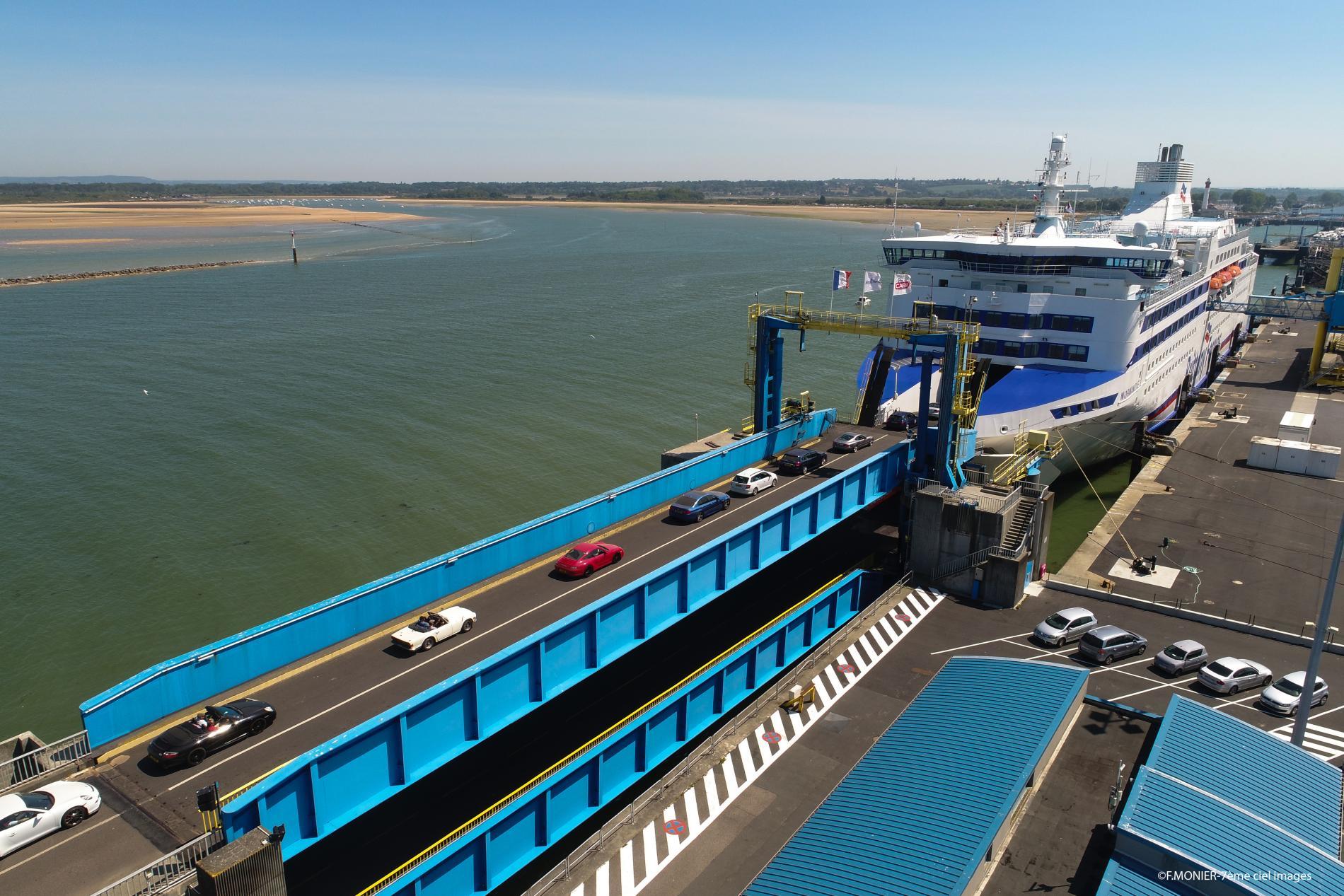
In 2030, the shoreside electrical connection of certain ships will be compulsory in order to contribute to the reduction of greenhouse gas emissions. Ports de Normandie wishes to anticipate by offering this service in all of its 3 ports. Indeed, in the context of the fight against climate change, the European Commission has presented a set of legislative proposals which aim to achieve carbon neutrality in 2050 and to meet the objective of reducing greenhouse gases by 55% in 2030 (compared to 1990). The obligation of shoreside electrical connection for certain ships from 2030 will make it possible, among other things, to contribute to this (FuelEU Maritime regulations, AFIR). In this context, Ports de Normandie has taken the lead by signing a partnership with EDF with a view to establishing a roadmap to meet these obligations, or even anticipate them. A first study was thus carried out which made it possible to list the terminals subject to the obligations; study the feasibility of an electrical connection to the platforms concerned and estimate the electrical power requirements and associated costs. Following this study, the representatives of Ports de Normandie decided to give the start of this project. They thus voted for a budget of €900,000 in order to carry out the necessary technical and regulatory studies. The ports concerned are: port of Cherbourg, port of Caen-Ouistreham, port of Dieppe. The work should begin in 2024, port by port, quay after quay, so that in 2027, i.e. 3 years before the regulatory obligation, Ports de Normandie can offer this service to certain companies in all of its 3 ports.
Franck Laborde, again at the head of the AGPM
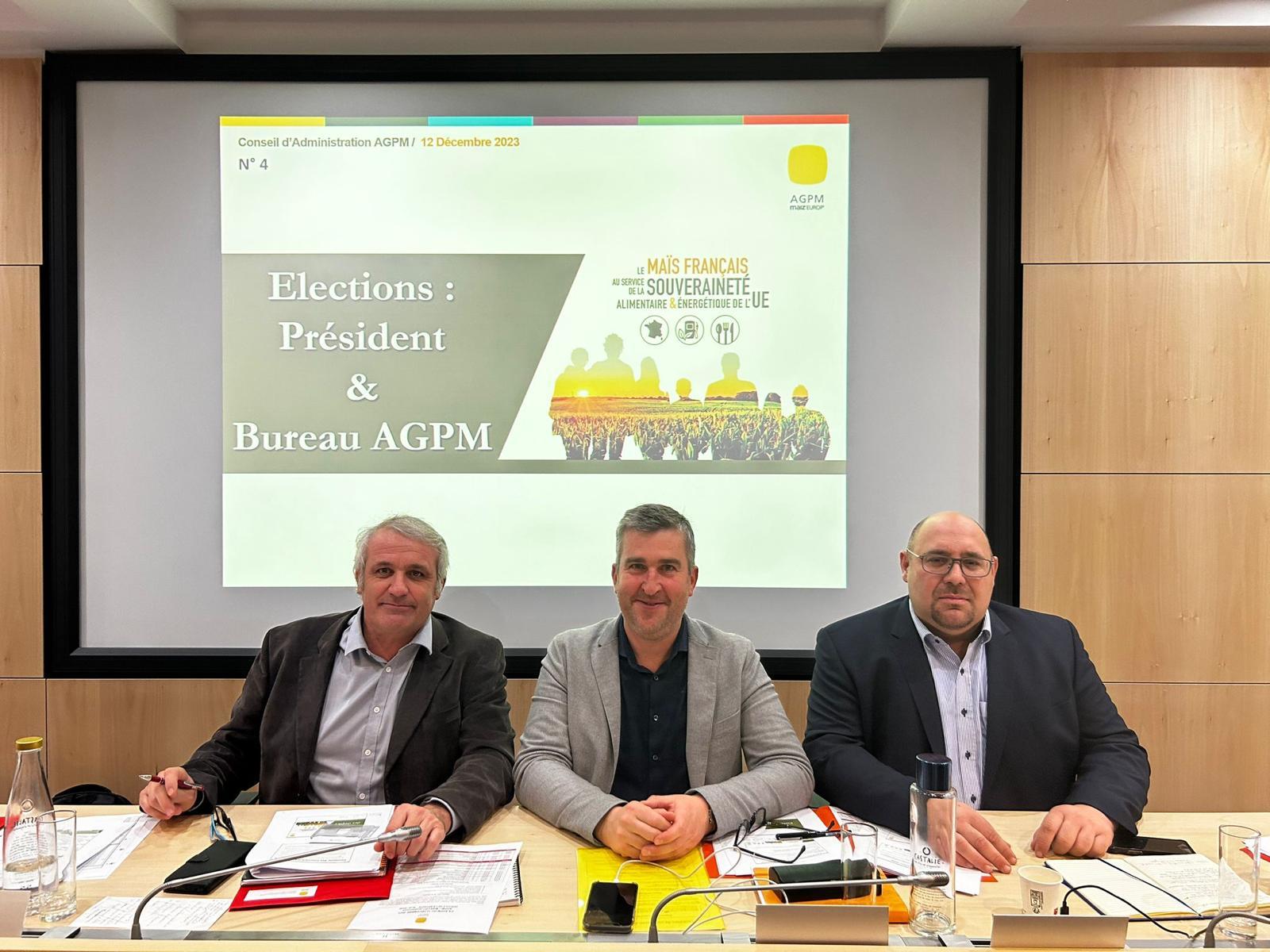
At the end of last December, the administrators of the AGPM (General Association of Corn Producers) voted in favor of the re-election of Franck Laborde as president of the organization for a second one-year term. Aged 54, Franck Laborde is a farmer in the Pyrénées-Atlantiques, installed in GAEC with his brother on a 100 ha irrigated farm growing seed corn, grain corn and sweet corn. Franck Laborde joined the AGPM board of directors in 2006, then the office, as general secretary in 2017, before being elected to the position of president in February 2023. At the same time, he is also a member of the office and chairman of the FNSEA risk management commission. He wishes to continue the trajectory taken during his first mandate and continue with commitment to defend the interests of French corn farmers and its sectors, promote the assets of the crop and strengthen corn production and its outlets across all territories. Among the priorities defended by the president of the AGPM for this new mandate: guaranteeing access to all the means of production necessary for corn cultivation, first and foremost access to water and innovations; maintain the competitiveness of farms and fight against distortions of competition and the inconsistency of French and European public policies which are making us walk on our heads, with a particular point of attention on the Mercosur file; place corn cultivation at the heart of solutions to the major challenges of regaining our French and European food and energy sovereignty as well as the fight against climate change and the preservation of biodiversity. Some changes should be noted in the composition of the office: Sébastien Méry (Loiret) was elected secretary general, replacing Jean-Marc Schwartz (Alsace) who takes the place of treasurer replacing Anne-Claire Vial (Drôme) who is retiring of its functions. Also note: the arrival of Gérald Bacconnier (Puy-de-Dôme) within the office made up of 16 producers. (In photo, from left to right: Franck Laborde, president – Sébastien Méry, general secretary – Jean-Marc Schwartz, treasurer)
Baoli launches its new “KBE” range of electric front forklifts…
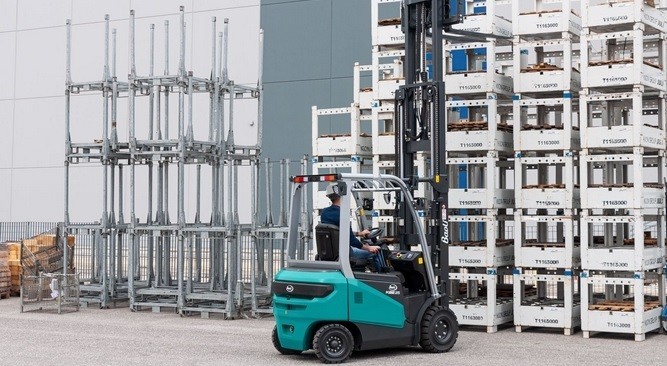
Baoli launches its new “KBE” range of electric front forklifts… Forklift manufacturer Baoli, a member of the Kion Group, presents a new series of electric forklifts which will be deployed in Europe, the Middle East and Africa. Optimized to obtain the best cost/efficiency ratio, KBE front-ends are designed for applications requiring lifting capacities of 2.5 to 3.5 t. They are used in almost every industry: from retail to manufacturing to materials trading, indoors and outdoors. In a context of environmental sensitivity and mixed indoor/outdoor use, electric motorization is becoming increasingly important. In order to meet this growing demand, Baoli has just developed a new range of electric trolleys. The KBE 25-30-35 models for a capacity of 2.5 t, 3.0 t and 3.5 t. “In terms of quality and reliability, we are setting new standards in our market segment, offering our users, at an affordable price, all the performance criteria required for their activity,” explains Olivier Le Bozec, national sales manager. from the Baoli brand. “Our new KBE series therefore covers all standard applications in the field of handling. » Robustness and safety for a wide range of applications Their work power comes from 80 V lead-acid batteries, with a capacity of 360 to 450 Ah for the 2.5 t models and 500 to 600 Ah for the 3.0 t and 3.5 t models. Maintenance-free lithium-ion batteries will also be available soon. “Our carts benefit from solid construction with rigorous manufacturing standards. They are designed to offer the greatest possible duration of uninterrupted operation, always with the safety of our customers as an absolute priority,” continues Olivier Le Bozec.
The Mousset-Jetransporte group has signed the acquisition of the company Europe Trans Route (ETR)
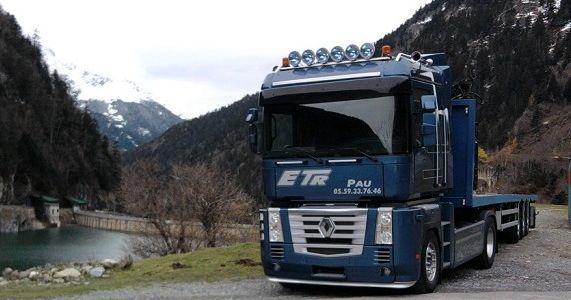
Created in 1989 by its current directors, Claude Pigot and Daniel Curutchet, ETR is located in Serres-Castet north of Pau. Over the years, the family business, which today has around forty employees, has specialized in very demanding transport services serving the construction industry (80% of customers) and industry. South of a Nantes-Lyon axis, with daily services to New Aquitaine, Occitanie, the South-East, ETR is dedicated to the transport of machinery, dangerous materials, industrial waste, and the organization exceptional convoys. The Mousset-Jetransporte group, through its subsidiary Avilog, is historically very established in the Nouvelle-Aquitaine region with its on-farm transport activities. Frédéric Leblanc, CEO and Karl Briens, general manager, immediately saw the strategic interest of a merger with ETR, to consolidate the positions of the industrial transport division in the South-West region. : “The Mousset-Jetransporte group, through its subsidiaries Nego Transports, Verriere and Pineau, already has extensive know-how in these very specific transports, located in the great North-West. The acquisition of ETR allows us to benefit from solid expertise while deploying new positions in the South-West,” explains Frédéric Leblanc. The transition promises to go smoothly since it is Antoine Brieu, 53 years old, and until now responsible for the operation of, who will take over the management of the company, accompanied for 6 months by Claude Pigot, the one of the two ceding managers. “We already have a team of more than 400 employees on our various sites in the South-West region. We will very quickly allow the ETR team to get to know its new colleagues and I have no doubt that the collaborations will be fruitful,” explains Karl Briend, who led the entire merger operation between the two companies.
Transport pneumatique de poudre de cacao très cohésive et utilisée pour la production de boissons chocolatées
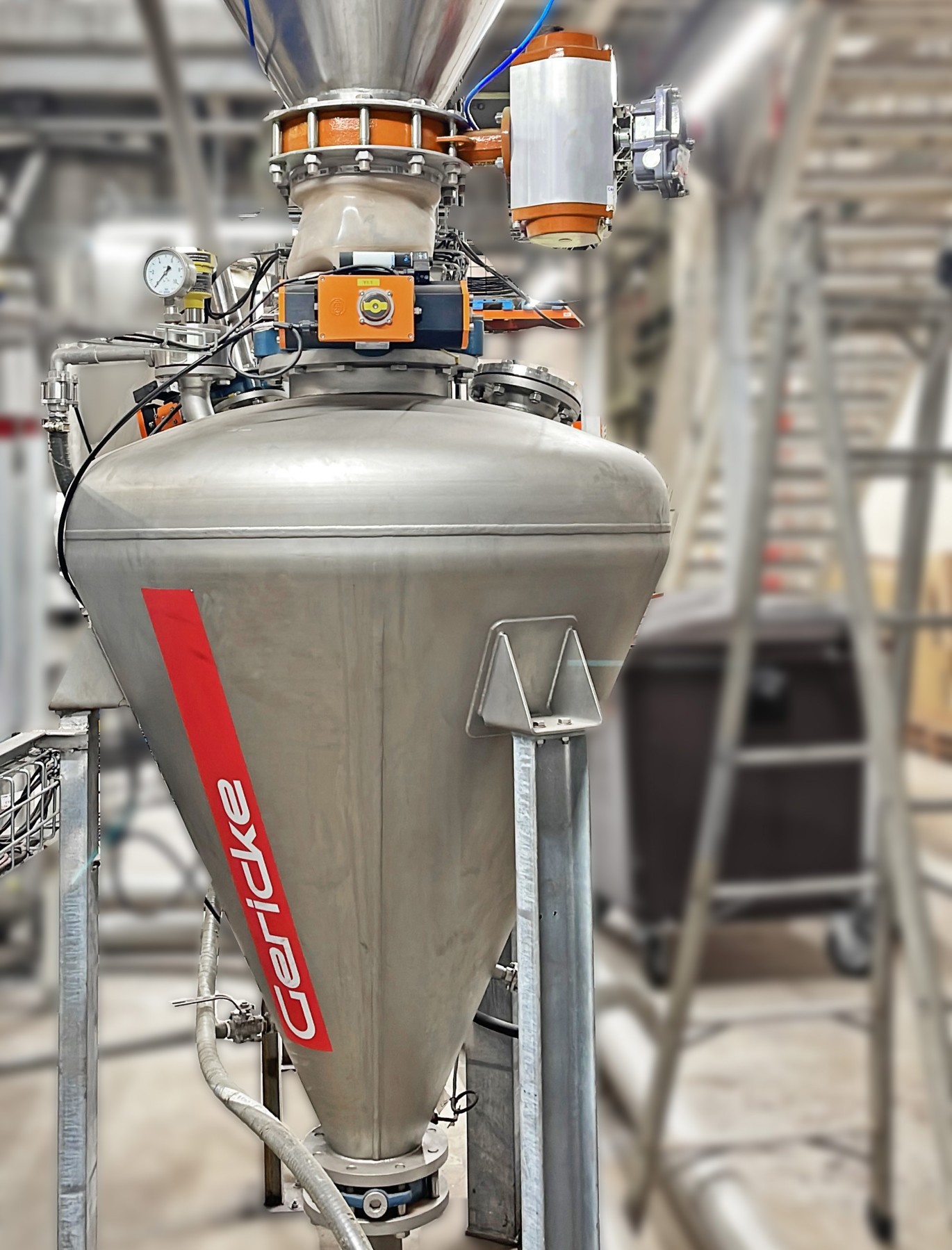
Cocoa powders are used for their characteristic taste and color in chocolate drinks. Finely ground cocoa is usually mixed with other ingredients to produce powdered instant drinks. Handling cocoa powder can be tricky due to its nature and fineness. Gericke has extensive expertise in pneumatic cocoa transport techniques used to feed mixing lines for beverage production. Cocoa powder must be processed at temperatures below 30°C and under very dry conditions. In fact, it is a hygroscopic product which absorbs humidity and forms agglomerates, which affects its taste and makes it delicate to handle. It is therefore important to have a sealed processing system that protects the product from possible contamination and interaction with the external environment. Gericke offers two systems for pneumatically conveying powders. In a dilute phase pneumatic conveying system, the product is fed into the piping through a rotary valve. The transport gas is generally generated by a booster operating at a pressure less than 1 bar. This technology is characterized by high air speeds, generally above 23 m/s, and a low concentration of powders in the gas flow. Conveying hygroscopic powders containing fat (cocoa powder typically has a proportion of 10-20%) at high speeds can result in the formation of a layer of product in the piping, which is not desirable for hygiene issues and above all can lead to blockage of the pipes. With the PulseFlow PTA dense phase pneumatic conveying system supplied by Gericke, cocoa powder is transported in the form of slowly moving product caps. The system consists of a pressure vessel called a shipping airlock, supplied with compressed air by a compressor at a minimum pressure of 4.5 bar. This high available air pressure will make it possible to load cocoa caps into the pipes which will be able to move at low speeds in the pipes (less than 10 m/s) thus reducing the risk of riprap on the line.
Envea: two acquisitions and an anniversary

The former designs gas analyzers and emissions monitoring solutions for a wide range of environmental and industrial applications. CAI has installed more than 30,000 analyzers in a wide range of markets, including process industries and industrial motors. Its analyzers are based on a series of technologies, such as chemiluminescence, Fourier transform infrared (FTIR), non-dispersive infrared (NDIR), flame ionization detection (FID), paramagnetics and spectroscopy. photoacoustic infrared (PAS), which provide reliable and precise measurements of virtually all types of gases. This acquisition will enable Envea to expand its product range and presence in the attractive vertical markets in which CAI operates, such as process, including the emerging hydrogen economy. Earlier this year, Envea also completed the acquisition of Hycontrol Ltd, headquartered in Redditch, England. Hycontrol is a growing, cutting-edge company specializing in level measurement, silo protection and foam control applications with a leading range of products and applications. Hycontrol's reach will be expanded through Envea's global sales and distribution network, while new technologies complement Envea's existing offering. In addition, this year is marked by its 45th anniversary. For nearly half a century, Envea has remained faithful to its mission of providing innovative solutions for the protection of life and the planet. Envea has always been at the forefront of developing cutting-edge technologies and solutions to tackle the most pressing environmental problems. Through a comprehensive range of products and services, the company helps industries, governments and communities effectively monitor, control and manage their impact on the environment.
Barometer of freight transport and logistics
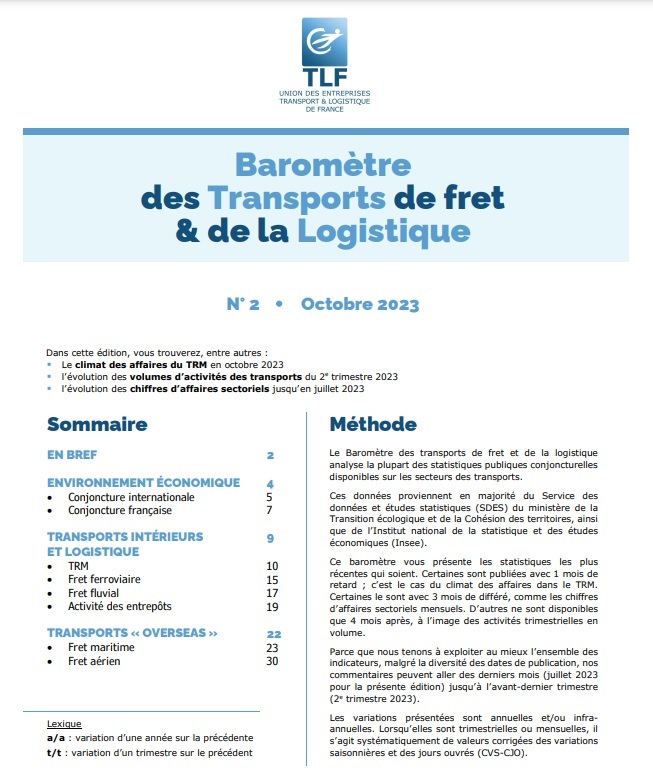
The latest freight transport and logistics barometer published by Union TLF* reveals a contraction in activity in the road freight transport sector in France. In the 2nd quarter of 2023, French flag volumes decreased by 4.7% compared to the previous year and by 6.4% compared to the previous quarter. This drop in activity led to a reduction in recruitment and an increase in business failures. In addition, the business climate in the road transport sector is deteriorating with sluggish demand and prices which are not increasing. Faced with these difficulties, TRM companies face challenges, such as lack of demand, recruitment difficulties and economic uncertainties.
The TLF Union reveals in this edition:
- the TRM business climate in October 2023,
- the evolution of transport activity volumes for the 2nd quarter of 2023,
- the evolution of sectoral turnover until July 2023.
*Born in the 2000s, the Union of Transport & Logistics Companies of France (TLF) is the professional organization representing all professions in the transport & logistics chain. It works to represent, promote and defend the interests of the profession to public authorities and French, European, international and local authorities through its regional delegations and its affiliated freight forwarding unions.
Toyota Material Handling prepares to participate in Paris 2024 emissions reduction

With less than 1 year until their launch, and in collaboration with Toyota Motor Europe, the company is now able to provide insight into how it will support the Paris 2024 commitment to emit 50% less CO2 than 'at the previous Games. The forklifts used will be exclusively electric and equipped with the latest lithium-ion batteries developed by the company. Thus, emissions linked to the transport of goods during the Olympic Games will be minimized, while the challenge of providing equipment, food and drinks to the 15,000 athletes and 15 million visitors expected is immense. Mark Peters, Marketing Director of TMHE, explains: “These Games are the ideal opportunity for us to showcase the latest technological advances that enable the smooth and efficient transport of goods today. This includes solutions for clean energy, but also the use of connectivity to track cart activity during the Games. We will obtain valuable data that can be used in future Games. In addition, we precisely measure and document the emissions generated by our equipment, in order to benefit from a basis for future events, as this is part of our philosophy: measure to improve. » Toyota Material Handling also announced the establishment of a communications program which will be deployed before and during the Games. Mark Peter explains: “The logistics industry is not very visible, but plays a vital role in everyone's lives. If we only consider the provision of daily needs such as food, drinks and medicines for more than 750 million people in Europe, the task is immense, especially since there are also all the other consumer goods: what people carry, and everything they buy. It is a process that never stops, and yet is invisible to the majority of people. At the same time, our industry is making significant progress as it uses more efficient methods and technologies, better energy management, and new, state-of-the-art automated solutions. We want our partnership with the Olympic and Paralympic Games to serve as a platform to provide insight into the world of logistics to as many people as possible over the coming months. »
Sénalia Group appoints its new industrial logistics director

Thomas Desjonquères joins the Sénalia group as industrial logistics director, replacing Thomas Graffin who left to join the world of hydrogen. “Recently graduated in 1998, I joined the OCG Cacao group to participate in the creation of its first production site, located in Grand-Quevilly. The objective of this ambitious French SME was to quickly become a key group in the chocolate market for manufacturers – BtoB – by facing major players in the sector such as Barry Callebaut or Cémoi. Project engineer at the start of this industrial unit, I assumed different operational functions: manager of a production team, maintenance manager and finally technical manager. The integration of OCG Cacao into the Cargill group in 2003 and the development of the activity in Europe gave me the opportunity to take on a position as project manager for the group's Chocolate Business Unit – Belgium, England, Germany , The Netherlands. In 2013, new challenges as sales manager within the French subsidiary of the German group Zeppelin Systems GmbH, for the Greater West region. Created in 1908 by Count Ferdinand von Zeppelin, inventor of rigid airships, Zeppelin Systems today offers innovative and recognized installations in the food, plastic and rubber industrial sectors for handling powdery and liquid raw materials. Today I am very happy to join Sénalia, a recognized and respected player in agrologistics. I will endeavor to use my experience and my industrial skills to participate in the development of the group,” declares Thomas Desjonquères, industrial logistics director of the Sénalia group. The Sénalia group specializes in the provision of logistics services with historical know-how in the maritime export of cereals and agro-industry. The group develops personalized logistics solutions, piecemeal or end-to-end, allowing each sector whose flows pass through Normandy to find a suitable logistics solution (storage, packaging, loading). Each year, multimodal hubs capture more than 6 Mt (including 59% for the cereal export activity). This performance in logistics, preservation of the quality and technological properties of the products processed (€2.8 billion) makes Sénalia a major logistics partner.
BoMill and Tripette & Renaud enter into an exclusive distribution agreement for the French market
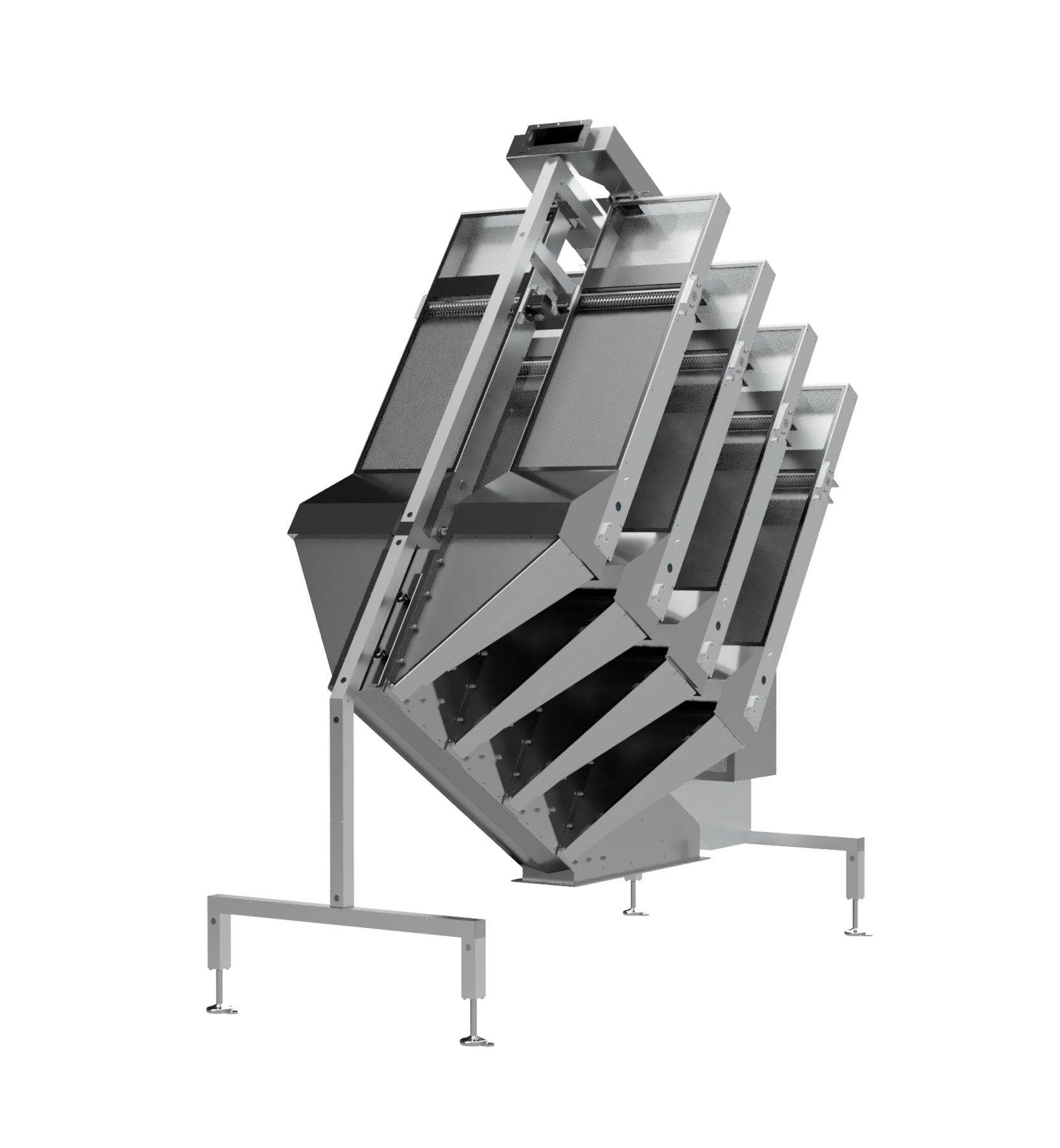
Tripette & Renaud was founded in 1836 to produce grindstones for mills. Since then, the company has always been recognized for the quality of its services and equipment dedicated to millers. Thanks to partnerships with world leaders in the bulk industries, the company has developed, since 1981, its “Industrial Equipment” activity offering equipment dedicated to pneumatic handling, sieving and sampling of all powdery and granular products. BoMill InSight will be part of the offering targeting grain and milling companies. “We are delighted to begin our collaboration with BoMill on the French market. BoMill InSight is a revolutionary product that completes our offering and brings new solutions to our customers for better grain quality and process optimization,” explains Marc Doligé, president of Tripette & Renaud. The Swedish company BoMill designs, manufactures and markets sorting solutions for the grain industry. Its unique technology allows industrial sorting grain by grain, based on internal properties such as protein level. With the latest generation BoMill InSight equipment, grain producers and processors can target higher qualities or revalue downgraded lots to increase overall value, while improving operational efficiency and environmental impact.
BoMill InSight in a few words
BoMill InSight is BoMill's latest grain sorting solution and the only one capable of separating a batch, grain by grain, at industrial speed (up to 15 t/hour – 125,000 grains/second), based on the properties internal characteristics of each grain such as protein content or fusarium contamination. The equipment is intended for companies in the cereal chain with sustainable development objectives and wishing to further optimize their cereal supply while improving the quality of their products. This includes storage organizations as well as processors such as mills and malt houses. BoMill InSight's revolutionary modular design provides maximum flexibility in its use, while facilitating capacity expansion to meet future needs. Its removable chassis has a small footprint allowing easy and quick installation for existing sorting lines or new projects. Finally, BoMill InSight's reduced operating costs provide a rapid return on investment for its users.
Precision doser for powdery products

Gericke collaborates with Jungbunzlauer on infant milk powders
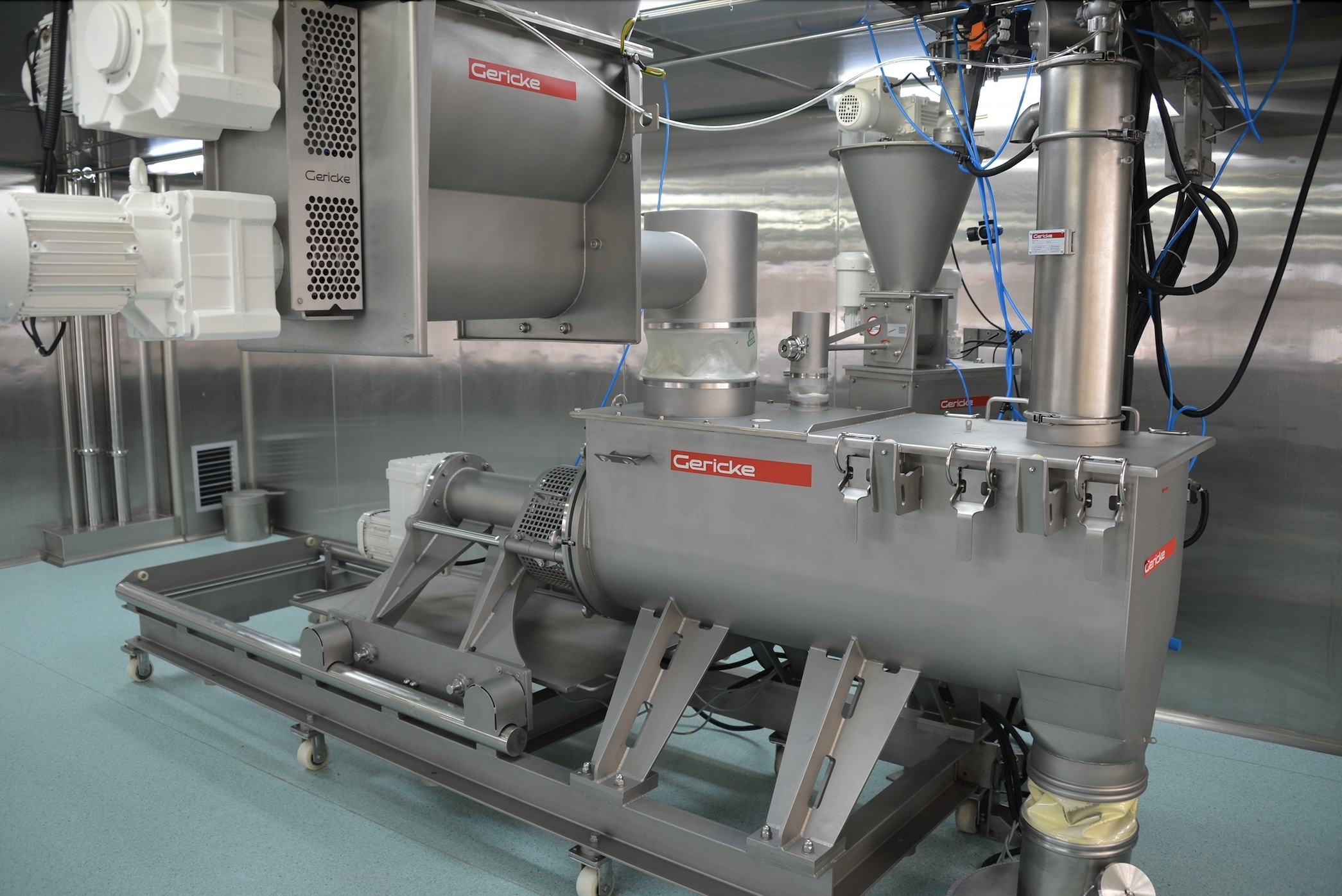
High quality calcium salts are essential nutrients for infant nutrition. Tricalcium citrate, a biobased mineral salt, is the most widely used organic mineral salt in this sensitive application due to its excellent nutritional suitability, i.e. high bioavailability and compatibility. In the context of the production of powdered infant milk, the calcium salt can be introduced by liquid means before the drying stage. However, the abrasive character of the calcium salt as well as its ability to generate deposits during the heating phase can have a negative impact on production. This results in a decrease in performance, an increase in cleaning time and frequency, and premature wear of the installation. These problems and the associated costs can be greatly reduced if the calcium salt is introduced dry to the base powder. To do this, two prerequisites must be met: an ingredient of impeccable quality and high-performance powder processing equipment. Jungbunzlauer M1098 Micronized Ultrafine Tricalcium Citrate is a highly dispersible calcium salt that allows infant milk to be easily prepared by hand without sediment and thus ensures reliable calcium content for the infant. It is approved for dosing dry mixes, as it meets the strictest microbiological requirements. In addition, Jungbunzlauer offers special multi-layer packaging, which allows the calcium salt to be safely transferred to the high-hygiene-classified dosing/mixing unit. Leading producers of nutritional products rely on Gericke technology for the formulation and dry blending of nutritional products and food supplements for infants and adults. The very high precision of the recipes, the traceability and the efficiency of the mixing guarantee constant quality. Fully automated processes incorporate highly accurate gravimetric dosing equipment and mixers that homogenize base powder with carbohydrates, minerals, trace elements, probiotic supplements and flavors. Dry mixing plants are carried out discontinuously or continuously. These reliable and energy-efficient technologies can be tested in Gericke's test centers at a capacity of 4 t/h.
As a result, many formula milk producers have increased the profitability of their operations by switching from wet to dry addition of calcium by combining Jungbunzlauer's high-quality tricalcium citrate with powder dosing and mixing systems. by Gericke.
Envea completes the acquisition of Hycontrol
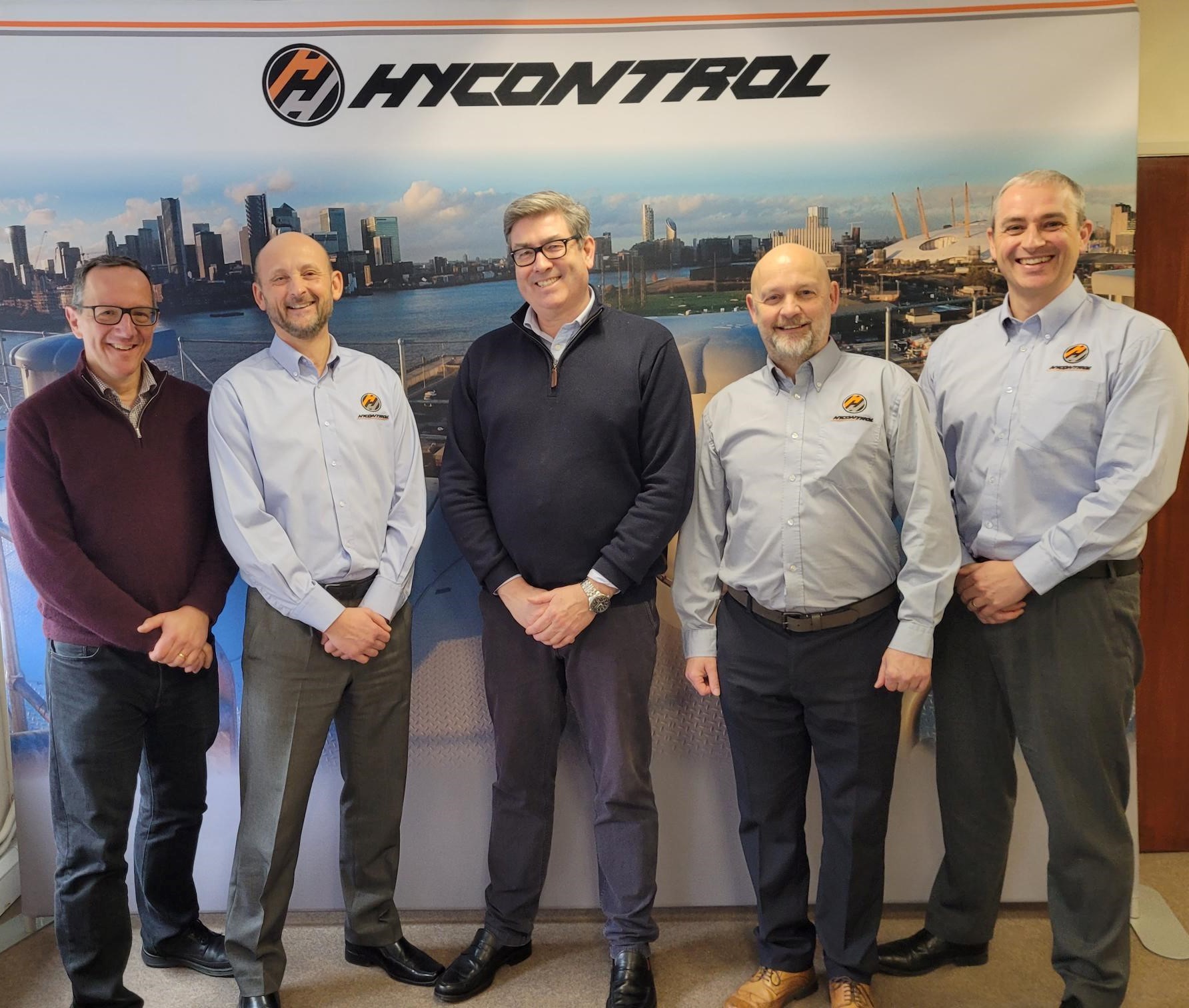
Envea continues to expand its environmental management capabilities by integrating Hycontrol Ltd into its extensive portfolio which already includes ambient, emissions and industrial process measurement solutions. Hycontrol is a growing, cutting-edge company specializing in level measurement, silo protection and foam control applications with a market-leading range of products and applications. Hycontrol's reach will be extended through Envea's global sales and distribution network, while new technologies complement Envea's existing offering. Trevor Sands, CEO of Envea, explains: “The combination of Envea and Hycontrol is a fantastic opportunity for two highly regarded teams to benefit from the strengths they share. Envea's existing team can provide extensive distribution and support for the Hycontrol range of solutions. Hycontrol's portfolio perfectly complements our existing offering for established customers and international markets. The Hycontrol team will continue to be led by Nigel Allen, Chief Executive Officer, and Richard Allen, Chief Financial Officer, and we are delighted to welcome them and the entire team to our growing Envea family. » Nigel Allen, Managing Director of Hycontrol, adds: "This strong partnership will boost Hycontrol's strategy and growth plan, particularly by enabling our silo protection and safety system to reach new customers and new markets, while strengthening our ability to innovate, particularly in terms of software solutions. »
Patrick Vericel becomes the new majority shareholder of the MLT group
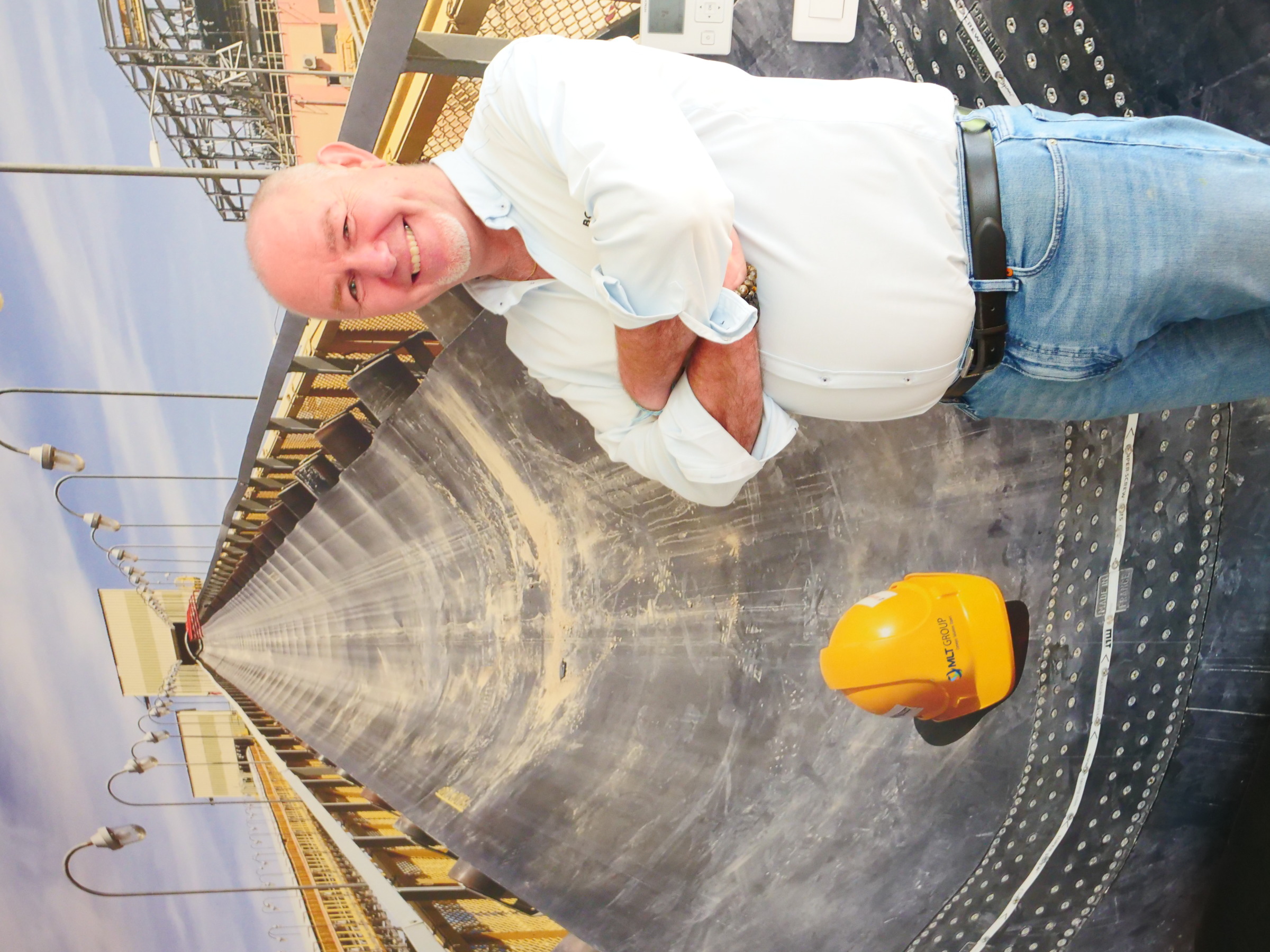
MLT Minet Lacing Technology, headquartered in Saint-Chamond (Loire), has announced the departure of one of its managers, Frédéric Guillemet, and confirms that his co-partner, Patrick Vericel, will continue the adventure alone. . Founded in 1947, Patrick Vericel and Frédéric Guillemet bought the company in 2017, each holding 50% of the shares. 4 years later, the two men had doubled the activity, adding in passing a partnership contract with the American company Flexco, the takeover of the Belgian company TechnicGum Polymères, and the opening of two new subsidiaries, in Peru and in Africa. from South. Rapid growth that continues today. Frédéric Guillemet was a key member of MLT's management team, contributing to the growth and success of the company. He had joined the company as general manager in 2014. After 9 years at the head of the company, the engineer from Arts et Métiers wanted to take a step back and get involved in new projects. Being confident about the continuity of the group, he will remain a shareholder with 13% of the capital, but will not retain any executive mandate. Patrick Vericel, who joined the company in 2016 as commercial director, has increased the turnover of MLT France from €13 million to €30 million in 5 years and that of the group from €17 million to €45 million. He becomes the main shareholder and will continue to lead the company and promote the values of quality, innovation and customer service of MLT Minet Lacing Technology. With over 20 years of industry experience, he is a proven leader with a deep understanding of customer needs and market trends. He decided to surround himself with a team of leading executives through 2 holding companies of managers for 15% of the capital.
The Federal Fraser passes the Caen-Ouistreham lock with 24,000 tonnes of wheat
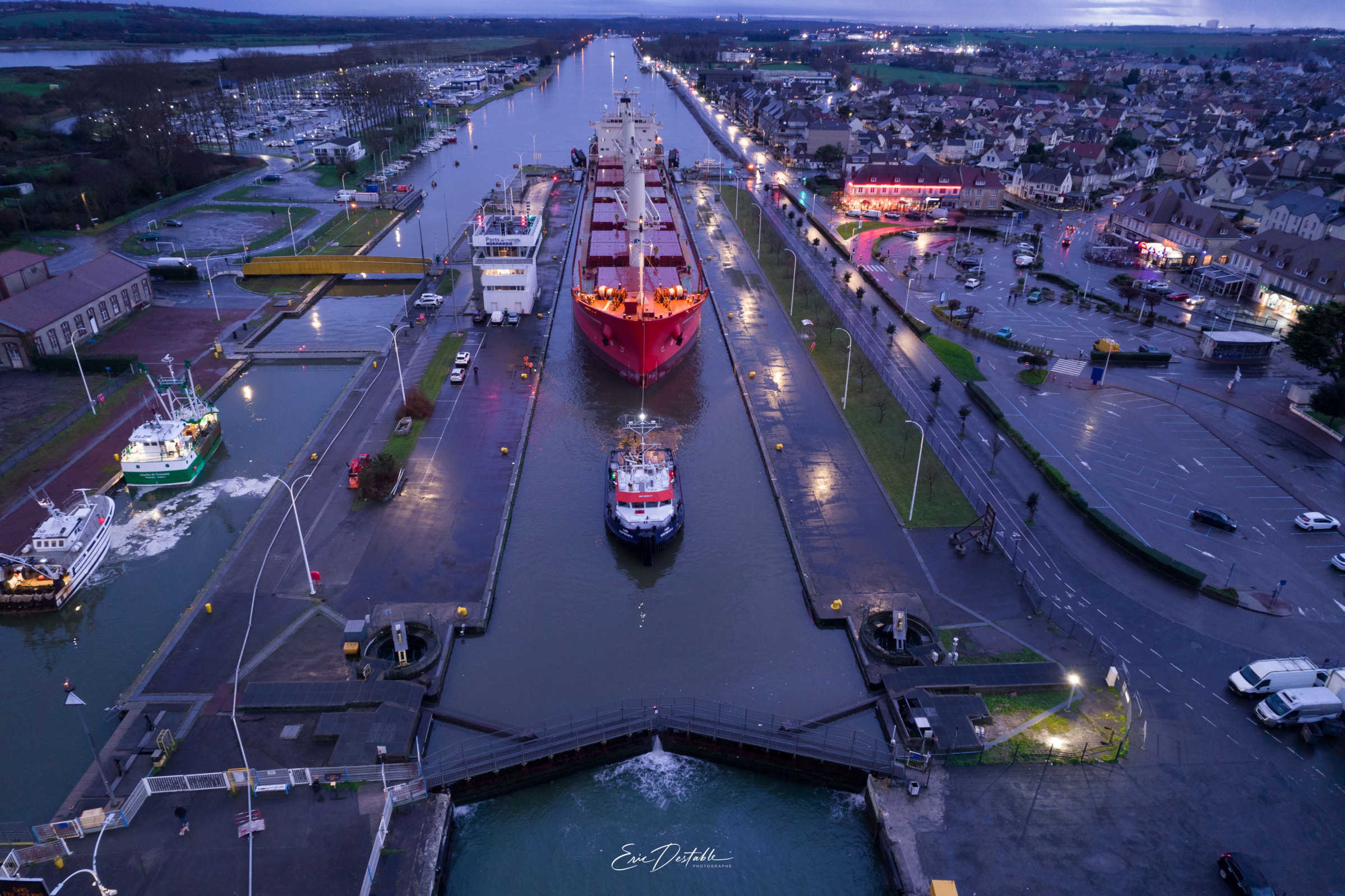
A priori, such a tonnage had never been transported from the port of Caen-Ouistreham. Beyond the record, this confirms that the new guidance system allowing wider ships (from 24 m to 27.4 m) to pass through the locks at Ouistreham meets the new standards of world traffic and the objective that motivated this heavy investment: to sustain the economic future of the port of Caen-Ouistreham. By choosing the port of Caen-Ouistreham, the owner of the Federal Raser validates the investments (€12 million) of Ports de Normandie (€10 million) and its operator, the CCI Caen Normandie (€2 million) who have been able to adapt the port in order to meet the needs of their customers.
Ports of Normandy in figures:
Owner and manager of the ports of Caen-Ouistreham, Cherbourg and Dieppe, Ports of Normandy are:
6,000 direct and indirect jobs
€420 million invested in Normandy since its creation in 2007
100 ha dedicated to renewable marine energies
2 future maintenance bases
2 million cross-Channel passengers per year
7 Mt of goods per year …
Bag-emptying hopper with an adapted design for more efficient dust removal
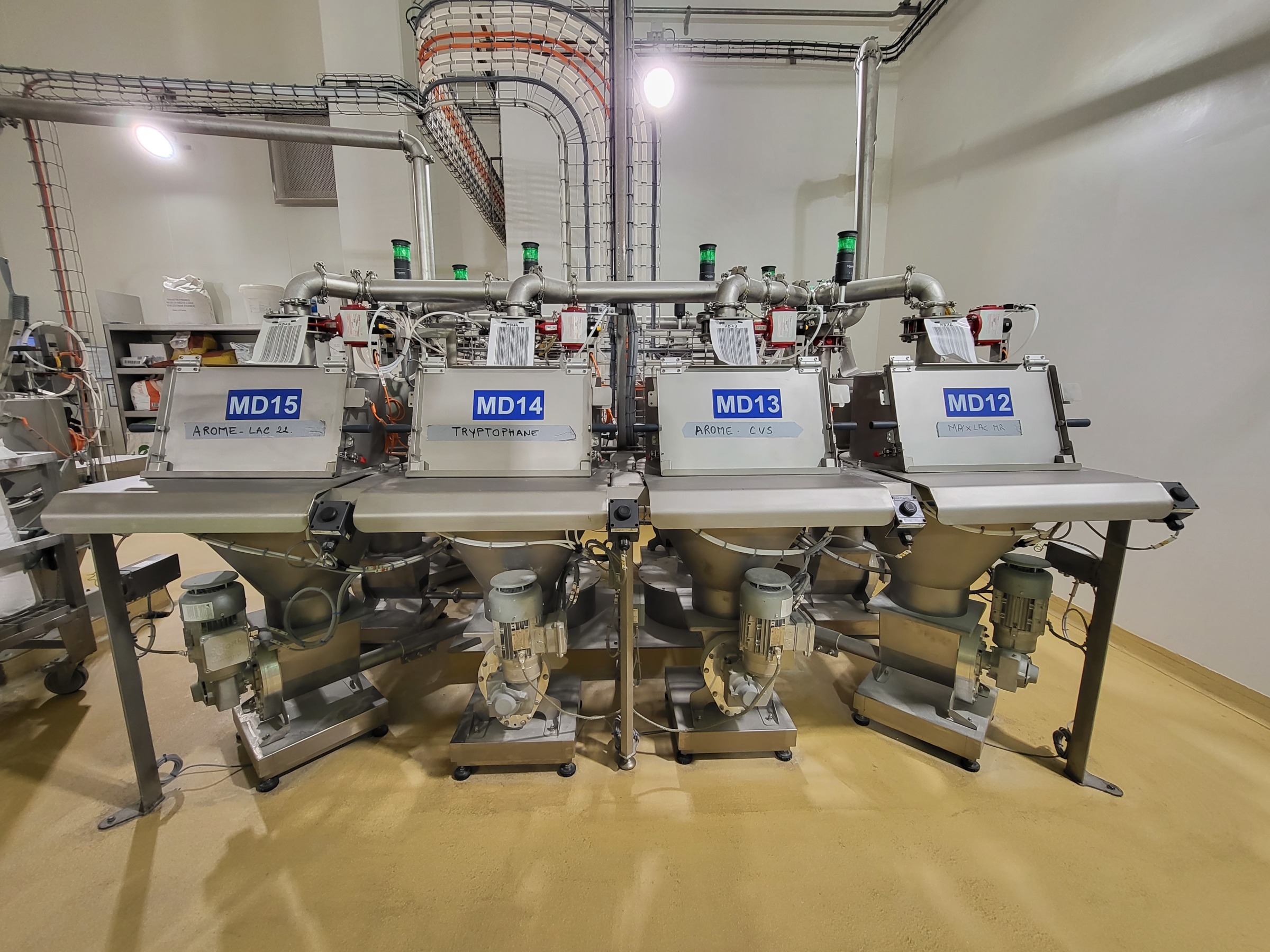
As part of an R&D project, the suction of dust when emptying the bags was modeled. This long work on the flow and the redirection of dust has made it possible to rethink the shape of the equipment so that the dust is sucked up as well as possible by the dust collection system. The dispersion of dust outside the bag emptying hopper is reduced by 23%. The ergonomics of the empty bag part has also been improved with a shelf with rounded edges allowing for simplified removal. The bag deposit height has also been adapted to make it more accessible. The whole is made on the basis of a mechanically welded structure without collars to avoid retention zones. Food safety and the elimination of foreign bodies, ensured by a range of vibrating grids produced by the manufacturer, complete the range of bag-emptying hoppers. The grids exist with different meshes ranging from 600 µm to 8 mm. All systems are equipped with blue seals identifiable in the food industry. All the components are delivered with a food certificate. Shick Esteve delivers worldwide from the French site of Rians and the American site of Kansas City for North America only.
Benefits for the operator:
dust reduction
Food Safety o
perator protection
ergonomics
New appointments within Ishida
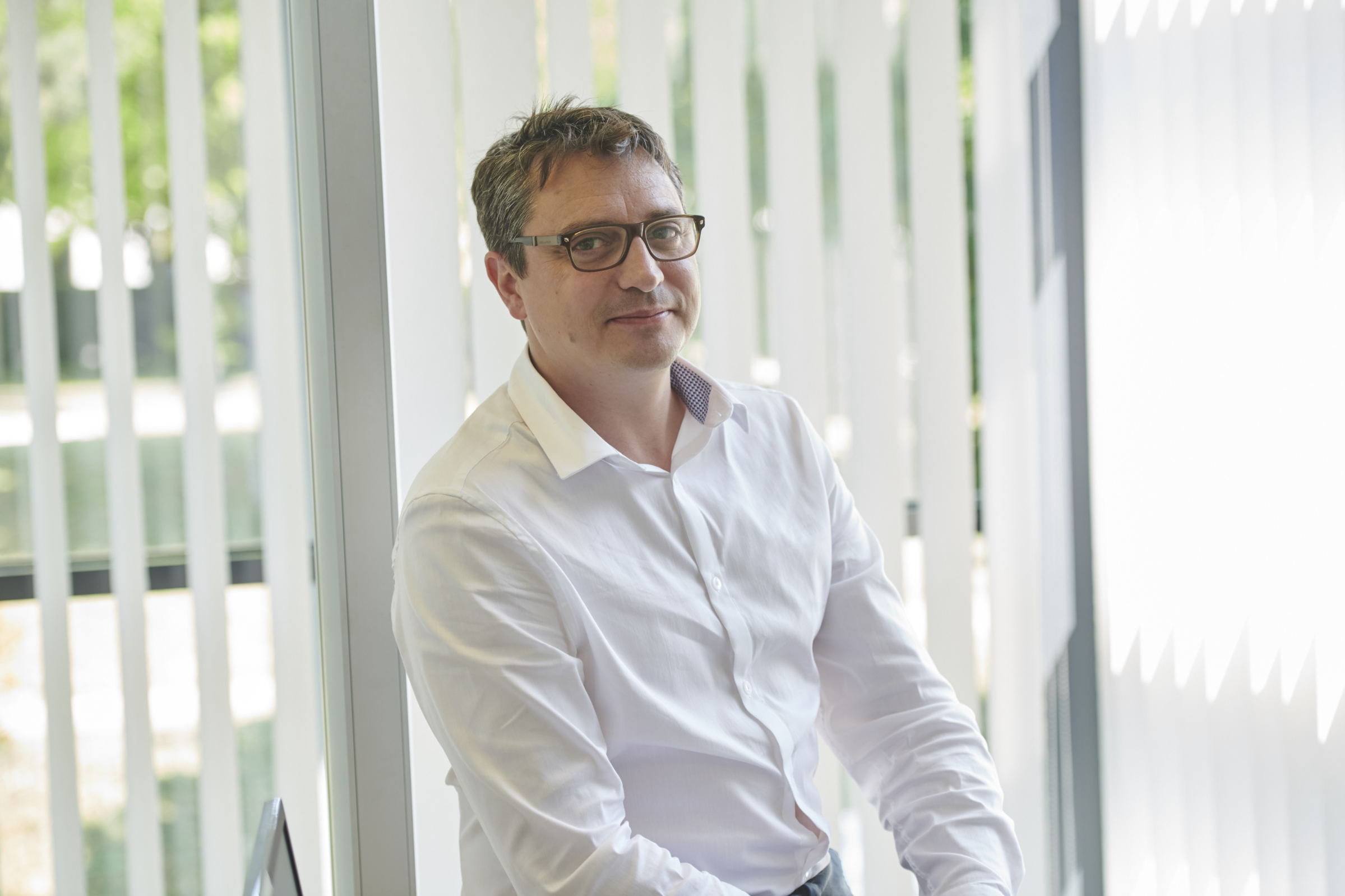
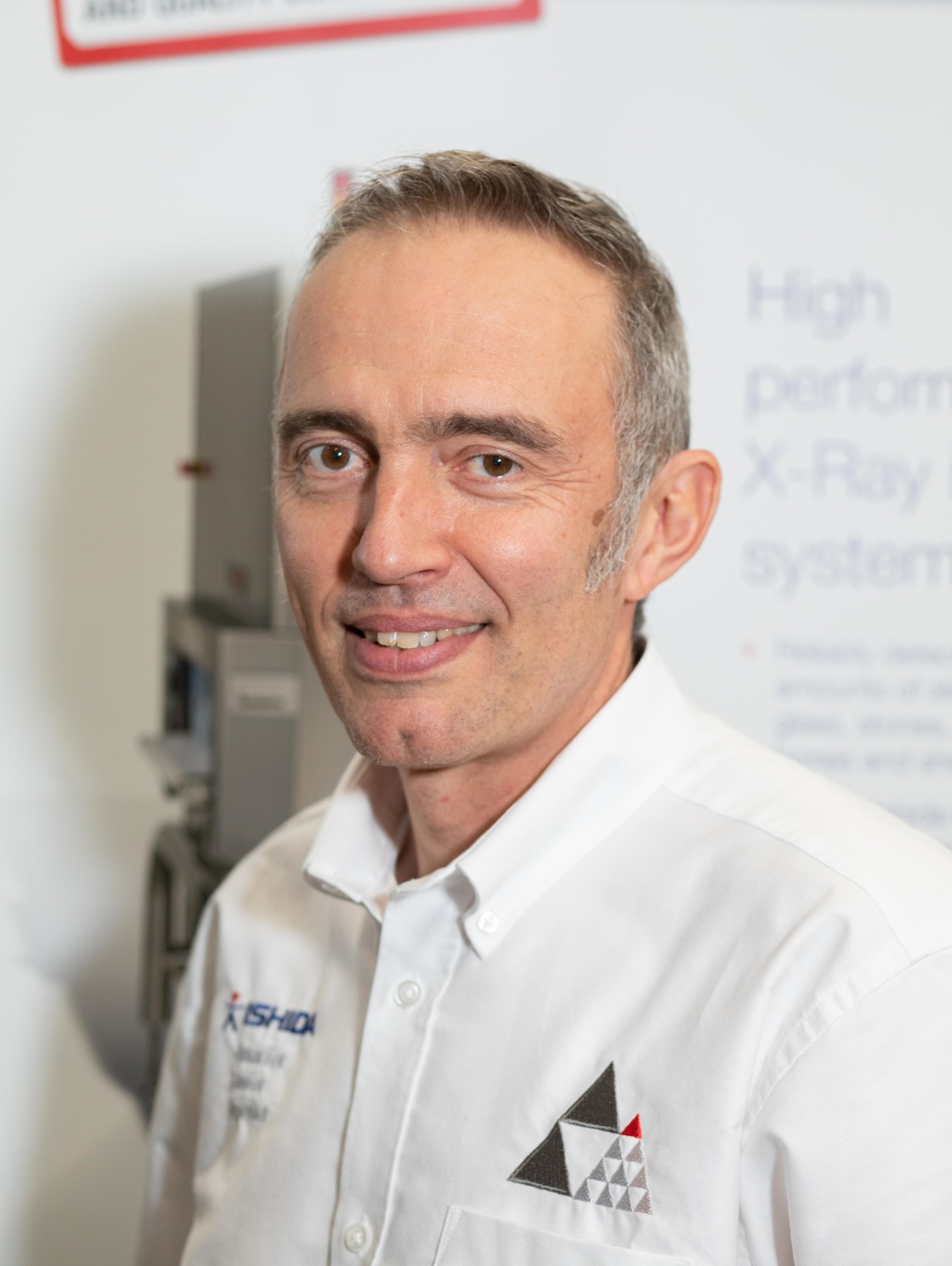
To support its development on the French market, Ishida appoints Bastien Ferrapie (photo on the left) as Customer Delivery Manager - Project and after-sales service department – France and North Africa, and Damien Pichot, Protein Account Manager (responsible for meat, poultry and seafood markets) for the whole country, alongside Bertrand Baudry, Protein Account Manager, Ishida France since 2020. Bastien Ferrapie held the position of head of the projects and business department within Ishida France since 2008. His expertise, his in-depth knowledge of the company and the market will enable him, accompanied by the project and after-sales teams, to ensure the high level of service that Ishida strives to provide to all its customers on a daily basis. In charge of Ishida's business development for the South-West region since 2021, Damien Pichot has nearly 27 years of experience. With this appointment, he will now bring his expertise to each manufacturer concerned with acquiring equipment and advice in order to increase his production, reduce material losses and make his investment profitable as soon as possible.
SEPEM Industries supports the innovation and development of industries in the Southeast
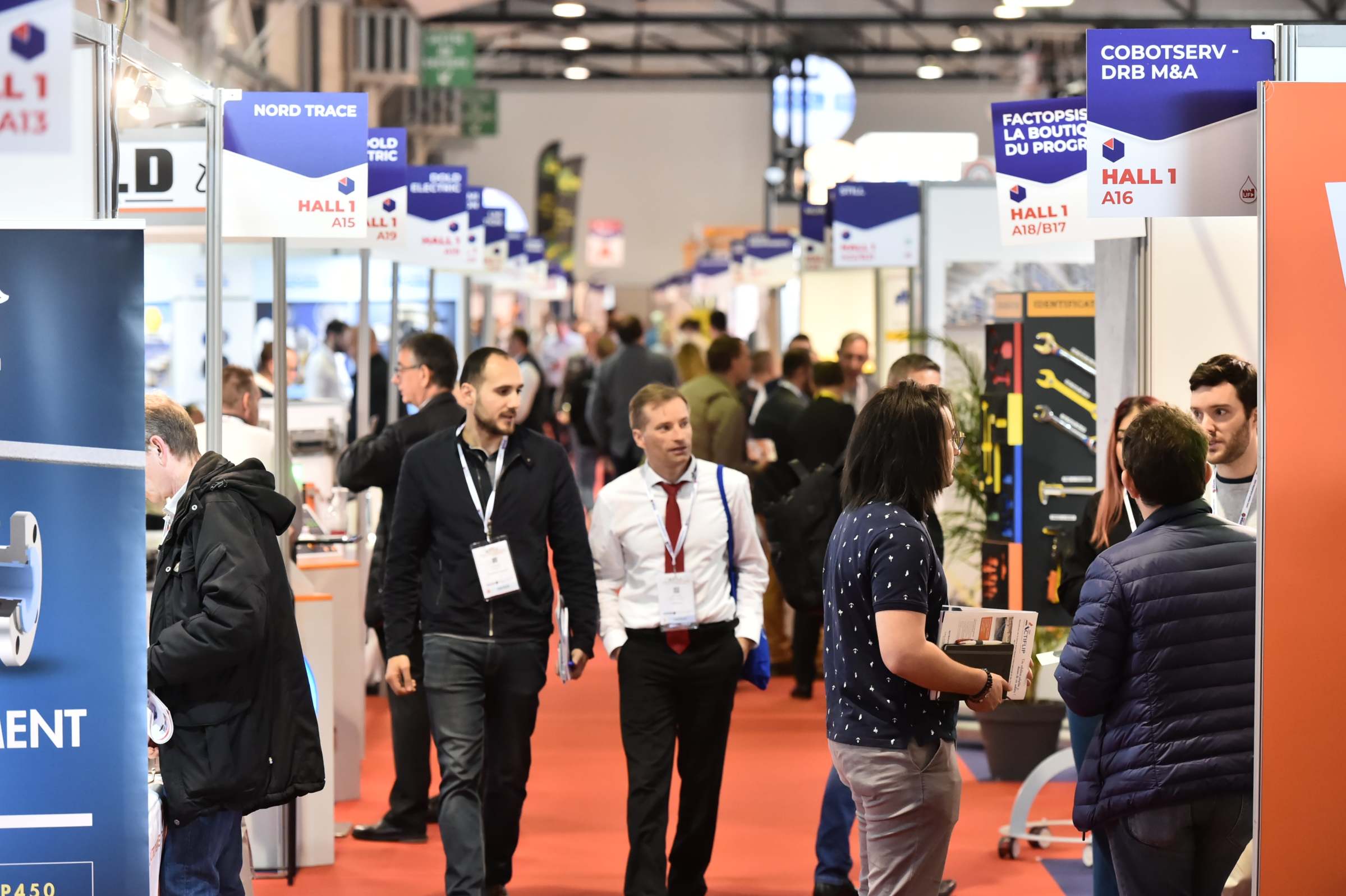
With more than 200 exhibitors, innovations presented exclusively, conferences related to technical and technological news (5G, decarbonization, security, maintenance, etc.), a program dedicated to promoting trades, training and employment, etc., SEPEM Industries Sud-Est will be a support on which the more than 2,000 expected visitors can count. For its 8th edition, it is leaving Avignon to settle in Martigues, from June 6 to 8, 2023.
A FIRST IN MARTIGUES
For the first time, SEPEM Industries Sud-Est will be held in Martigues. A choice that results from the dynamism of the city and its metropolis in terms of industry. Indeed, major industrial companies and competitiveness clusters representing more than 100,000 jobs are located there. The geographical location was also taken into consideration since Martigues is located at the confluence of the South region (from the Etang de Berre to Sophia Antipolis) and the Occitanie region.
RETHINKING ITS INDUSTRIAL UNIVERSE TO INCREASE ITS COMPETITIVENESS
At a time of reindustrialisation, SEPEM Industries is a real local tool for perfecting its equipment and initiating (or developing) its digital, energy or environmental transition. Aimed at all industrial sectors (air and land transport, health, logistics, agri-food, etc.), this meeting brings together a multi-sector technological offer covering the entire value chain: from digital technologies to management tools, from manufacturing to assembly, including tooling, maintenance, eco-responsibility or safety… SEPEM Industries groups together: . Process equipment adapted to different types of companies, from VSEs to SMEs, to improve the productivity of production lines; . Maintenance tools contributing to the proper functioning of the plant; . Protection services and materials for the safety of employees and machines; . Concrete solutions to make a production site more ecologically responsible; . Digital tools to join the industry of the future and increase productivity.
TAILOR-MADE SUPPORT FOR VISITORS
Plant manager, production site, purchasing, quality or health, safety and environment (HSE) manager, R&D department, workshop manager, information systems security manager (RSSI)… all are committed to developing the company's efficiency by relying on solutions that make sense in their production logic. To best guide them in their search, the show has set up various thematic routes. · “Factory of the future”: this course brings together solutions that contribute to digital transformation (AI, 5G, cybersecurity, cloud, etc.), the improvement of plant maintenance (predictive maintenance, CMMS, etc.) or its automation (control digital, robotics, cobotics…) “New products”: with more than 20% of exclusive world and European new products presented, SEPEM Industries Sud-Est reports on recent innovations in the fields of tools, measurement, laser cutting, safety, filtration, etc. “Exhibitors from the South region”: recent crises have shown that proximity can be a real asset for maintaining business and remaining ever more responsive to competition. With 30% of exhibitors from the South-East, visitors will be able to initiate future partnerships with local players. · “Machines in operation”: SEPEM Industries also proposes to project itself into the future of its company thanks to the presence of machines in operation.
ACULTURING TO THE SOLUTIONS OF TOMORROW
During 3 days, feedback, round tables and conferences will shed light on current issues in terms of maintenance, 5G, cybersecurity, energy sobriety, recycling, attractiveness of professions... The opportunity for manufacturers to monitor and learn about solutions that can be adapted to their business. Conference themes Tuesday, June 6. Industry and maintenance 4.0 (morning) . Cybersecurity (afternoon) Wednesday, June 7. Industry and maintenance 4.0 (morning) . Cybersecurity and energy efficiency / decarbonization of factories (afternoon) Thursday, June 8. Skills and energy management for industry (morning) Among the topics that will be discussed: the connected workshop; predictive maintenance; reducing its energy bill and its carbon footprint; challenges, benefits and uses of 5G; strengthen security with the new FIDO2 authentication standard; the attractiveness of maintenance professions…
USEFUL INFORMATION
SEPEM Industrie Sud-Est La Halle de Martigues (Roundabout of the Town Hall - Martigues)
Tuesday, June 6, 2023: 9 a.m. - 6 p.m.
Wednesday, June 7, 2023: 9 a.m. - 6 p.m.
Thursday June 8, 2023: 9 a.m. - 5 p.m.
Synergy leads the way in South West France
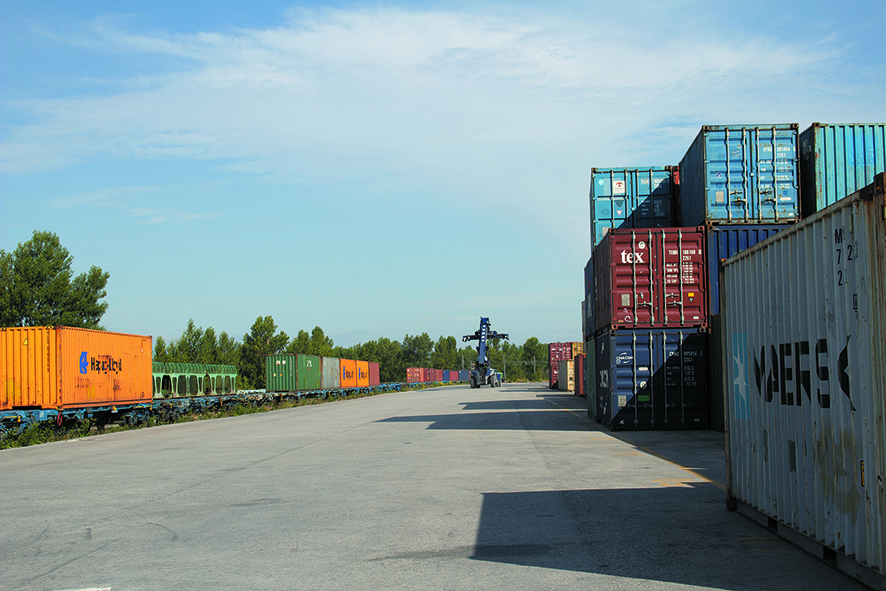
This initiative is part of the company's strategy, committing to provide better intermodal services in terms of time, price and respect for the environment. The company wants to focus on offering companies a complete "port-to-door" service which, thanks to the train, will reduce the costs and transit time of imports and exports, while contributing to the improvement of the environment by reducing CO2 emissions, having eliminated 12,000 t in 2020 and 13,000 in 2021. The intermodal service between the south-west of France and Hutchison Ports' Best terminal in Barcelona has been a remarkable success with customers, who have realized up to 11 days of savings on the transit time of their goods, and significant competitive advantages to import and export their products through the port of Barcelona. The consolidation and growth of traffic between France and the port of Barcelona have as an essential strategic link the intermodal terminal of Noáin, from which Synergy offers daily connections and multiple services: last mile, customs solutions, storage and crossdocking, VGM , fodder and stowage, cleaning and fumigation, installation of thermal blankets and flexitanks, etc.
The Federal Fraser passes the Caen-Ouistreham lock with 24,000 tonnes of wheat
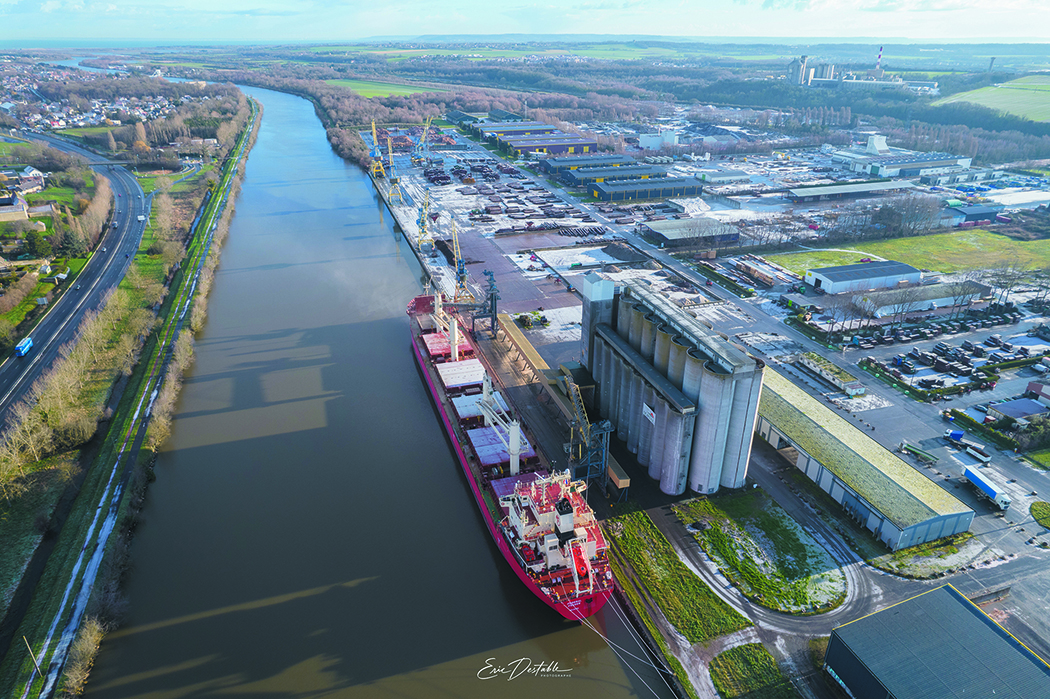
Beyond the record, this confirms that the new guidance system allowing wider vessels (from 24 m to 27.4 m) to pass through the locks at Ouistreham meets the new standards of world traffic and the objective that motivated this heavy investment: to sustain the economic future of the port of Caen-Ouistreham. By choosing the port of Caen-Ouistreham, the owner of the Federal Raser validates the investments (€12 million) of Ports de Normandie (€10 million) and its operator, the CCI Caen Normandie (€2 million) who have been able to adapt the port in order to meet the needs of their customers.
Ports of Normandy in figures:
Owner and manager of the ports of Caen-Ouistreham, Cherbourg and Dieppe,
Ports of Normandy are: 6,000 direct and indirect jobs
€420 million invested in Normandy since its creation in 2007
100 ha dedicated to renewable marine energies 2 future maintenance bases
2 million cross-Channel passengers per year 7 Mt of goods per year
Haropa Port: Dominique Ritz joins Haropa Port and takes up the position of Deputy CEO
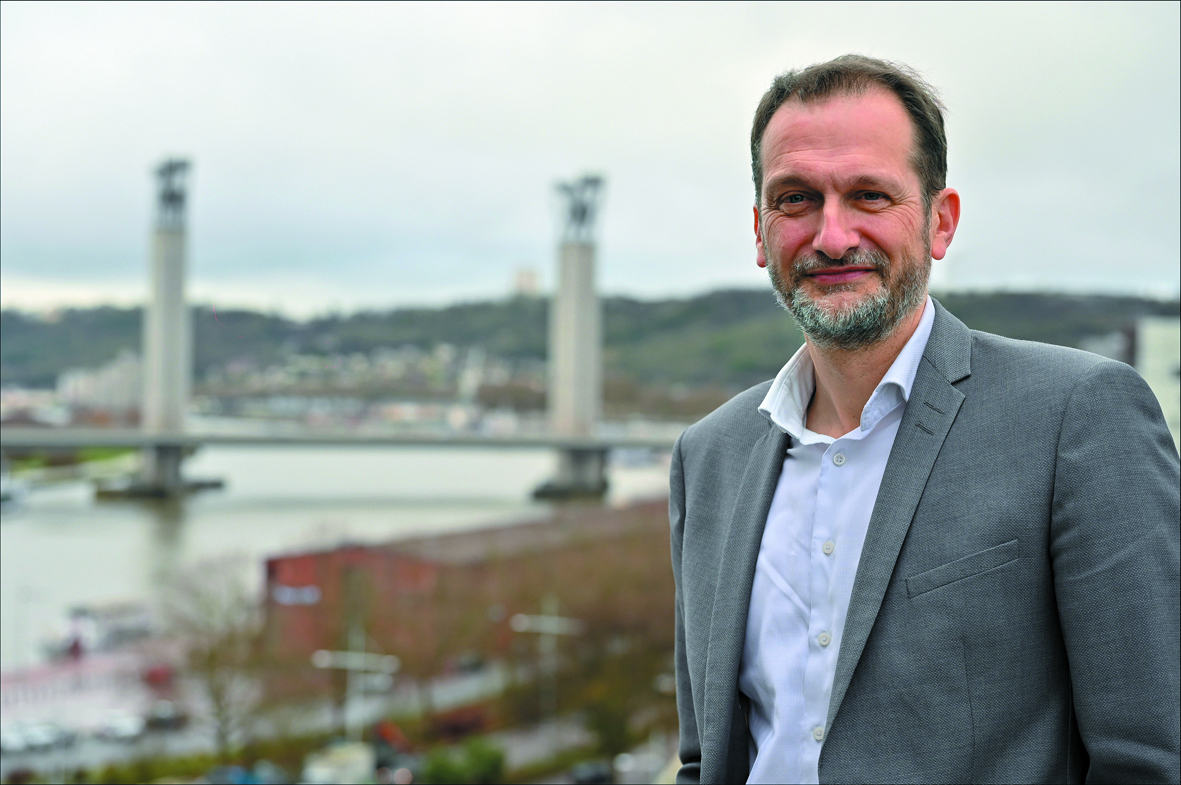
In his new functions, he is also responsible for deploying the ecological transition project across the entire axis. He succeeds Pascal Gabet, who left last July to take charge of the North-West Interdepartmental Roads Directorate (DIRNO) in Rouen, Ludovic Grabner, director of the channel and maritime works, having acted as interim head of the Sequanian port establishment. A general engineer for bridges, water and forests, Dominique Ritz was previously regional director of the Seine et Loire downstream basin at Voies navigables de France. In addition to the regional management of Rouen, the new deputy general manager is in charge of the ecological transition on the scale of the Seine axis. For several years, Haropa Port has been engaged in an ambitious process of decarbonizing its activities to meet the challenge of the national Low Carbon strategy and the preservation of biodiversity. Dominique Ritz is also a member of the management board of the large river-sea port on the Seine axis.
Videuse bigbag d’aromates
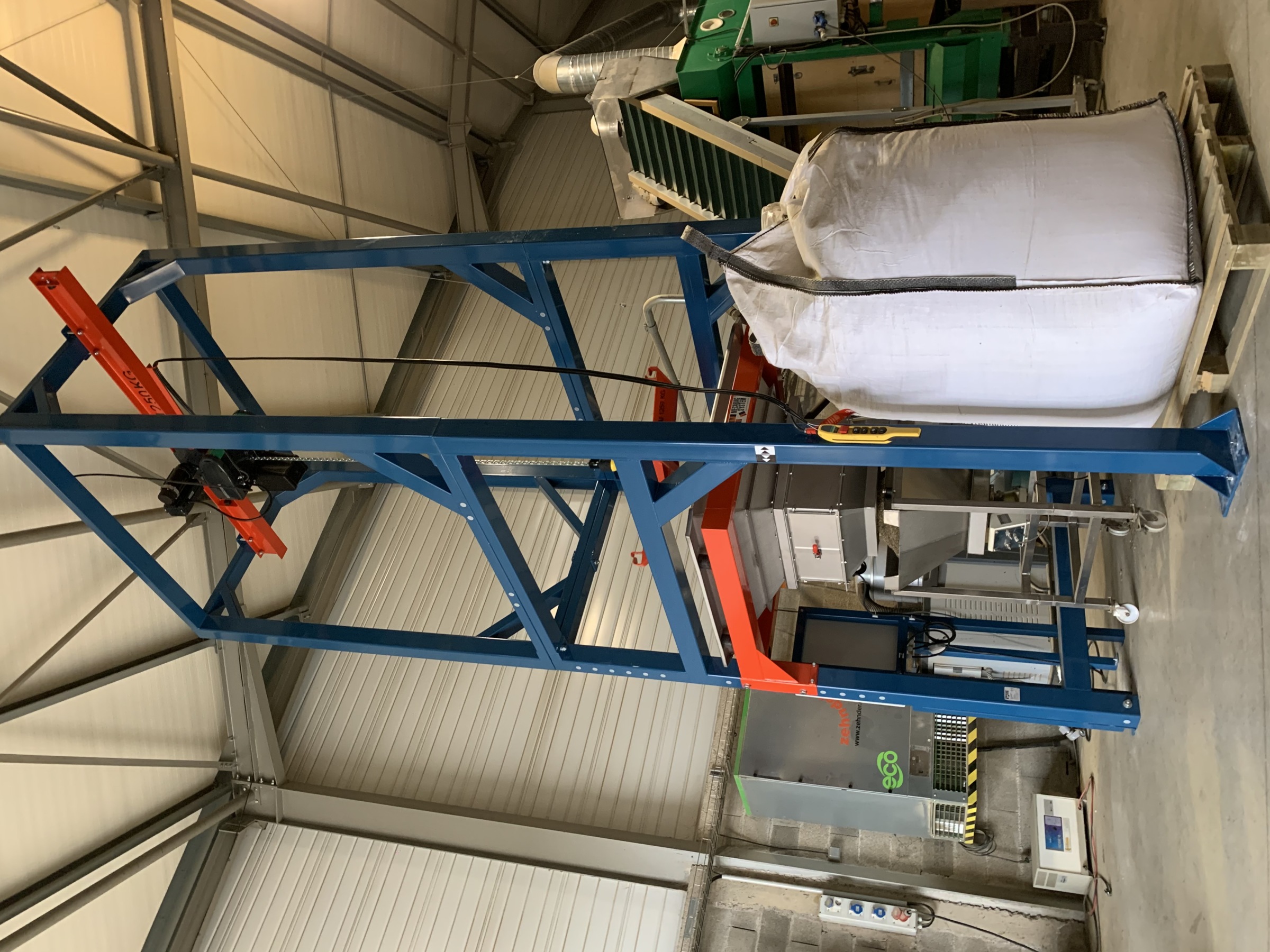
Mecabag System has integrated a machine for emptying aromatics. This machine was installed with the aim of emptying big-bags of herbs of all sizes thanks to a hoist which places the bag in a hopper, eliminating the dimensional constraint of the bag. The flexibility of this machine makes it possible to sweep a wide range of products in order to process the aromatics thanks to the sieve.
The process is broken down into 3 steps:
- empty the big-bag: the operator brings the bag with a handling device to the level of the recovery zone on the hoist. Once the straps of the bag have been hooked to the lifting beam, all you have to do is use the hoist to position it in the hopper. The operator can then open the doors below to unlace the big-bag chute to release the product from the bag;
- Convey the aromatics to the sieve, via a vibrating corridor which leads the product to the paddle elevator. The product is then sent directly to the sieve. The design of this particular machine allows the lifter to be removed, which can be moved to carry out cleaning operations in the sieve;
- Sieve the aromatics, to treat the product in order to extract the edible part. The particularity of the specialist's range of filling stations and big-bag emptying stations for more than 30 years is that it can be adapted to a large majority of existing or emerging industrial processes, thanks to modular equipment and made to measure according to all the constraints. All the equipment in the range is manufactured in the Freneuse factory (Yvelines), which has a showroom and a test station.
Hydronix launches three new probes to complete its product line
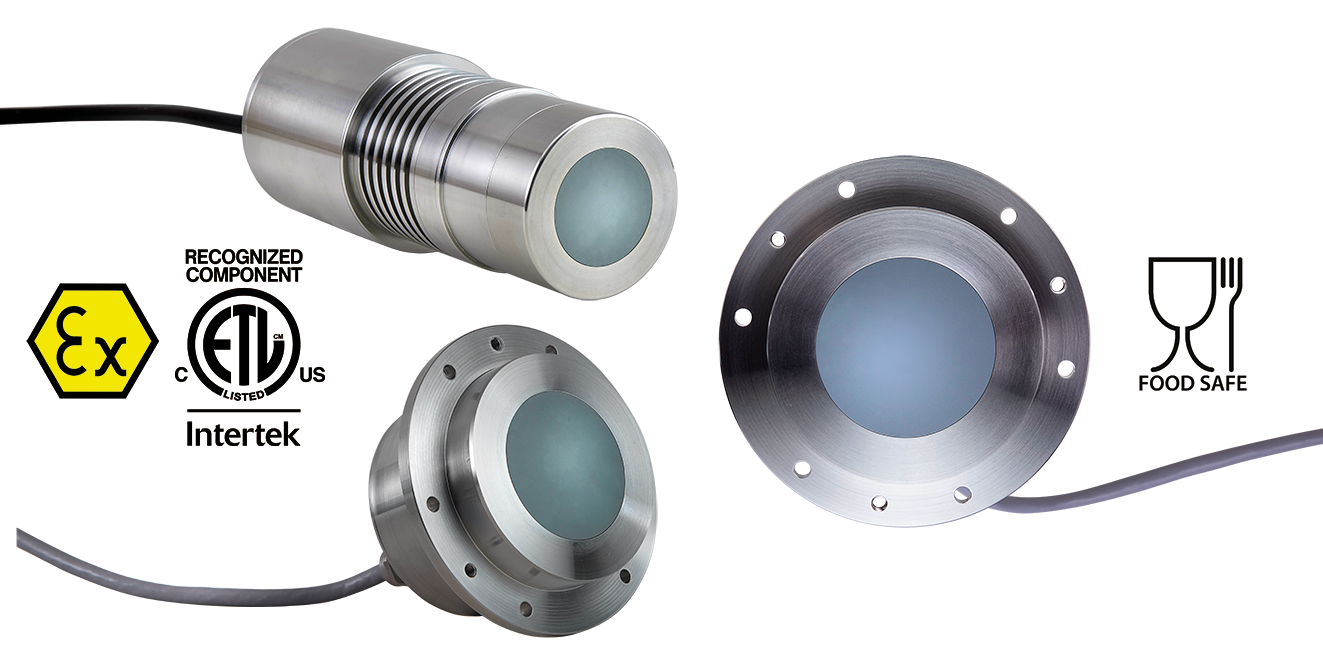
Hydronix, world specialist in microwave humidity measurement, has announced the official release of its 3 latest digital microwave humidity probes:
- The Hydro-Mix XT-EX probe is suitable for zone 20 and zone 21 process environments outside the process at temperatures up to 60°C;
- The Hydro-Mix HT-EX probe is suitable for Zone 20 process environments and is specifically designed for high temperature applications up to 120°C. Both probes can be installed in explosive atmospheres, especially dusty environments, and are both certified to ATEX, IECEx and NEC/CSA regulations for use in hazardous (dust) locations.
- The Hydro-Mix XT-FS probe complies with the requirements of the EN 1935/2004 standard. It has been designed to measure humidity when it is necessary to ensure food safety. “Hydronix has dedicated time and resources to the development of the new EX and food grade probes. EX probes have undergone a rigorous testing and auditing process in accordance with US, EU and UK regulations and guidelines. Our food-grade probe complies with the European directive relating to materials and articles intended to come into contact with foodstuffs. We are delighted to announce their official release and thus expand our activities to other markets. This represents an important milestone for Hydronix and allows our customers to benefit from Hydronix measurement technology throughout their process,” explained Jason Laffan, Managing Director.
The Hydro-Mix XT-EX and Hydro-Mix HT-EX probes have been designed to measure moisture in bulk solids flows, such as animal feed, grain, rice and pulses processed in a dusty environment. The Hydro-Mix XT-FS probe was designed to measure moisture in materials intended for human consumption. The probes accurately measure the moisture content of materials passing over the ceramic faceplate. The probes are flush with the inside wall of the process plant and can be easily installed in pipes, screw conveyors or mixers.
These 3 new probes enhance the standard range of Hydro-Mix HT and Hydro-Mix XT probes by offering more flexibility and installation options. The output of the probe has a linear relationship with the moisture level of the material. The probes have built-in signal processing, smoothing and averaging that can be configured remotely. Standard interfaces are integrated and allow direct connection with a control system, which facilitates configuration, calibration and diagnosis. “Our new ATEX certified and food grade probes, combined with the latest Hydronix interface units, Hydro-View (model HV05) and Hydro-Hub (model HH01), are suitable for many connectivity processes depending on your needs. This allows our customers to continuously monitor humidity and performance within their plants,” explained Jason Laffan, Managing Director.
Automatic transfer of organic sugar from a big-bag
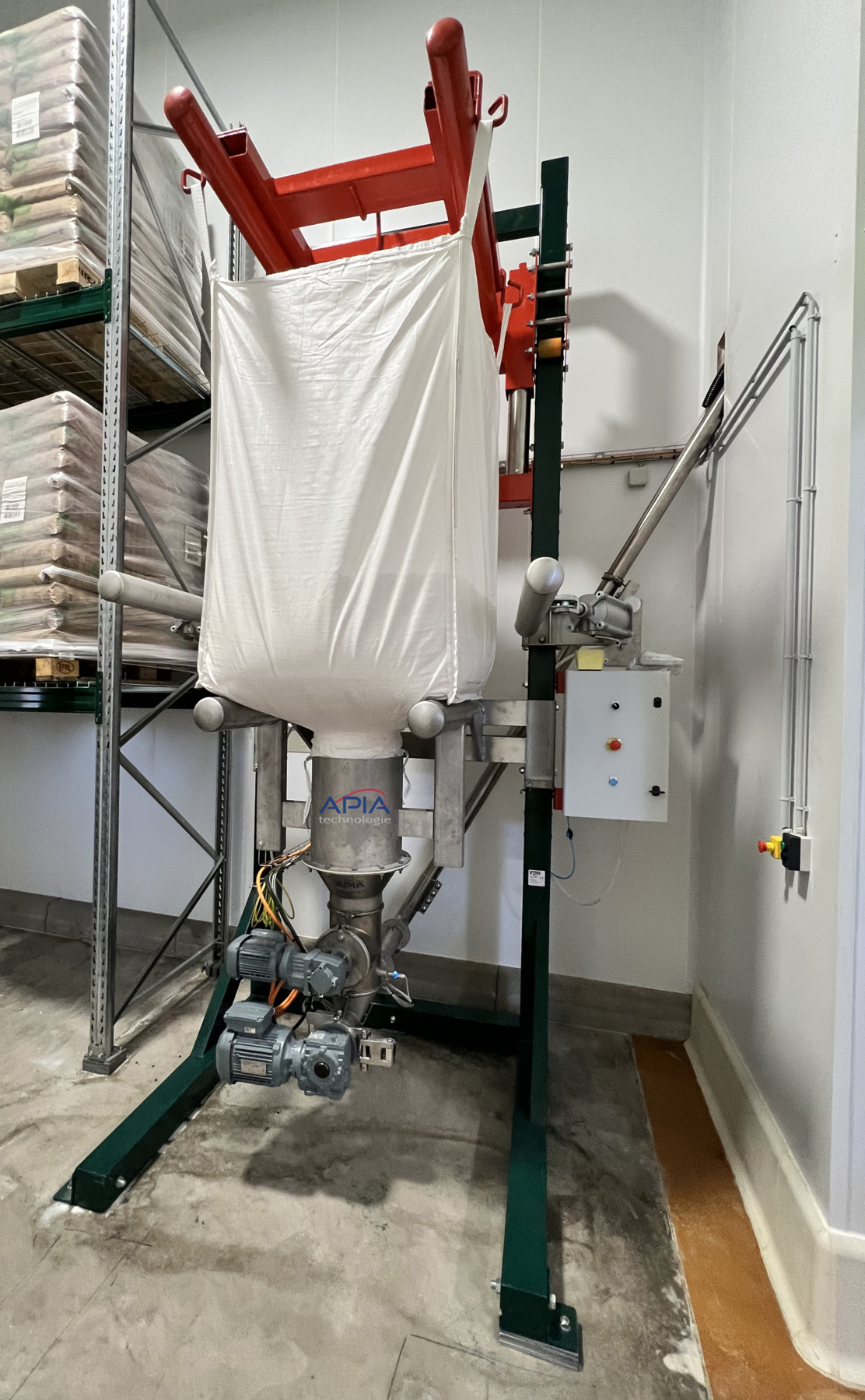
To meet the growing demand for organic products, Bigallet based in Val-de-Virieu (Isère) has reviewed its supplies of organic sugar from France. As soon as the supply became available, the Isère specialist in syrups and spirits chose storage in big bags. Indeed, the diversification of the Bigallet range of organic syrups and its growing success have accelerated the consumption of organic sugar by the manufacturer. The choice to replace the bags with big-bags allows the manufacturer to pursue its objectives of reducing hardship, while improving quality and productivity. Apia Technologie designed the automatic sugar transfer system from the big-bag emptying machine to the melters. The big-bag emptying station was installed in a dedicated space separate from the production area. Organic sugar, which tends to build up, is extracted from the big-bag with double precautions. First of all, a crusher located directly under the big-bag breaks up the lumps of sugar formed during its storage. Then, a first distribution screw finalizes the crumbling and ensures the force-feeding of the Transitube conveying the raw material to a switch. From this switch, the sugar flow is loaded into a first melter, or directed to another transfer screw which feeds the second preparation tank. At the entrance to each dilution tank, a specific interface prevents the rise of steam and humidity in the sugar transfer circuit. The assembly is ATEX 20/22 compliant. This project is part of a global investment strategy aimed at automating the supply of sugar to the production lines. The Bigallet management thus wishes to reduce the difficulty of the tasks, while improving quality and productivity in the factory.
Loma Systems presents its latest inspection solutions
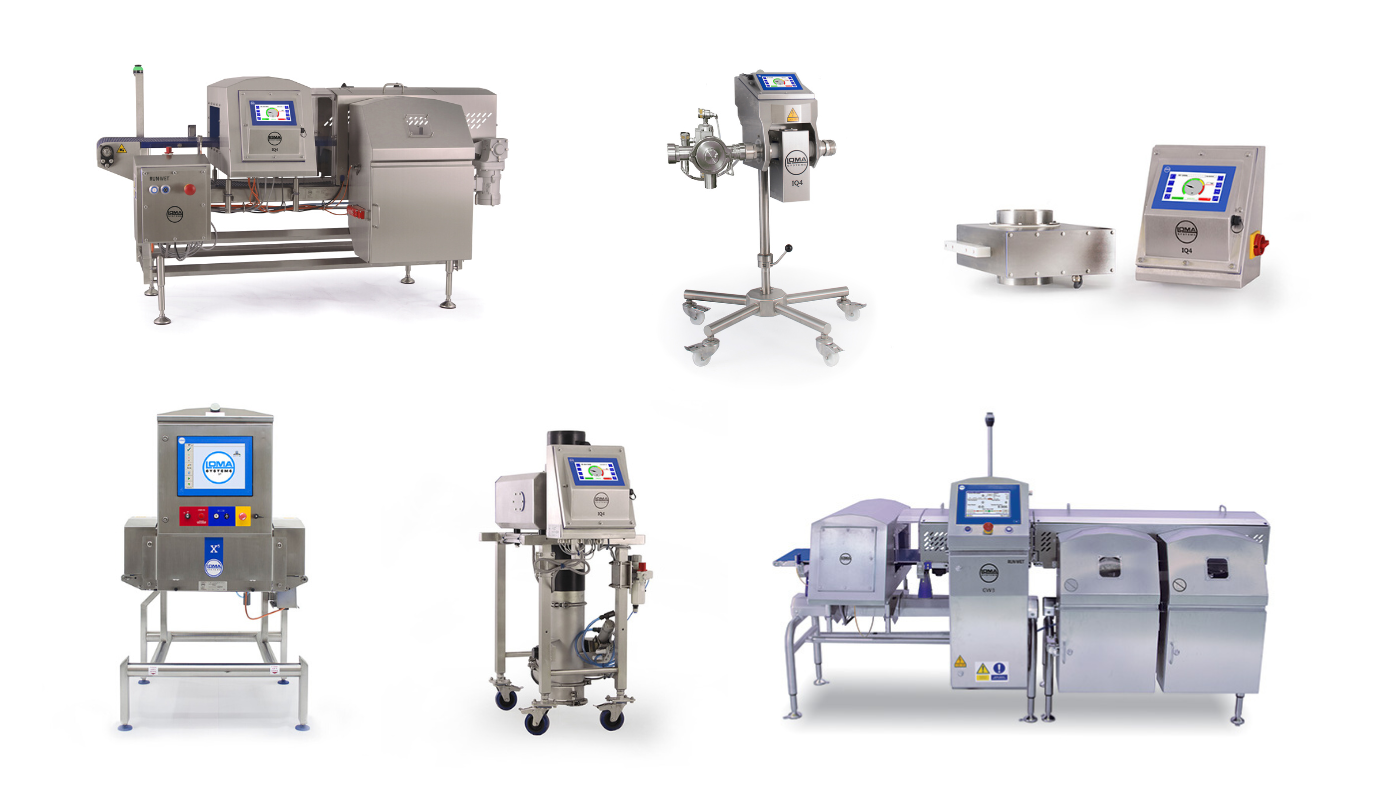
Loma Systems, world specialist in inspection technologies for quality and food safety presents its latest inspection solutions and more particularly its ranges of X-rays, metal detection and weight control. These inspection systems are specifically designed to help manufacturers maintain compliance and improve quality control performance. They are called: CW3 Run-Wet Combo and X5 Space Saver. The CW3 Run-Wet Combo System is a fully IP69 rated checkweigher and metal detector system, designed using the industry's most advanced hygienic principles to enable faster and easier cleaning. The CW3 Run-Wet Combo System and Freestanding Checkweigher offer a host of smart features to maximize production efficiency, including easier-to-wash frames with fast surface water runoff, minimal welds and Reduced contaminant traps for optimal deep cleaning. Loma's innovative X5 Space Saver System is a system that offers first class NFC protection in the smallest possible footprint with a line length of just 1000mm and good levels of detection on a wide range of contaminants including metals, bones, glass and dense plastics, in most types of packaging, including foil trays or metallised foils. The X5 Space Saver is equipped with a color touch screen, multi-level password access, image optimization, AAT technology, and much more.
Synergy leads the way in South West France

A launch of the 2022 sugar beet campaign anticipated by one week
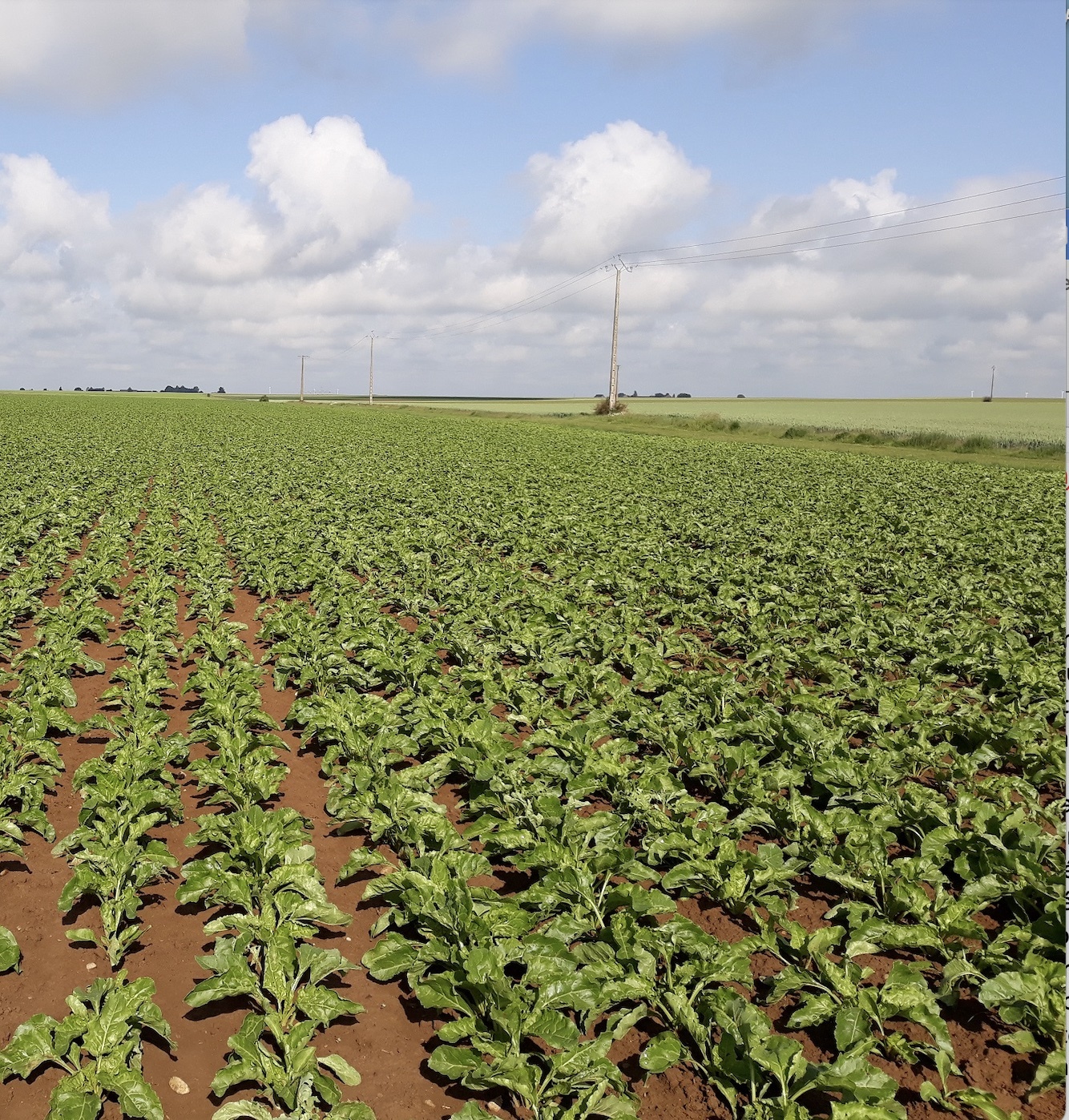
In an atypical context of energy crisis and after a summer of historic drought, Cristal Union launched a new sugar campaign which started in mid-September and which will end before the end of December. This anticipated schedule of approximately one week is a good compromise, which makes it possible to preserve agronomic potential for the beets harvested, while limiting the natural gas needs of the factories in the 1st quarter of 2023, a period during which consumption peaks are expected. . The objective is to avoid any risk of a gas supply disruption at the group's production sites. Cristal Union has in fact secured its gas supplies by contracting, well before this start of the campaign, with a leading energy supplier. The group has also defined a plan to rationalize its energy consumption. All gas-powered dehydration activities have been stopped, to the benefit of only biomass boilers, the deployment of which has been accelerated in recent months. Cristal Union also plans to increase its storage capacity for intermediate products during the campaign, pending less tense periods in terms of energy, starting in the spring, to crystallize the sugar and rectify or dehydrate the raw alcohol. These measures should enable the Group to reduce its gas consumption by approximately 10%. Cristal Union has been investing for years to reduce its energy consumption and its greenhouse gas emissions with an innovative and voluntary decarbonization strategy, and ambitious objectives: 10% energy consumed between 2015 and 2030, 25% emissions of CO2 over the entire scope of the group between 2015 and 2030 (35% on the industrial scope alone). Cristal Union is also rethinking its energy mix by aiming for carbon neutrality by 2050. The objective is to produce the energy necessary for the operation of the group's sugar factories, in particular with their own by-products, resulting from the transformation of beet, for factories energy self-sufficient.
2023 EDITORIAL PROGRAM
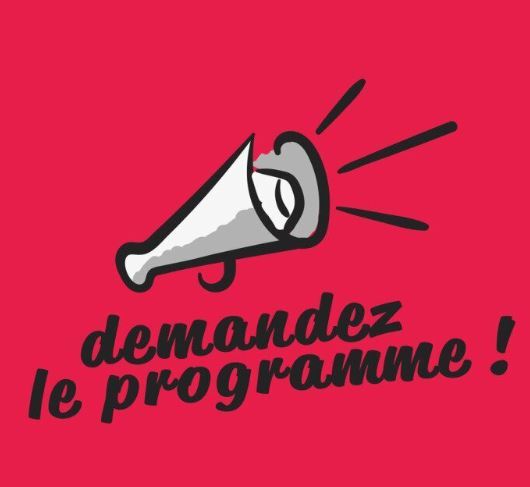
Infovrac offers you this year an editorial program addressing the key themes of the Bulk industry with relevant exhibition partnerships offering qualified visibility.
Contact Stéphanie at 01.60.94.22.26 or stephanie@rpi.fr for more information.
Shortage of vehicles and inflation on fuels
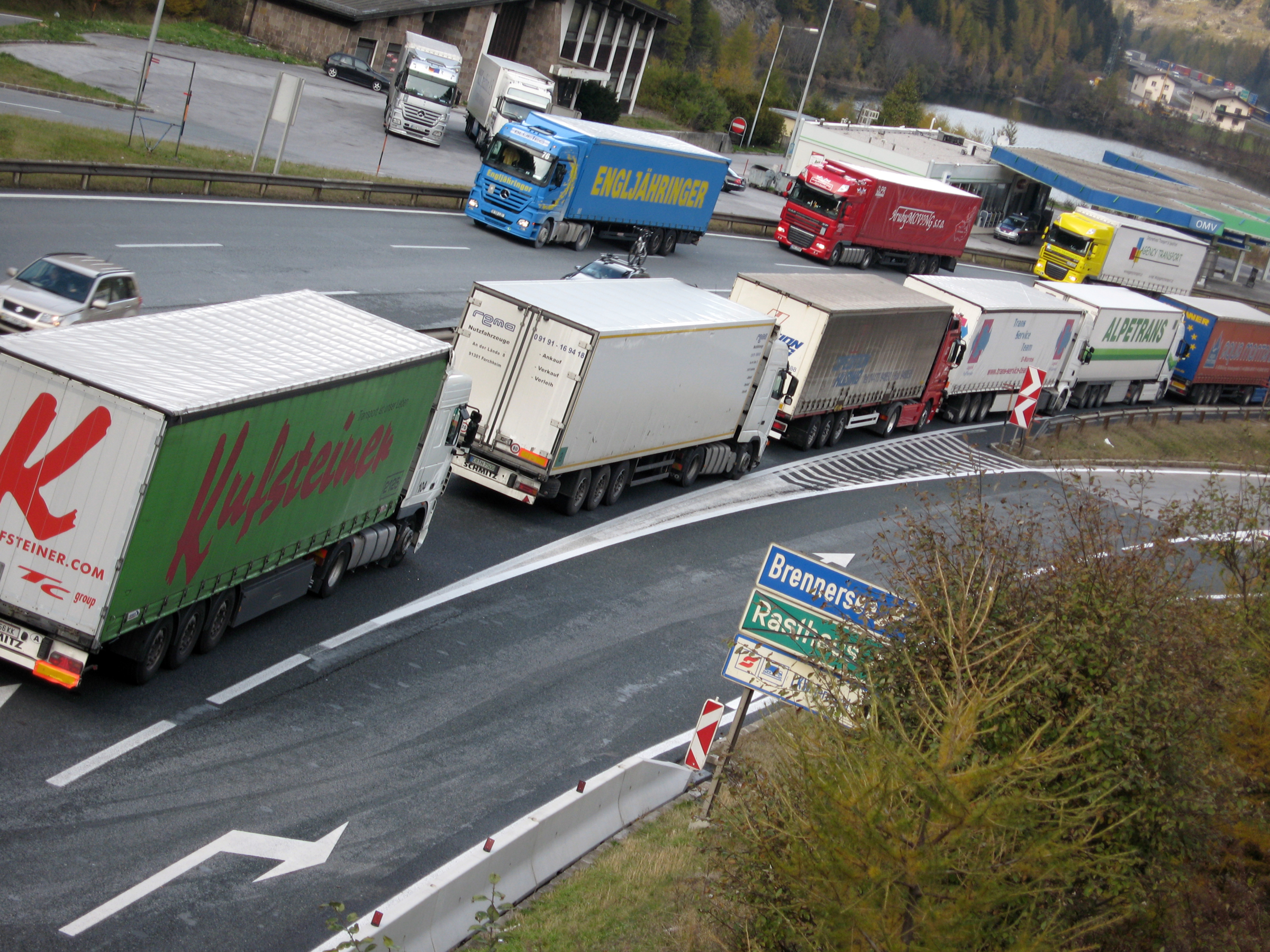
Valfrance brings together its operators for a technical day
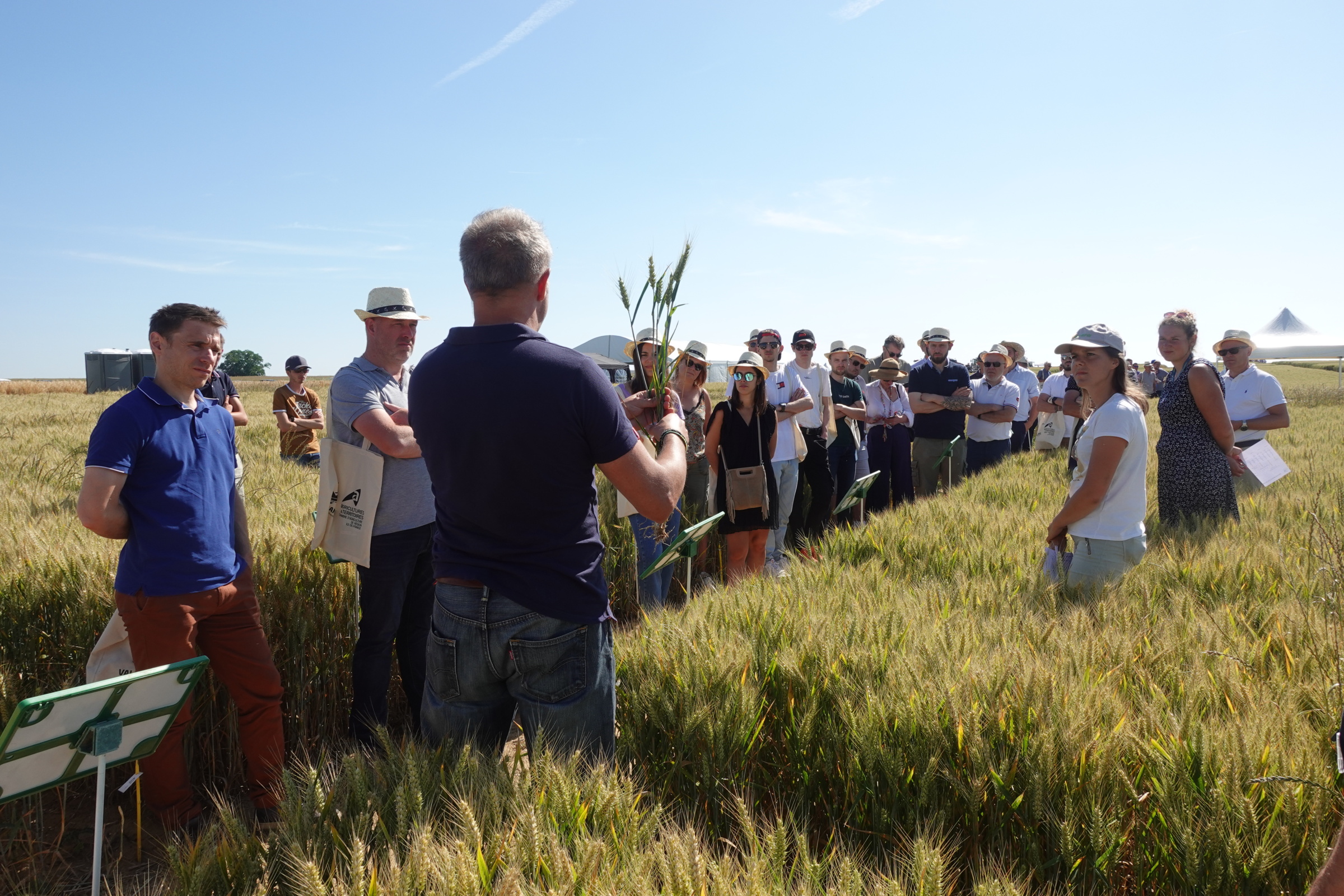
It was in Villeroy (Seine-et-Marne) that the Valfrance cooperative and the Chamber of Agriculture of the Île-de-France Region invited farmers from Seine-et-Marne and Oise last June to a technical platform set up by Val'Epi. For the occasion, around forty bakers, customers of the Grands Moulins de Paris, took part in the debates. During this day, many themes were discussed, such as the traditional varieties of wheat or the fight against grasses. It was also a question of agronomic levers on flea beetles or localized fertilization on corn. Apart from the main crops of wheat and rapeseed, emerging themes, such as carbon or crops dedicated to methanization, CIVEs (intermediate crops for energy purposes), fueled the conversations. Machinery and technological innovations were also on the agenda with the presence of the Arvalis and Terres Inovia technical institutes. Participants also attended a demonstration of electric weeding, discovered precision processing techniques on thistles, and saw a soil compaction and decompaction workshop. Two conferences on current topics ended the day in the presence of Christophe Grison, President of Valfrance, and Laurent Vittoz, Managing Director: one, on the Low Carbon Label, led by Claire Zwiling, Strategic Manager at Valfrance; the other, on the developments to be expected from the common agricultural policy 2023-2027, led by Alain Randon, agro-economic expert at Valfrance.
7th edition of the UNPG Sustainable Development Awards

The UNPG (National Union of Aggregates Producers) has announced the 9 winners of the sustainable development competition for aggregate producers, which rewards the best practices in terms of sustainable development by players in the sector and promotes the companies that have best integrated the economic dimensions. , social and environmental aspects of sustainable development in their activities. The rewarded initiatives are: “Redevelopment” prize: GDFC, a subsidiary of EQIOM Granulats for the redevelopment of the Breurey-lès-Faverney gravel pit. “Best environmental practices” prize: Groupe CB (Carrière du Boulonnais) for the creation of a new rail terminal. “Partnership with local communities” prize: CMGO Ets 17 Carrière de Grézac for the integration of a quarry at the end of its operation in a territory. “Best practices in health and safety” award: BOCAHUT for the development of the ePDP web and mobile application. “Economic contribution / added value to society” award: Lafarge Granulats for the partnership between the city of Nîmes and Lafarge/Crozel TP. “Best operational practices, process or product innovation” prize: Lafarge Granulats for the development of an electric shovel for underwater mining. Prize for “best practices in the field of innovation or recycling, marine or artificial aggregates”: Granulat+ PACA for the launch of the SØLAR range. “Biodiversity” prize: EQIOM for the redevelopment of the Sully-sur-Loire gravel pit to showcase the Loire heritage and provide added ecological value. “Communication” prize: CEMEX for the artistic project “Sand surgery, the river is watching us”. For this edition, the jury has decided to award a Grand National Prize to the company Granulats Vicat for its actions carried out during the Alex storm which affected the La Courbaisse/La Guardia quarry located in the Tinée valley. The files of the 9 winners rewarded by the national Jury will now compete at European level.
Vibrafloor present at the VICTAM show
Vibrafloor, whose activity is specialized in complete emptying, will have the pleasure of welcoming you to the Victam show, a show dedicated to animal feed from September 7th to 9th in Thailand (Bangkok). You can already make your visitor badge
https://www.databadge.net/viah2022/reg/?link=f50cf01becf8f2660119&lan=EN
New unloader
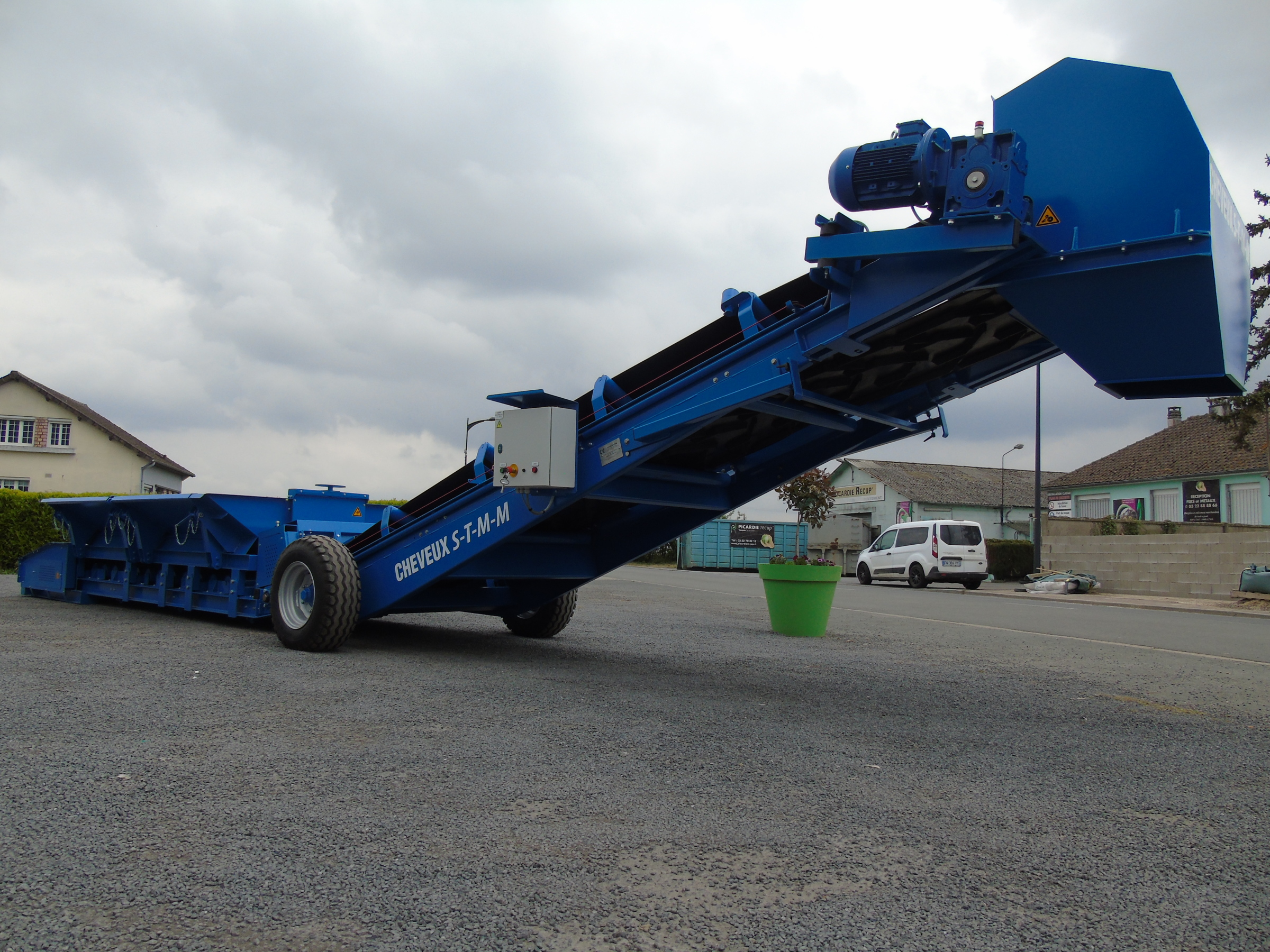
Cheveux STMM continues to expand its range of mobile handling equipment with the development of a new unloader capable of reaching a throughput of 300 t/h. This new equipment was developed in partnership with a historical customer of the company. In order to meet the latter's needs, the truck unloader will be associated with a 20 m grasshopper with a 1,000 mm strip width. This very complementary set will be used to load grain ships. The reception area, 3 m long in the standard version, is equipped with a fragmentation grid, removable extensions as well as a register for adjusting the height of the layer of the product on the belt. In order to optimize unloading times, it is possible to position a truck on each side thanks to the hopper extensions which can be tilted. The waiting time between the unloading of two trucks is therefore considerably reduced. Like what Cheveux STMM offers on its other ranges, this material is fully customizable. Among the options offered: longer reception area to accommodate two side-by-side unloading stations; belt speed variator to optimize the flow and adapt the speed according to the product transported; all stainless steel construction for aggressive products such as fertilizers. Hair STMM designs and manufactures all of its production in France, at its site in Mesnil-Saint-Nicaise.
The Mousset Jetransporte group acquires the carrier Sodytrans
Frédéric Leblanc, CEO of the latter, signed the acquisition of the transport company Sodytrans. Based in Saint-Denis-de-Gastines (Mayenne), near Laval, Sodytrans specializes in the transport of cereals in skips and transport in trays (straw, big-bag, prefabricated concrete parts, etc.). Originally a subsidiary of the Mayenne establishments Rebours, specializing in agricultural trading, Sodytrans today achieves annual turnover of €4 million, which has been growing steadily since its creation in 2011. This new establishment in the north-west of France is strengthening and diversifying the tipper activities already carried out within the Mousset Jetransporte group by Transports Verrière for the public works and building sectors. Above all, Sodytrans will make it possible to expand the catalog of services offered to "farmyard" customers, historical activities of the Vendée family business. Finally, thanks to the proximity of Sodytrans with Nego Transports, synergies in specific and exceptional transport will be able to be developed. After a transition operated by the current manager, Mrs. Marie-Thérèse Lazzari, it is Aurel Trubert, director of Nego Transports and Verrière, who will take over the management of Sodytrans.
New mobile and sanitary big-bag unloader
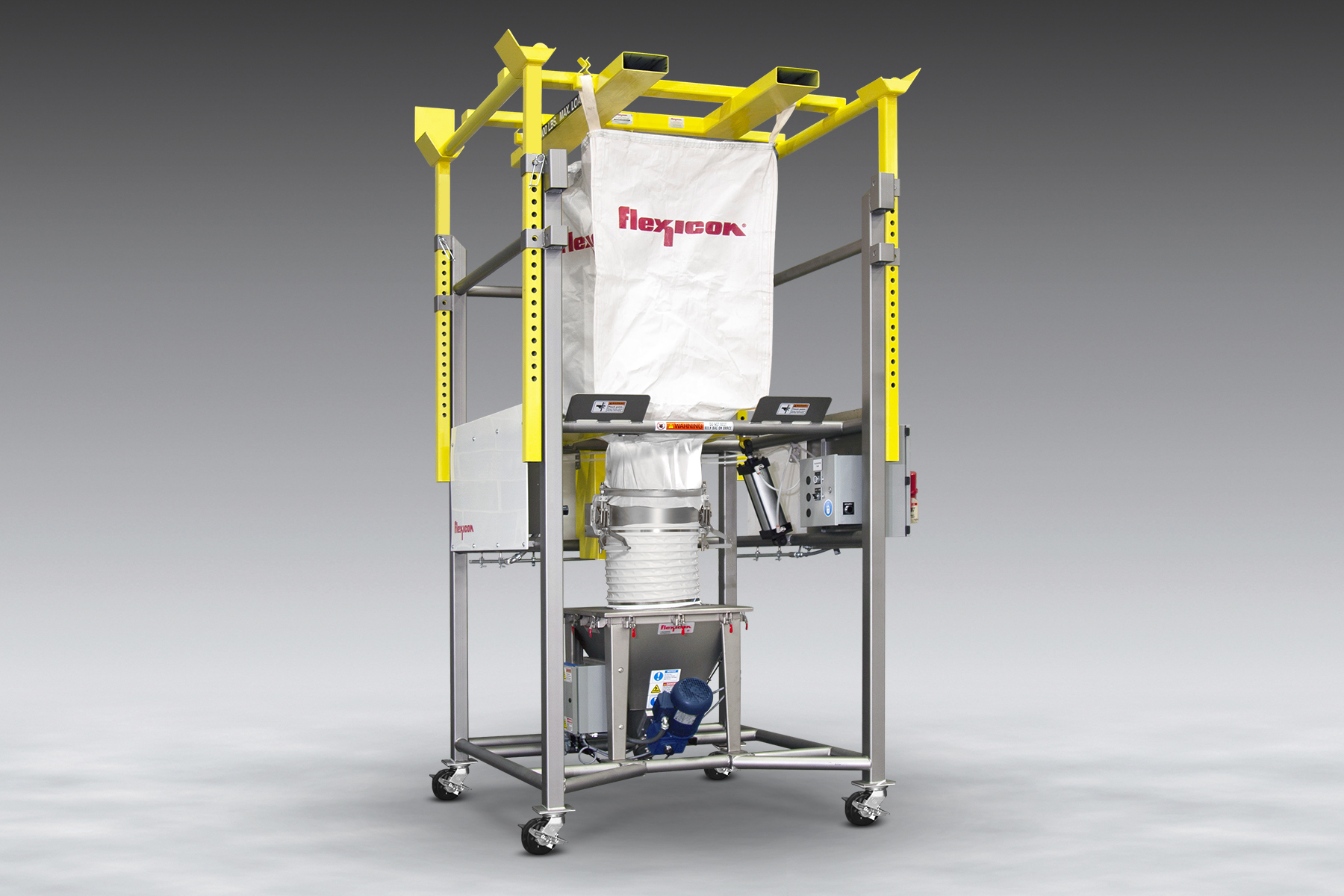
Mounted on casters for better mobility in the factory, the frame of the Bulk-Out BFF Series unloader is equipped with 4 extendable uprights to adapt to big-bags from 915 to 2135 mm in height. Removable bag lifting frame with Z-Clip strap mounts allows big bags to be secured at ground level and then lifted with a forklift into receiving cups located at the top of the unloader frame. The big-bag/hopper interface is comprised of a manual Spout-Lock exit chute locking ring for high-reliability bag connections, and a pneumatically operated Tele-Tube telescopic tube, which exerts tension continues down the blocking ring and bag exit chute as the big bag empties and lengthens, promoting flow and emptying. Increased flow is provided by the Flow-Flexer bag activators which raise and lower the opposite bottom sides of the big-bag at regular intervals in a pronounced V shape, which promotes total emptying without manual intervention. The built-in hopper can be equipped with a metering device for pneumatic or tubular cable conveying lines, a loading adapter for flexible screw conveyors, or a universal flange outlet for connection to other downstream processing equipment or storage tanks. The entire unit can be moved to multiple locations within the plant, eliminating the cost of multiple stationary units and allowing for easy transportation to a cleaning station between production runs. Designed to facilitate thorough cleaning, the adjustable uprights are mounted on the outside of the frame posts instead of telescoping inside, while the stainless steel horizontal members, in round or square tubing, minimize retention of water and cleaning solutions after washing. The system is also offered in all stainless steel construction to current food, dairy, pharmaceutical and industrial standards, and in carbon steel with durable industrial coatings. The Flexicon Mobile Big Bag Unloader can be moved to many locations within the plant.
New Wika development center

The new development center of the Wika Group, built at its headquarters in Germany, has been completed. The investment represents approximately €50 million and will boost the development of measurement solutions for Industry 4.0. This development center is the biggest investment in innovation in the company's 75-year history. The modern complex covers a total area of 24,100 m2 and brings together all the departments involved in the innovation process. This investment represents for the company the opportunity to develop new products and solutions in a shorter time as well as the penetration of new markets. Thanks to the creation of the center, the development department will be reinforced with around fifty new positions in 2022, which reflects the company's growth strategy. Wika continuously invests in the expansion of its production sites around the world. Today, the group has a total of 43 subsidiaries and more than 10,000 employees.
The Liftvrac scraper eliminates material losses
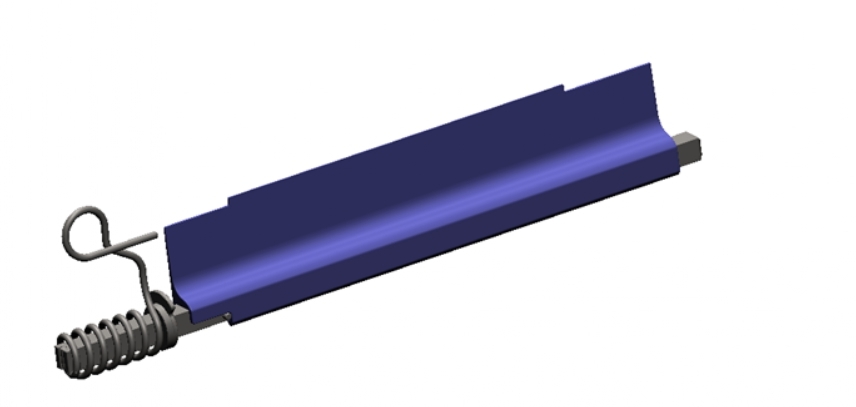
Specialist in lifting conveyors for bulk food, the company Liftvrac, recognized for its innovative technology with its patented belt, is launching a new scraper. The system will eliminate material losses by scraping the smooth conveyor belt. As part of a process of continuous improvement of hygiene, Liftvrac has divided by three the number of parts of its scraper. This improvement also facilitates cleaning compared to the previous generation. The integration of a foolproof device guarantees the correct positioning of the scraper blade to guarantee its optimal use. Other improvements will be launched by the end of 2022 and will push hygiene and comfort of use even further for operators with, among other things, a focus on the elimination of hollow bodies. In addition, the company Liftvrac based in Geneston (Loire-Atlantique), which has about fifteen employees, including five in production, has just reorganized. Quentin Guglielmini is general manager, Yoann Dauphin commercial director, and Magdalena Bruneau administrative and financial director.
In 2022, the Hennlich Group celebrates its 100th anniversary!
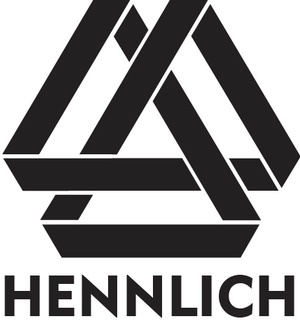
In 1922, a small company located in Duchcov, Czechoslovakia, specializing in wholesale trade for mines and quarries, was founded by A. Hermann, then 20 years old. Significantly affected by the political situation in Eastern Europe, he had to leave his native Czechoslovakia after the Second World War to settle in Austria and rebuild society. After new political upheavals at the end of 1989, his grandson Hermann Zebisch decided to return to his roots and relocate Hennlich to what would become the Czech Republic in 1993. Since 1991, Hennlich has been based in Litomerice (Czech Republic). Today, the Hennlich group is represented in 18 countries around the world and is made up of 800 women and men, specialized in various industries generating a turnover of more than €100 million. Such an event deserves to look back; nevertheless we prefer to look ahead and face new challenges every day, in order to better serve our customers and partners. More than ever, Hennlich is focused on the quality of our materials and services.
Fischbein has been developing its range of bag closing machines for more than 100 years
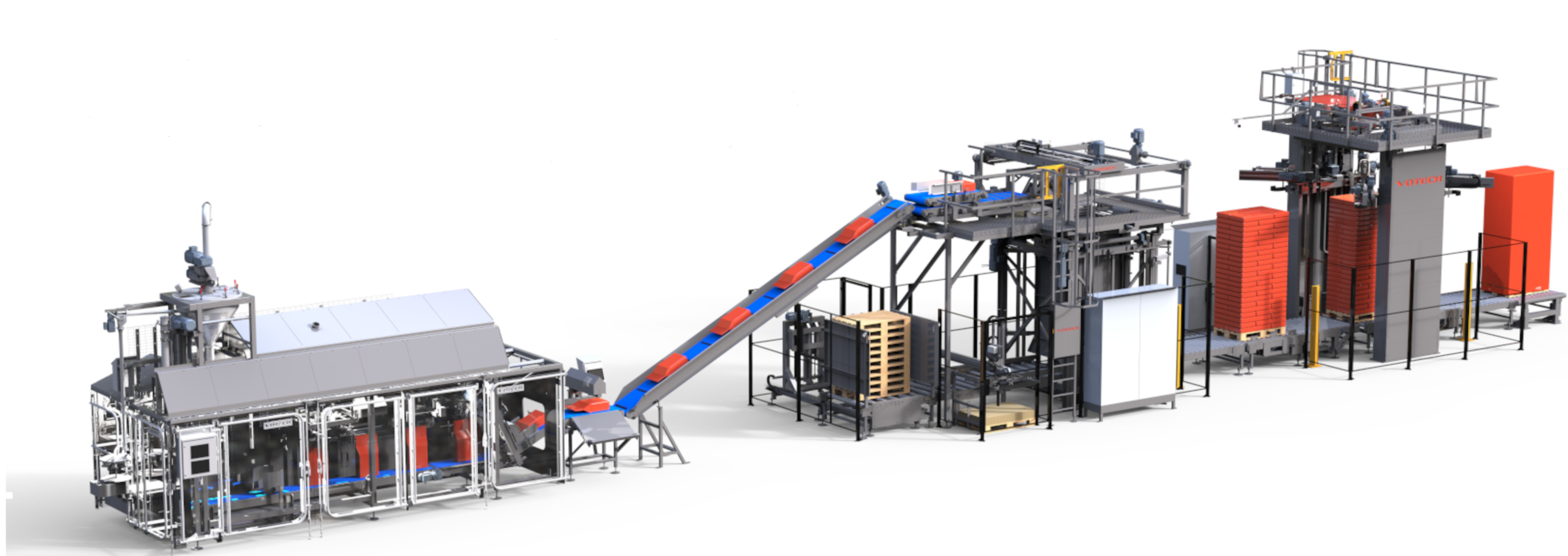
The recent acquisition of the Dutch company Votech (Votechbv.com) by Fischbein consolidates its ability to offer 100% automatic bagging lines with high added value, as well as palletizers and stretch hood machines. The Votech brand is recognized for providing high precision solutions and guaranteeing quality hygiene in the food sector, for milk powder, starch, sugar...
Normandise Petfood presents its new logo

The world changes, every day: the states of mind too. To anchor Normandise Petfood in the future, the company has adopted a modern, strong image, in line with its values, its DNA and the world in which it operates. Normandise Petfood enters its 30th year of activity. General management is now provided by Jean-Charles and François Duquesne, sons of the company's founders. The generational transmission confirms the anchoring and the continuity of its activity, it reinforces the assertion of adapting to its customers, to new markets with modern tools. The previous logo, which everyone knows, was all round and with bright colors. The company is entering this new era and is adorning itself with a new brand image corresponding as closely as possible to its values: know-how, cohesion, performance and serenity. The new logo is simpler, it's a real logo that stands on its own. Without writing Normandise Petfood in the logo, it is made to be recognizable. The novelty: it is monochrome in black on a white background. A refined and stylized logo, where the symbolic presence of the dog and the cat specifies the objective of the work that the company carries out every day and the ambition to "delight our dog and cat friends, and satisfy their masters". It is therefore a reflection of the company and its personality. Its DNA, its identity and its mission remain the same: this is why we want to highlight the dogs and cats for whom we work every day.
New at Lessine!
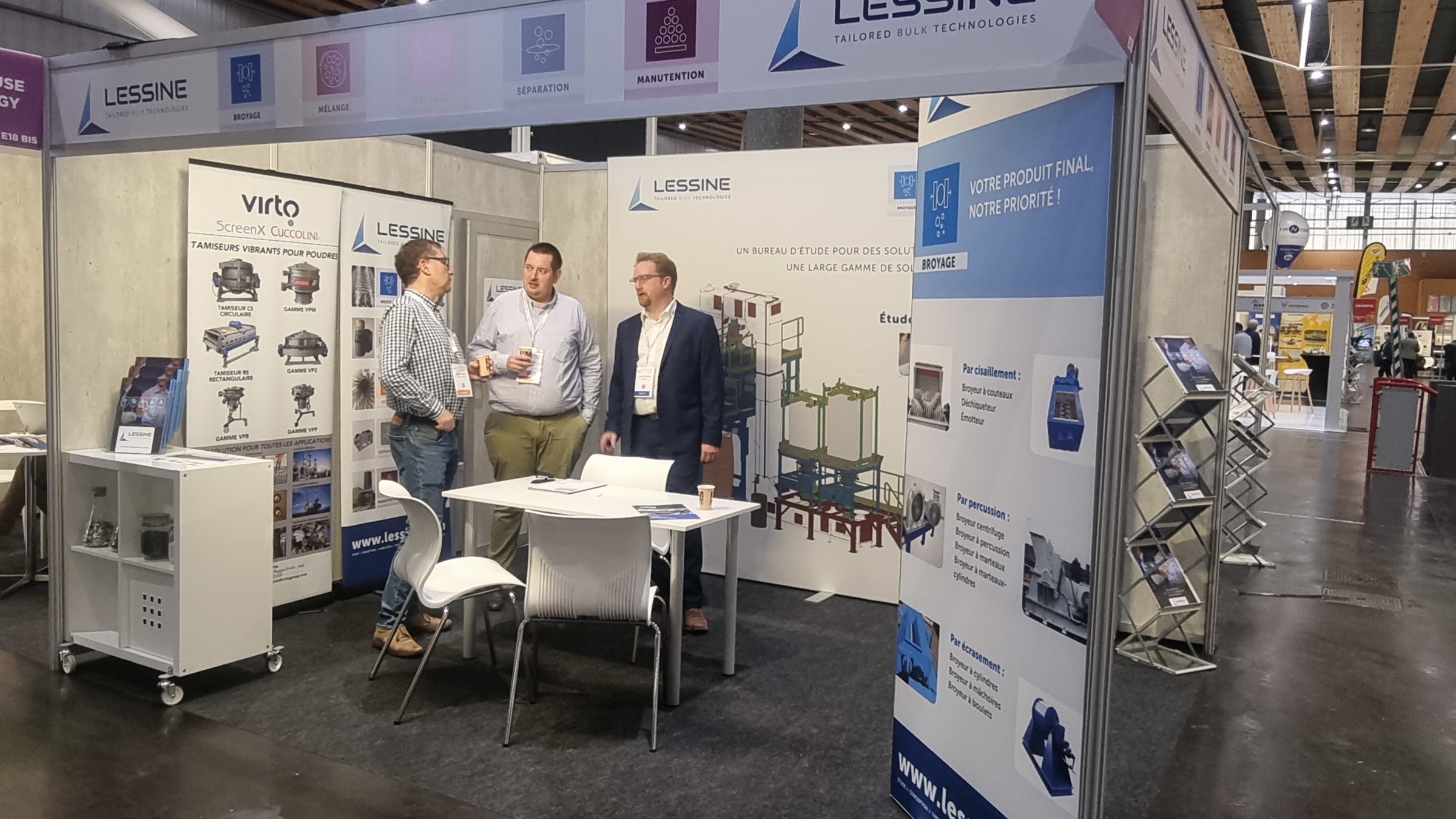
Aurélien Delhay (ex-sales manager of Eirich in France) joined the Lessine team in September 2021. He is responsible for sales in France, Tunisia, Algeria and Egypt. With nearly 15 years of experience acquired in grinding, dosing and mixing, its objective is to retain a large existing clientele acquired since 1890, and develop new contacts in all industries (food, minerals, metallurgy, chemicals, pharmaceuticals, recycling, etc.) from his office, ideally located in the Lyon region. He regularly accompanies his clients during tests carried out in the test room located at the company's headquarters, in Péruwelz in Belgium (not far from the French town of Valenciennes). Lessine offers solutions (grinding, drying, mixing, separation and handling) for bulk, ranging from individual equipment to turnkey production lines. “It has already been 4 months since I joined Lessine and I was very well received by all the employees. There is a good atmosphere and everyone wants to do well! My participation in the Salons – SIM (Lille) and Vractech (Mâcon) – allowed me to realize the dynamism of our society. What appealed to me at Lessine was the adaptability and pragmatism of the tailor-made solutions offered,” explains Aurélien Delhay, technical sales manager at Lessine.
Vrac Tech well established in the industry
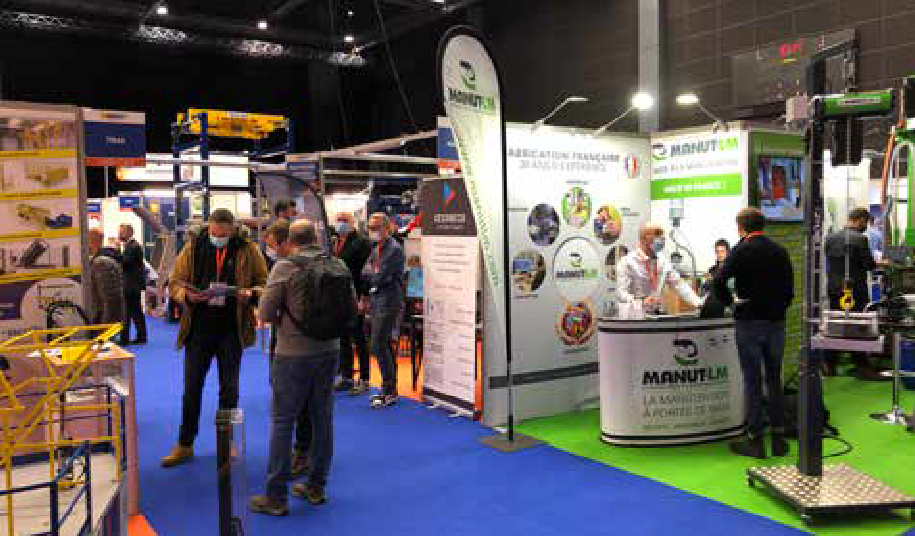
Si depuis la rentrée de septembre les Salons professionnels ont commencé à rouvrir leurs portes, et si les exposants qui, dans la grande majorité, ont décidé de jouer le jeu pour le plus grand bien de la filière, notamment celle du vrac, il n’en est pas de même du côté du visitorat. En effet, nombreuses sont les entreprises qui ont limité les déplacements de leurs employés pour les raisons qu’on connaît. Même si les sourires reviennent, la moindre déclaration gouvernementale aurait ten- dance à freiner cet élan. Vrac Tech en a fait les frais, puisque la veille de l’ouverture du Salon, le Premier ministre, Jean Castex, demandait la plus grande prudence aux Français.
LES EXPOSANTS ET LES NOUVELLES TECHNOLOGIES
Dans un tel contexte, le Salon, créé en 2016, et qui une année sur deux joue l’al- ternance avec Le Mans, a été un bon cru. Près de 220 exposants, pour la plupart très en pointe avec les nouvelles technologies et qui disposent d’une offre complète, étaient répartis dans 3 halls en fonction de leurs secteurs d’activité : process, manutention, stockage, pesage, logistique, transfert.
LES ENTREPRISES PASSENT UN CAP
Mais c’est en parcourant les allées et en rencontrant les exposants que nous avons pu véritablement prendre la température de la filière. Si le noyau dur des exposants du monde du vrac était bien présent à Vrac Tech, il est intéressant de constater que de jeunes start-up, telles que Scan & Co, spécialisée dans le relevé 3D par scanner et la modélisation 3D à partir de nuages de points pour l’implantation de machines et d’équipements, ont fait leur apparition. D’autres entreprises ont bien compris les enjeux du vrac et ont décidé de passer un cap en renforçant leurs structures, notamment en ce qui concerne les bureaux d’études et le secteur de la R&D. Il est vrai que face aux demandes de plus en plus spécifiques des industriels, les profession- nels doivent être capables de proposer une offre d’équipements de premier plan, et mettre en avant toutes leurs compétences en matière de services sur mesure.
DES CONTACTS DE QUALITÉ
Ce qui prouve que les échanges entre exposants et visiteurs, même si ces derniers n’étaient pas nombreux, ont été fructueux. Jérôme Muller, directeur de la coordination des services au sein des Transports Lassalle, en est convaincu : « Il est important en tant que transporteur dans le vrac d’avoir un stand ici. Nous en avons profité pour présenter l’activité logistique et le côté développe- ment ferroviaire. Nous avons eu des contacts de qualité et des perspectives de développement avec des clients qui ont de vrais besoins. » De son côté Mathias Elie, directeur commercial France, chez Cetec, concepteur et fabricant de ligne d’ensachage et de palettisation, partage le même constat : « Même s’il n’y avait pas beaucoup de monde dans les allées, je peux vous garantir que les projets étaient bien présents dans les stands, avec des clients qualifiés et pour nous, c’est l’essentiel. » De même pour Cheveux STMM (sauterelles, convoyeurs, lanceurs, projeteurs), entreprise basée dans les Hauts-de-France, était aussi sur place, et son directeur, Alain Cheveux, qui reconnaît l’impor- tance de sa présence sur le Salon : « Vrac Tech est le passage obligé pour les acteurs de la filière du vrac et, surtout, c’est l’occasion de rencontrer nos clients, de les fidéliser, et de partager avec eux leurs problématiques pour leur apporter des solutions ».
L’OCCASION DE FAIRE SON MARCHÉ
Le Salon Vrac Tech, c’est aussi le lieu idéal qu’ont choisi certaines entreprises pour présenter leurs dernières nouveautés. Par exemple, Iserco a mis en avant sa station de remplissage de big-bag avec une évolution de la partie décrochage automatique ; le groupe hollandais Apollo nous a fait découvrir son élévateur à godets pour le convoyage vertical du produit vrac ; Morillon, connu pour ses extracteurs pour produits difficiles, nous a parlé d’Hydracone, une évolution de sa machine à fond plat qui augmente les débits d’extraction et garantie le nettoyage du fond de silo.
DES PISTES POUR L’AVENIR
Salon de référence dans le domaine du vrac, l’édition mâconnaise de Vrac Tech a accueilli en grande majorité des exposants d’Au- vergne-Rhône-Alpes et du Grand Est, mais aussi des Hauts-de-France et d’Île-de-France. « Même si je remarque que nous avons perdu un peu de visiteurs à cause des restrictions sanitaires, explique Philippe Dutheil, directeur du Salon, j’ai vu que les exposants étaient contents de se retrouver, car pendant 2 ans ils n’ont rien eu. Avec cette 2e édition bourguignonne, je peux dire que la graine qui a été plantée a maintenant germé. Mais il va falloir l’arroser ! » Et des idées pour l’avenir, les organisateurs n’en manquent pas : atteindre les 250 exposants, s’ouvrir à l’international, mais aussi mettre des espaces à disposition des exposants pour que ceux-ci puissent proposer à leurs clients et aux visiteurs des micro-forma- tions sur leurs équipements.
Dominique Roudy
Val’can.2 air cannon on airlock
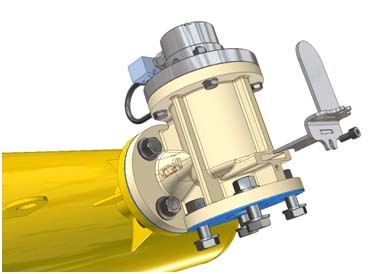
The Astre group has a network director

Christophe de Korver has been appointed by Astre to the position of network director, with the mission of consolidating and extending the group's European network, which currently has 160 members. In other words, to achieve, in each country where Astre is present, the same level of development as in France, its country of origin. In particular, he will ensure that all partners across Europe have the same digital, purchasing and supply, human resources or sales systems. In addition, he will be responsible for the recruitment and selection of new members, and will be responsible for coordinating and fostering cooperation and collaboration between them, not only at the national level, but also between different countries. To do this, Christophe leads a team of four facilitators, in charge of the various key regions of the association, who coordinate and implement the agreed strategic plans, and analyze the results. Christophe de Korver has worked in various European countries, notably managing the subsidiaries of the Gefco group in the Czech Republic and Romania, or the operations of Deutsche Bahn in France, and, more recently, the Romanian subsidiary of FM Logistic.
Wam France presents Dustfix
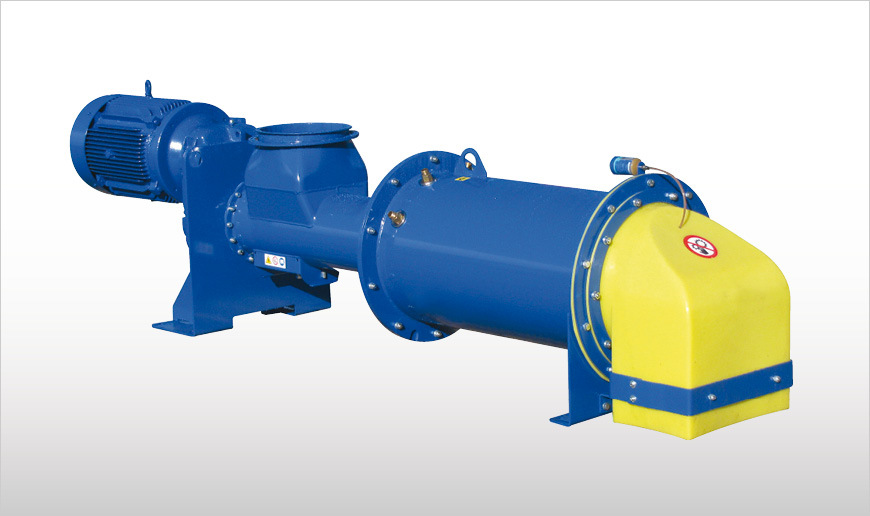
VNF and AUTF sign a partnership agreement
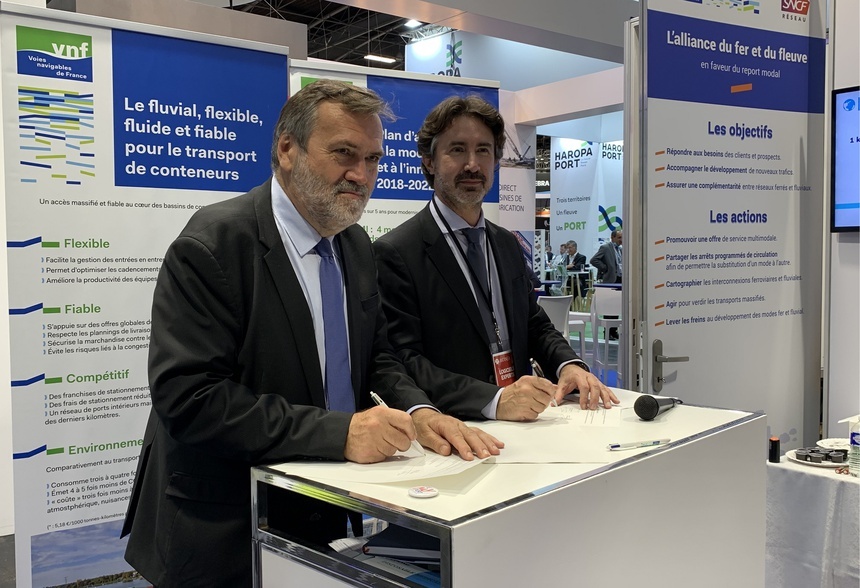
As part of the International Week of Transport and Logistics Innovation (SITL), Voies navigables de France and the Association of Freight Transport Users signed an agreement in mid-September which aims to accelerate the conversion of shippers. and companies using the transport of goods to own logistics as part of the FRET21 approach, and more particularly to river logistics. In Paris, Porte de Versailles, this trade fair for the transport of goods covers the entire logistics chain through many areas of expertise, and the fact that Thierry Guimbaud, CEO of VNF, and Fabrice Accary, CEO of the 'AUTF, combining their forces shows, in the current context of global warming, that river transport responds to a marked desire on the part of shippers to use transport solutions that emit less CO2. Moreover, within the two entities, we are well aware that water transport offers significant traffic development prospects thanks to the modernization of the infrastructure underway. This agreement only strengthens the close collaboration that exists between the two players, but will above all make it possible to accelerate the modal shift from road to rail or waterway, within the FRET21 framework.
FRET21: a support system for reducing the environmental impact
Initiated by the AUTF and Ademe, the FRET21 support system is aimed at companies so that solutions are found in reducing the environmental impact of their activities, and helping them build more sustainable supply chains. This voluntary commitment approach encourages companies to define a target for reducing CO2 emissions, and the concrete actions to achieve it. In addition, they can enhance the environmental performance of their logistics optimization actions as well as the energy efficiency of alternatives to diesel.
New report identifies key solutions to reduce carbon footprint of global mining
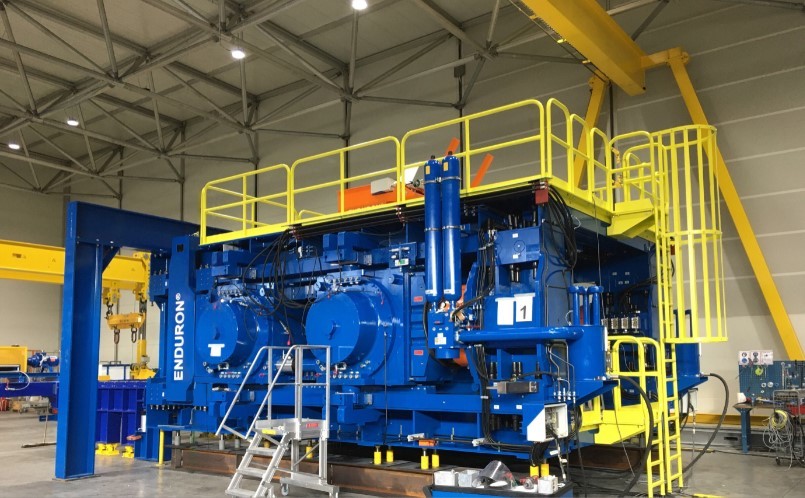
According to a new report released in May, the global mining industry must abandon old systems and processes if it is to meet the challenge of decarbonization. This report calculates the mining industry's share of global energy consumption and identifies ways to facilitate the industry's transition to net zero emissions, essential to limit temperature rises in accordance with the Paris Agreement. The report, commissioned by Weir Group PLC, analyzes energy data from the mining sector from more than 40 studies, providing insight into the energy consumption of mining and mineral processing. It shows that the total amount of energy used by the mining industry - which plays a crucial role in providing the metals used at the heart of the modern economy - accounts for about 3.5% of global energy consumption. Metals produced by mining are critical to the global transition to low-carbon infrastructure. But if we do not act, the increased demand for metals, such as copper, nickel and zinc, is expected to lead to increased energy use by the mining industry in the coming years. The report says there are currently technologies that can curb this trend. In particular, he points out that fragmentation - that is, the crushing and grinding processes - is the most energy-intensive activity of mining sites: around 25% of the final energy consumption of mining operations. This corresponds to the energy used by 221 million UK households as well as 1% of total consumption worldwide. Fragmentation is therefore the main target of efforts to reduce energy consumption.
Small improvements in fragmentation technologies can lead to significant savings in energy consumption and greenhouse gas emissions. For example, a 5% increase in the energy efficiency of the fragmentation process could reduce greenhouse gas emissions by more than 30 Mt CO2 equivalent. Replacing traditional fragmentation equipment with new grinding technologies would reduce indirect emissions within the mining industry value chain, for example by eliminating the need to manufacture high-emission steel grinding balls. . The energy consumption of the remaining mining industry is distributed as follows: diesel in various forms of mobile equipment accounts for 46%, electricity in mines (ventilation) 15%, and "other uses of the industry". 'electricity' 14%. The report points to other possible solutions to reduce energy consumption in mining, such as optimization, big data and artificial intelligence. In addition, if mining equipment is equipped with zero-emission energy sources - for example renewables, energy storage and alternative fuels - the industry could achieve zero emissions. emissions, which would reduce the role of carbon offsets and credits. This report comes at a time when industry is under increasing pressure to produce essential minerals to support the world's most important structural trends, from population growth to urbanization and decarbonization. Copper, nickel, steel and lithium are key components of electricity transport and storage, electric vehicles and renewable energy infrastructure. The transition to a low-carbon economy will lead to an increase in the primary consumption of these products from mining, even when recycling is taken into account. It is therefore important that mining becomes more sustainable.
Hervé Morin, re-elected president of Ports de Normandie

Following the regional and departmental elections of June 20 and 27, Ports de Normandie has just renewed its office. Hervé Morin was re-elected president and all the member communities of the mixed union are represented. On this occasion, all of these elected officials reaffirmed the port ambition that they entrusted to the Ports of Normandy teams for the next 6 years.
"I hope that the spirit of consensus and co-construction which has guided our action for 6 years within Ports de Normandie will continue, and that this mixed union will continue to assert itself as a major port player, regionally, nationally and at the international level in order to contribute to the economic development of Normandy and to its influence, ”declared Hervé Morin, President of the Normandy Region and Ports of Normandy.
In addition to its president, the members of the Ports de Normandie office are:
- 1st vice-president: Jean Morin, president of the departmental council of Manche;
- 2nd vice-president: Alain Bazille, departmental councilor of Seine-Maritime (VP);
- 3rd vice-president: Michel Fricout, departmental councilor of Calvados (VP);
- Joël Bruneau, mayor of Caen and president of Caen la Mer;
- David Margueritte, president of Cotentin;
- Nicolas Langlois, mayor of Dieppe, vice-president of Dieppe Maritime.
MARTIN ENGINEERING: Bulk material handling and storage problems: flow aid solutions

In order to achieve optimum material flow and a controlled and uniform flow on conveyors transporting large volumes of bulk material, the transfer areas at the conveyor belts and silos must be designed not only to accommodate, but also to facilitate the flow of handled bulk. Unfortunately, because so many conditions can limit the flow of bulk material, designing a conveyor that would address every material plugging problem is nearly impossible. Even modest changes in moisture content can cause sticking to the chute or walls of storage units or agglomeration at low temperatures, especially if the material stagnates for some time. Even in continuous operation, bulk material can compress, and physical properties often change due to natural variations in deposits, different suppliers or specifications, or if the material has been in storage. If it continues to accumulate, material may come to rest on the belt scrapers and material residue may settle on the return run of the belt, fouling the rollers. In the worst case, the bearings can lock up completely. To overcome these problems, a variety of devices commonly referred to as "flow aids" can be used.
What are drainage aids? As the term implies, flow aids are components or systems installed to help transport material through a chute or silo, to control dust and spills. Flow aids come in a variety of forms, including rotary and linear vibrators, high and low pressure air guns and aeration devices, as well as low friction coatings, and chute designs. to promote efficient flow of bulk materials. These modular systems can be combined to complement each other and improve performance. The components can be used for virtually any bulk material, including hazardous and extreme working and temperature conditions. One of the main advantages is that an operation can gain a level of control over the material flow that is not possible otherwise. When using flow aids, it is essential that the chute and support components are sound, and that the flow aids are properly sized and fitted, as the operation of these devices may create potentially damaging stresses on the structure. A properly designed and maintained chute will not be damaged by the addition of properly sized and fitted flow aids. It is also important that any unclogging device is only used when unloading is possible (hatch open) and the material can flow freely. The best practice is to use flow aids as a preventative solution, controlled by sequencers or sensors to prevent material build-up, rather than waiting for the material to accumulate and restrict the flow. Using these flow aids in preventative mode improves safety and saves energy, as unclogging aids can be programmed to operate only when needed to control the flow. build-up and clogging.
Air cannons : One solution for managing the build-up of material in chutes and tanks is the low pressure air gun, developed and patented by Martin Engineering in 1974. Also known as the "air blaster", it uses compressed air. of a plant to abruptly evacuate the accumulation. Cannons can be mounted on metal, concrete, wood or rubber surfaces. The basic components include an air reservoir, a quick exhaust valve with a trigger mechanism and a nozzle to generate the desired airflow to most effectively clear the build-up.
The device does the job when the compressed air (or other inert gas) in the tank is suddenly released from the valve and directed by a special nozzle, which is strategically positioned in the transfer area, the preheating tower, the ducts. , carnals, cyclones or any other area of the process where material accumulates. Often installed in series and precisely sequenced for maximum effect, the system can be synchronized to best suit the industrial process and material characteristics. Air blasts help break down material build-ups and clear clogged pathways, allowing solids and / or gases to resume their normal flow. In order to customize the solution using air guns, specific air blast characteristics can be achieved by tailoring the operating pressure, tank volume, trigger head design, and nozzle shape.
In the past, when material build-up became a problem, users would go into degraded mode until the next scheduled shutdown, and had to endure costly downtime before installing an air cannon array. It can cost a business hundreds of thousands of euros per day in lost production. Many designers are proactively incorporating the necessary reservations so that future airgun installations can be completed smoothly, and without extended downtime. New technology has even been developed for installing air guns in high temperature applications without plant and production downtime, allowing specially trained technicians to mount the guns on furnaces, preheating towers, clinker coolers and other areas of the process as production continues uninterrupted.
2022 EDITORIAL PROGRAM

HE IT IS ! Discover the new 2022 editorial program of your magazine with the themes of the "Materials" section, the special files as well as our beautiful partnershipexhibithion partnership https://www.infovrac.com/devenir-annonceur.htm
Do not hesitate to contact Stéphanie on 01.60.94.22.26 to discuss your communication projects ![]() .
.
Talk to you soon !
Ergonomic supply of reactors by pneumatic transport
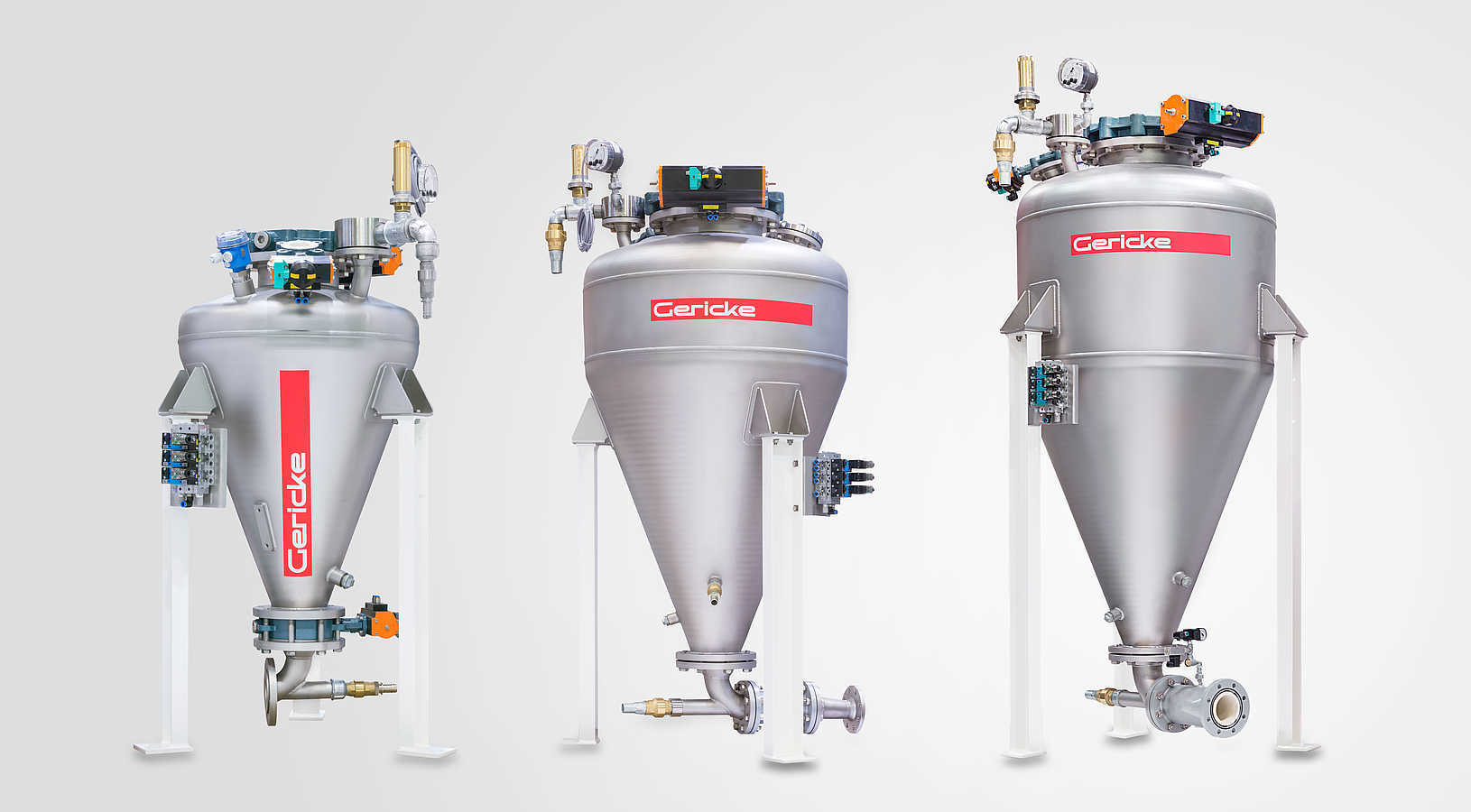
Feeding reactor powders can be a real challenge. There are many questions that arise from this. Gericke answered these questions by designing and delivering an ergonomic reactor feed system using pneumatic suction and pressure conveying systems. How to load a reactor with precise quantities of different types of powders, some even having very poor flow characteristics, without creating dust clouds, in complete safety for the operators, and while limiting material handling operations as much as possible firsts by operating staff? Faced with all these questions, Gericke found the answers by combining pneumatic suction and pressure transport systems. One of the world leaders in the chemical industry has entrusted Gericke with the study and construction of an installation allowing the introduction of different types of powders packaged in bags into large reactors of more than 100 m3. The most traditional filling method would have consisted of unloading the bags directly into the reactor through an inlet positioned more than 12 m from the ground, causing safety and ergonomic problems for operators forced to handle the bags from the ground floor. - floor. Gericke's solution was to install a bag unloading station at zero level, fitted with a very large door allowing the unloading of 20 kg bags of extremely light and volatile filter aids. The hopper of the bag-unloader, equipped with a screw at the bottom of the trough, feeds a pneumatic transport which lifts the product in a weighed hopper. This configuration makes it easy to empty all powders, including those with very poor flow. The receiving hopper, mounted on load cells, controls the recipe that will be fed into the reactor. The load made up of different ingredients is between 60 and 500 kg. The initially vacuum receiving hopper is pressurized. The feed is thus shipped to the reactor via dense phase pneumatic transport. For reasons of an explosive atmosphere inside the reactor, the pneumatic transport is carried out under nitrogen. The so-called "dense phase" mode has been favored to limit nitrogen consumption to a minimum. The bag emptying zone was located more than 30 m from the reactor in an isolated non-ATEX zone. With the pneumatic transport in the dense phase, this zone could very well have been positioned at more than 150 m. Given the technical challenges, during the project Gericke tested and validated the operation of its dense phase vacuum transport systems on all customer products.
Automation of batches and small quantities at Azo
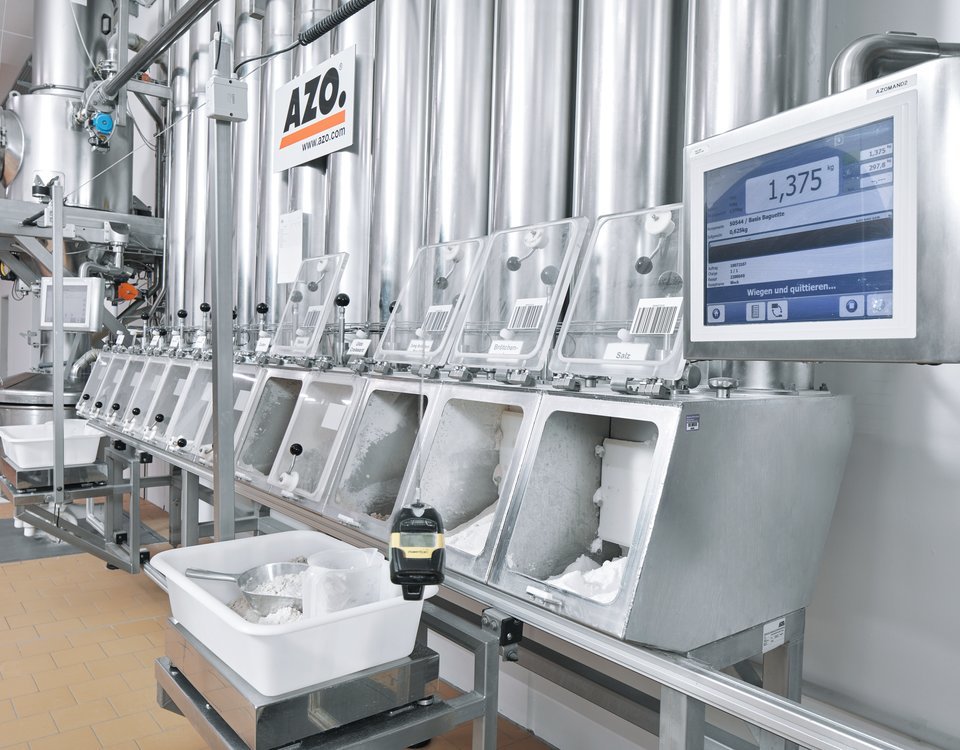
In the manufacture of food, pharmaceutical, chemical and plastic products, exact adherence to recipes plays a decisive role in the quality of the product. As a manufacturer, it is imperative that you can rely on the precise sourcing of your raw materials. Each ingredient added must be carefully documented. With its 7,500 vacuum weighing systems already supplied, Azo is positioned as one of the specialists in the market for feeding mixers with large components. After having put into service more than 650 systems all over the world, from ManDos solutions to the AZO Component in their most diverse versions, while passing through the DosiBox and the ShuttleDos, the manufacturer is among the first in the rank of No. 1 in automation of small and very small quantities.
The +:
• sustainable and economical solutions with low energy consumption;
• proven safety and advanced technology;
• high precision, whatever the weight (small or large quantities);
• protection of operators and products, solutions without contamination;
• great flexibility of weighing, from 10 g to several hundred kilos;
• modular structure possible, simple extension, easy change of formulas;
• reduction of unproductive downtime, for example through an optimized component collection system, especially at high speed;
• user-friendly control and visualization systems;
• secure batch traceability and continuous documentation.
Chupinpack creates a packaging machinery department
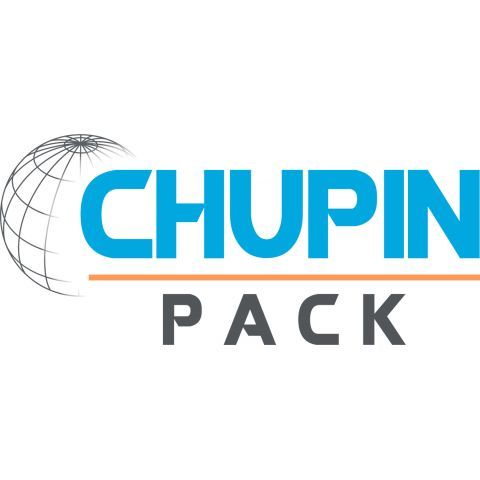
Chupinpack specializes in sealing solutions for powder and other dry product processes with BFM sleeves, Cinchseal rotating shaft seal housings and Vortex valves. Recently, the company created a packaging machinery department, drawing on the experience and expertise in this field of its founder, Guillaume Chupin. G Webb Automation has entrusted Chupinpack with the import and exclusive distribution of its volumetric and weight dosing and packaging equipment for France. To support this area, Chupinpack also markets SATR Universal sealers for closing plastic and complex bags.
Can grains of rice be transported pneumatically without damaging them?
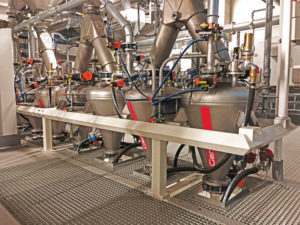
Denis develops his 100t / h flatbed cleaner-separator, named NSD3.1
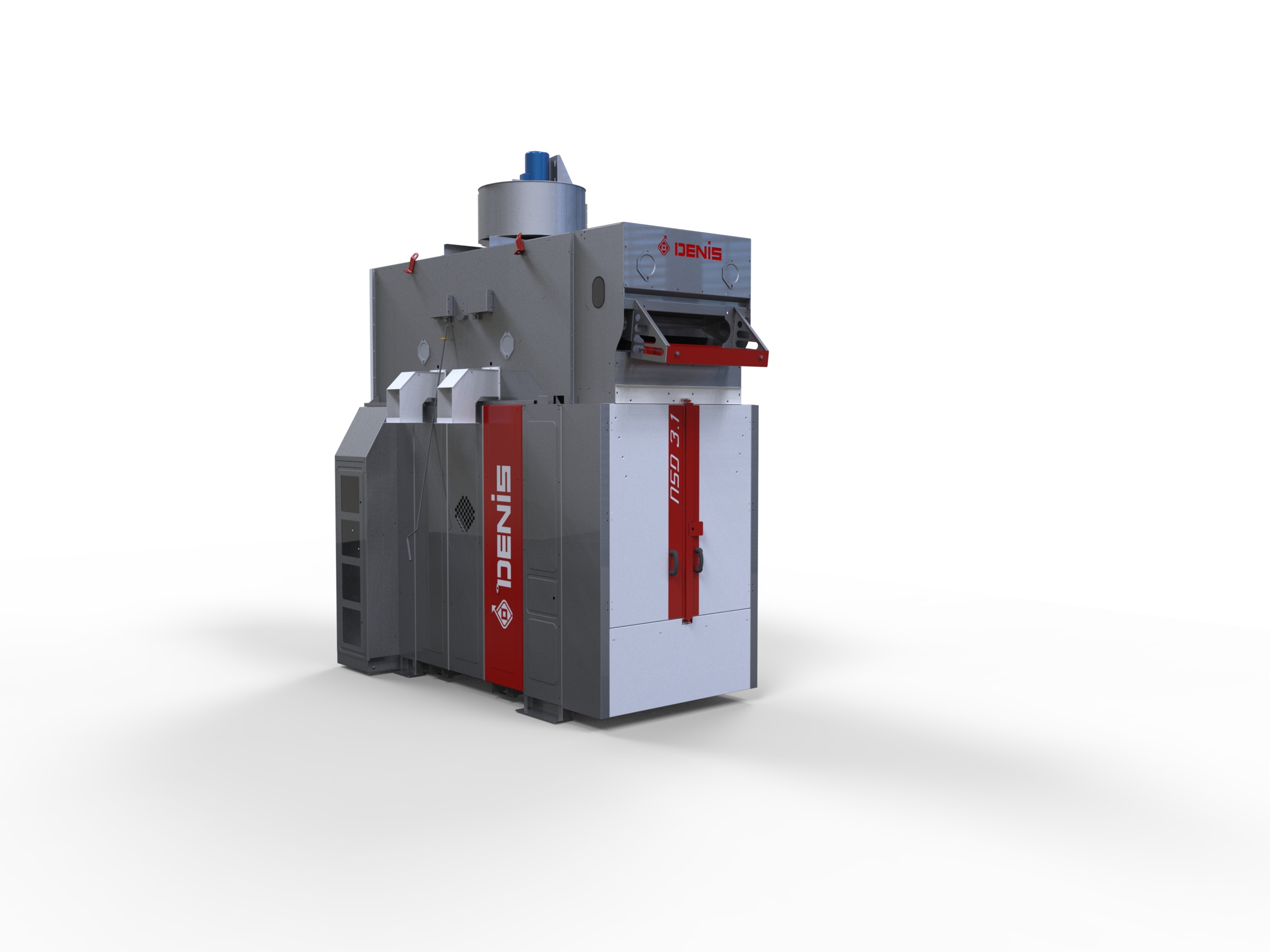
Javelot, an Agritech start-up
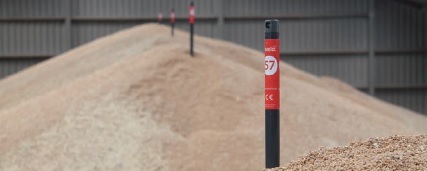
Still RX60-35 / 50: heavy goods vehicles go electric!
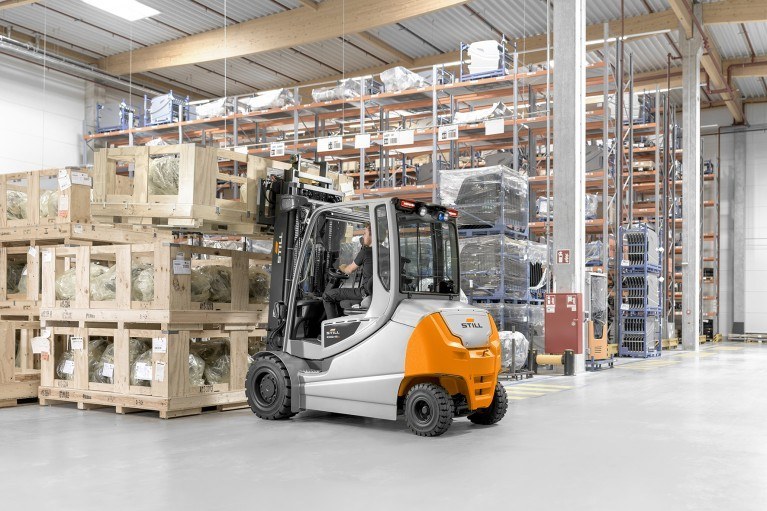
Whether for industry (food, automotive, glass, wood, etc.), stationery or beverages, the trolleys must withstand heavy loads in difficult environmental constraints (dust, humidity, cold, etc.). The strengthening of standards and directives limiting polluting emissions is pushing companies to turn more and more to the use of electric forklifts. In order to respond to this challenge, Still has just launched the RX60 on the market with a capacity of 3.5 to 5.0 t to carry heavy loads, both indoors and outdoors, with the power of a thermal and the advantages of electric. The new RX 60-35 / 50 combines two powerful 80 V traction motors with precise and progressive control functions. Within this series, customers can choose from 7 different versions with a load center of gravity of 500mm or 600mm. Each configuration can optionally be delivered with a traditional lead-acid battery or with lithium-ion. For all load capacities, a high performance version is available, offering more power and acceleration for demanding applications.
Digital transformation at Ishida
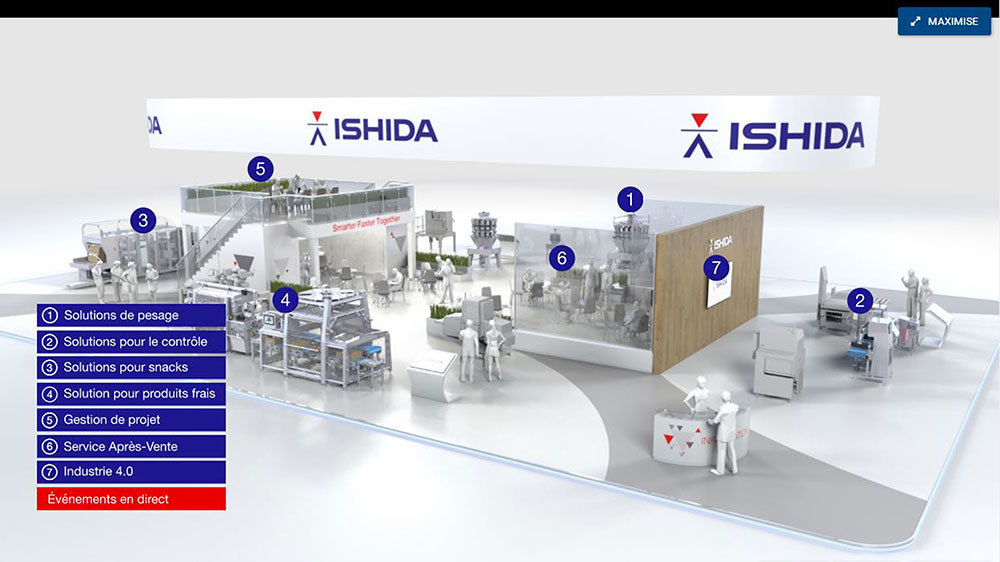
In these troubled times, where the virtual now tends to prevail over the face-to-face, the manufacturer Ishida has just developed two flagship tools for the attention of its French-speaking audience. They reflect the personality of the manufacturer: great expertise, extensive capabilities in the design, manufacture and installation of packaging equipment and complete lines for an infinite variety of applications.
The complete overhaul of its site:
Completely revised, it offers easier navigation, an increase in video content, case studies, downloadable documents such as product brochures, support pages (training, spare parts, service contracts, etc.) . Optimized taking into account a study by Ishida showing that more than 50% of visits to its website come from mobile devices, the browser can choose between different approaches: by product, integrated solutions or industry.
The virtual world according to Ishida
In recent days, Ishida has lifted the curtain of its new showcase, a virtual 3D universe comprising 4 categories: weighing, quality control, snacks, fresh food, as well as project management, after-sales service, industry 4.0 areas, to which New equipment developed by the company will be added gradually. Find out how Ishida designed a machine for a given application by maximizing efficiency, get the specifications for each machine and, in the short term, an auditorium that will allow visitors to access on-demand "webinars" around the topics of industry news.
Construction of a railway hub in Calais
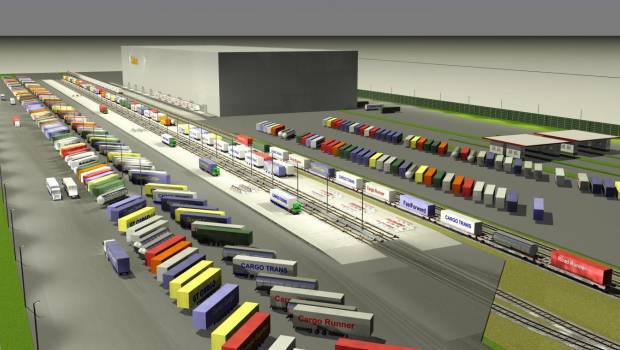
On the motorway front, in the towns of Calais and Marck-en-Calaisis, a major motorway rail terminal is currently being built. Some 1,300 meters of joint railway lines will be operational in spring 2021. The transport service provider Cargobeamer is deploying and marketing in Europe an innovative rail motorway system suitable for non-gripping semi-trailers. Owner of land within the Zac Transmarck-Turquerie * in Calais since 2018, he entrusted Eiffage, the site's representative, with the creation of a 5.7 ha rail motorway terminal. This site will link Calais to European logistics and industrial centers, making this hub a real alternative to road freight transport.
This 32 M € project and a projected duration of 9 months began in July 2020 with the implementation of basic infrastructure. “We are currently building a platform 550 m long, focused on heavy goods traffic. This site will house a 150-space car park in the south, dedicated to the temporary storage of semi-trailers. It will also accommodate 4 rail tracks from 300 to 450 m, two of which will transfer the trailers to the wagons (and vice versa, as well as various switching equipment. Two other shunting tracks will be used for the composition of the trains ", indicates Simon Findinier. , works engineer for the Eiffage group. Initially, the tracks will be equipped with 6 automated transshipment modules and a telescopic crane handling area. 12 additional modules will complete this set when the terminal has reached its cruising speed . Ultimately, the terminal will reach its optimal functioning in 2023, with its 18 automated transshipment modules. It will be able to load a complete train in 20 minutes. In addition, a building project of 250 m2, dedicated to the operation of the site (offices, control and rest rooms), which will be built quickly in parallel, since it should be operational by spring. ot is currently in preparation.
Thus, CargoBeamer technology ensures the establishment of efficient rail motorway services that are competitive with respect to road transport, while reducing environmental impacts. It is based on a combination of specialized railway wagons, automated transshipment terminals and IT solutions. Its horizontal handling system allows the loading of all types of semi-trailers (including those that are not gripping). The combined transport of these semi-trailers which, to date, did not have access to this type of service is now possible. The transshipment of semi-trailers takes place simultaneously, quickly and silently.
* The ZAC Transmarck-Turquerie is an area of 220 ha, dedicated to transport and logistics activities.
Europack Euromanut CFIA becomes Prod & Pack

The 1st edition of Europack Euromanut CFIA in 2013 brought together nearly 5,000 visitors for 300 exhibitors. In 2019, 17,000 manufacturers and more than 600 exhibitors gathered at Eurexpo Lyon. This success confirms the real expectations of manufacturers. Building on this dynamic, Sébastien Gillet, division director of Gl Events Exhibitions trade shows, had the ambition to provide, via this meeting, the industrial solutions best suited to meet the challenges of the packaged product ecosystem. . "Like our market, we are now convinced that the packaging transition can only be successful if solutions are provided at all levels of the production lines. This is why we are happy to announce that Europack Euromanut CFIA becomes Prod & Pack, the Packaged Products Fair. It will encompass all sectors of production, from product manufacturing to packaging, logistics and recycling, to all industrial sectors. Thus Prod & Pack will bring together all the solutions enabling you to transform your production process, make your products and their packaging more respectful of the environment, but also more in line with the expectations and societal challenges of the 21st century. Because if packaging is undergoing radical change, the Show which represents it must be too! Prod & Pack is the Show where all the packaged products of tomorrow are thought out, invented, constructed, transformed, "explains Sébastien Gillet, director of the Prod & Pack Show. This event will take place on November 16, 17 and 18, 2021 at the Eurexpo Lyon park, and will be divided into 4 main sectors: Process, Packaging, Logistics and Recycling.
Sautec: a gentle handling solution for storing corn on the cob

Preserving the quality of crops is a major concern for farmers and collectors. At the end of 2020, during the corn harvest, Sautec was able to attend storage operations and validate the design and performance of its equipment. Indeed, Sautec offers a gentle handling solution for conveying and storing corn on the cob. Composed of a truck unloader and a grasshopper, the set allows the unloading of the trailers, then the storage of the ears of corn in respect of their quality. “Maize is a particularly fragile product,” explains Olivier Dobelle, co-manager of the Sautec company. "Belt equipment has the advantage of not damaging or modifying the transported products, unlike conveying by screw".
To meet the constraints of the sector, both the unloader and the grasshopper benefit from a specific configuration, thanks to the options available, to adapt perfectly to customer needs. The unloader, the company's flagship equipment for unloading bulk products from trucks, is equipped with side rails, mud flaps over its entire length, and a frequency converter. This configuration, designed specifically for unloading corn, allows flow control without loss of product. The grasshopper has a motorized rotating chute 1.50 m long and front swivel wheels with cylinder. “Unlike granular materials like wheat, corn on the cob has a much lower sloping capacity. The chute, associated with the motorized wheels, allows a good distribution of the ears of corn, and therefore a perfect optimization of the storage space ", explains Olivier Dobelle.
The solutions offered by Sautec are mobile and flexible. Their great modularity allows customers to benefit from equipment that adapts to their needs and the products transported. “Several Cuma from the South-West have expressed their satisfaction to us. Options can, in most cases, be added or removed without modification, allowing customers to use our equipment for various applications, ”concludes the co-manager.
New generation giant gantries in the port of Le Havre
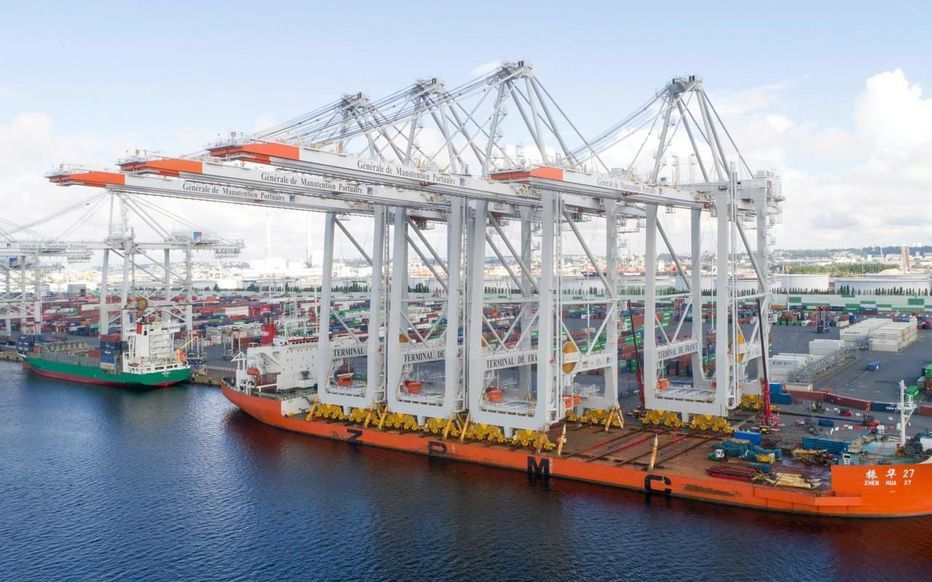
The leading French port handling operator, Port Synergy, is increasing its ship loading and unloading capacities at its Le Havre terminal with 4 new generation gantries. The spectacular operation lasted a week. Brought from China by the Chinese heavy parcel transporter Zhen Hua 27, the 4 gigantic gantry cranes were unloaded on the Port 2000 quay, at the Terminal de France, by GMP-PortSynergy. At the port of Le Havre, it was a question of checking the admissible load of the quays to receive gantries weighing 2,100 t each, as well as of positioning temporary rails on the quayside in order to move them from the ship to the quay, to the 'using powerful winches, an operation carried out in the open sea barn. These gantries were built by the Chinese ZPMC shipyards in Shanghai, which delivered the first 10 machines operated by the General Port Handling (GMP), installed in Port 2000 since 2006. With a lifting height under the spreader of 54 m, that is to say 5 m more than the 4 jumboized gantry cranes and 14 m more than the first generation gantry cranes, they have a reach of 26 rows of containers, or 72 m, a total length in working position of 153 m, and can simultaneously handle 2 containers of 40 feet, with a lifting capacity of 80 t.
Lepicard Agriculture achieves a historic cereal collection record for the year 2019-2020

Lepicard Agriculture, specialist in agricultural trade in Normandy for more than 150 years, reached on June 30, 2020 a collection of 720,000 tonnes of cereals (wheat, barley, rapeseed, corn and oats), or 15% more than for 2018-2019 , and 5% more than the commercial objectives set for 2020 in its strategic plan. A record for this family group serving more than 2,500 farmers in the region (36 collection centers and 24 depots) whose 180 employees remained strongly mobilized during the confinement in the service of the agricultural and food world. This 150-year-old family group led by the 6th generation has tripled its activity over the past 15 years. In addition to collection, the group is showing growth in its other activities compared to the commercial objectives set in its strategic plan: + 25% in plant nutrition, + 17% in plant health, and the objectives have been achieved in animal nutrition.
Agribusiness & Logistics: the risk perception of business leaders
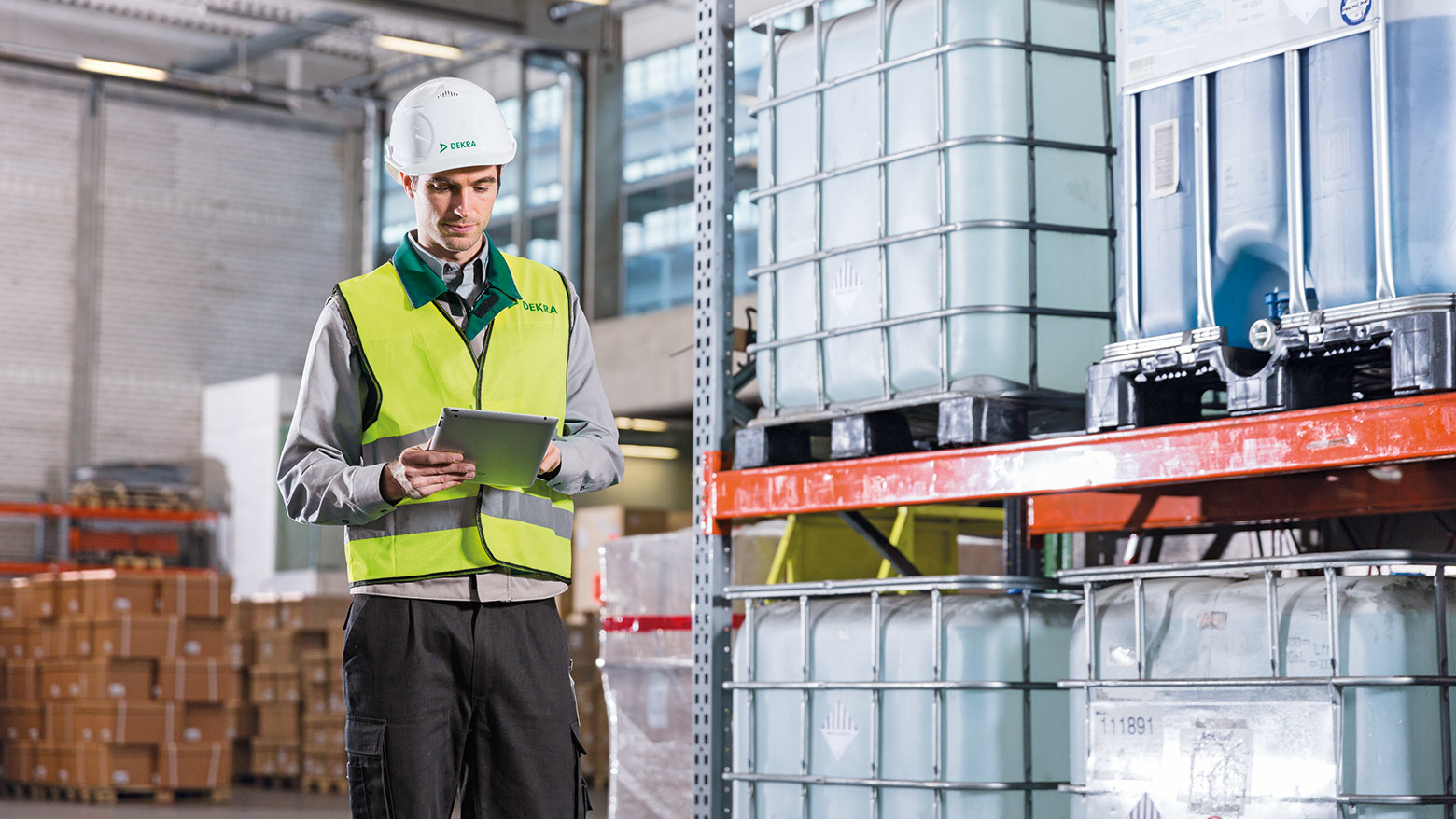
In recent months, our perception of risk has been profoundly changed by the COVID-19 pandemic. Still unlikely at the start of the year, this crisis questions our relationship to risk, the fear it inspires us, our ability to measure it, anticipate it and provide proportionate solutions to better overcome it. The agro-food and logistics sectors have been at the forefront and their character, vital to the country's economy, brought to light.
But a new risk must not obscure those already present. Risk management appears more than ever as a strategic element, key to competitiveness which will enable a new stage in its development to be started.
A comprehensive approach to 360 ° risk management
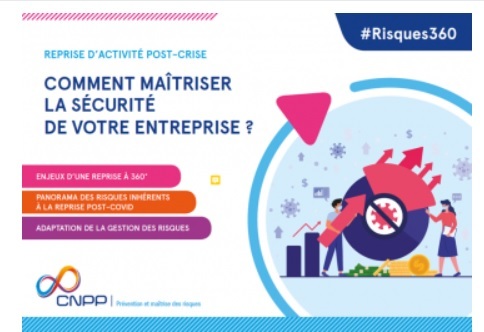
The CNPP, the expert in prevention and risk management, is proposing a book to ensure the post-Covid recovery in complete safety and to identify risks at 360 °. The purpose of this guide is to give directors and managers of companies, heads of poles, units, sites, etc. a few reading grids and a toolbox of solutions to tackle recovery in safety and capitalize for a more resilient future ! This guide therefore provides an overview of the risks inherent in the recovery situation, solutions for adapting crisis management under 4 headings: "The challenges of a 360 ° recovery"; “Panorama of the risks inherent in the post-Covid recovery”; “Adaptation of risk management” and “Contacts”.
Coop de France presents a collection of initiatives

For 30 years, agricultural cooperatives have played a key role in the structuring of organic sectors and have worked for the development of efficient and sustainable French organic sectors. Through their advisory role and the presence of technicians in the field, cooperatives support and guide producers while guaranteeing their outlets and planning their productions. This "Thema" developed by Coop de France sheds concrete and illustrated light on the state of play of issues, cooperative responses and results through 23 testimonials from cooperatives from all sectors and all regions. This collection of initiatives illustrates the involvement of cooperatives in organic farming with the various stakeholders.
Guide to the work permit in an ATEX zone
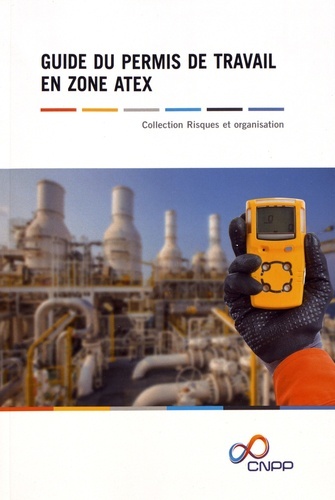
Poorly prepared, work carried out in workplaces where explosive atmospheres are likely to be present can lead to serious explosions and / or fires.
The objective of this guide is to inform the prescribers and professionals who carry out or have carried out this work of the dangers they present, then to support them in the process of obtaining a work permit in an ATEX zone.
Its concrete and operational implementation raises many questions: what work requires the drafting of a work permit in an ATEX zone? Who signs it? How to carry out the analysis of the risks of explosion (and fire - the two phenomena being closely linked)? How should staff be trained? What are the safety instructions that can be defined? Since the work permit in an ATEX zone must be signed by the employer (or a person authorized by the latter), legally responsible for safety in his company, the work also recalls its legal obligations, its responsibilities and the conditions of the delegation. to be able to.
5 chapters are proposed:
• explosive atmospheres,
• the work permit in an ATEX zone, the regulatory context,
• the dangers of work carried out in an ATEX zone,
• risk analysis methodology,
• preventative measures.
DISPLAY YOURSELF ON VRAC TECH EXPO !!
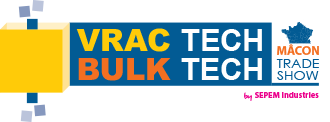
Last straight line to boost your visibility !! Reserve your advertising space on our beautiful November edition which will be the press partner of the Vrac Tech Expo trade fair, thus offering very good visibility among visitors of professionals.
Stéphanie is at your disposal on 01 60 94 22 26 or by email at stephanie@rpi.fr to discuss your project.
See you soon :)
New regulations around load rooms
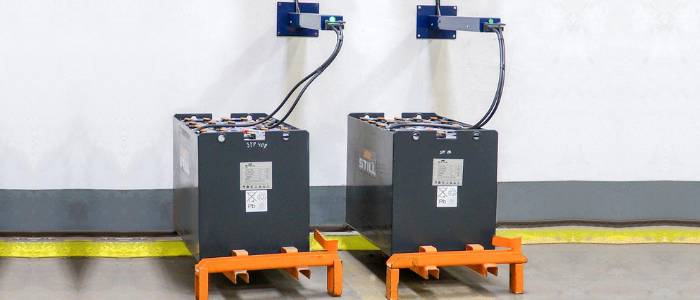
At the end of 2019, the regulations around load rooms at industrial sites changed. Industrial sites equipped with lithium-ion batteries whose charging power does not exceed 600 kW will not be subject to the order regulating the charging rooms. In comparison, a site equipped with lead-acid batteries is subject to this decree as soon as its charging power exceeds 50 kW. This change in regulations follows consultations between the Ministry of Ecology and Evolis, a union which brings together companies, located on European territory, which design, produce and market equipment for construction, infrastructure, the steel industry and handling. The union wanted to fill a legal void that affected lithium-ion batteries. In accordance with legal obligations since 2000, the charge rooms make it possible to secure industrial sites which handle lead-acid batteries. These sites must dedicate a highly secure space to charge the batteries, including fire doors, a ventilation system and an acid-tight floor, for example. Indeed, lead-acid batteries emit hydrogen and contain acid which often spills on the ground. With the evolution of these regulations, manufacturers will be able to use lithium-ion batteries without having a dedicated charging room because this technology does not present a risk linked to hydrogen or acid.
Port of Caen-Ouistreham: installation of the guidance system at the entrance to the locks is complete
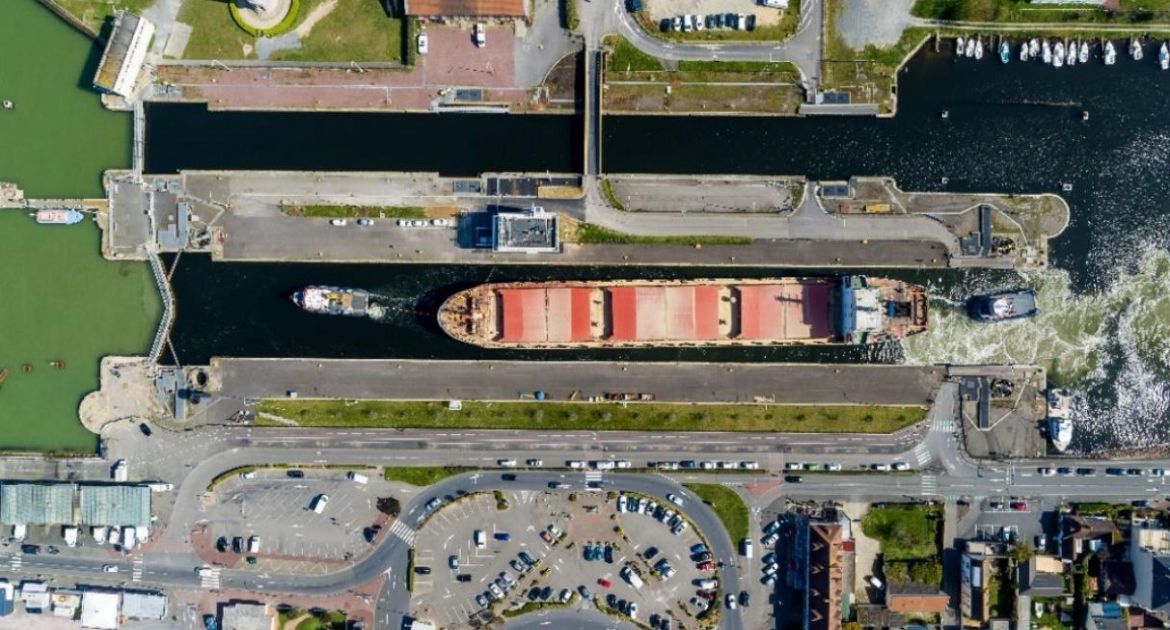
BFM inflatable cuffs for big-bag filling

The company Chupinpack, importer and distributor for France of the BFM Fitting waterproof flexible connection sleeves, offers a new effective and clean sealing solution to be installed on all types of big-bag filling stations with chute. Indeed, filling big-bags or flexible containers without dispersing product represents a challenge for all production lines. In order to ensure efficient operations, it is therefore essential to have an inflatable cuff, which is easy to use and changes quickly. Based on its patented flexible cuff system with stainless steel tubing, BFM Fitting has developed a fully waterproof inflatable cuff to improve the filling of flexible containers with a chute, without product dispersion, and durable over time. But how does it work? The BFM sealing solution for filling the big-bag consists of an inflatable three-layer cuff, which clips easily into the BFM tubing welded to the discharge pipe. Its central part in stainless steel is encapsulated between two layers of Seeflex, resistant and flexible urethane. The BFM system is supplied with a quick coupling for the connection of a standard 8 mm pneumatic hose in order to inflate the ultra-resistant flexible outer layer. The operator places the container chute on the inflatable cuff. When the outer layer of Seeflex swells, the big-bag chute remains in the open position for the duration of filling, without risk of product leakage. When filling is complete, the outer cuff can be instantly deflated, allowing the container to be easily removed. The gains for the operator? The Seeflex material from BFM, a transparent thermoplastic urethane certified for foodstuffs, is much more resistant than the silicone-rubber of today's inflatable rings which wear out quickly. The 100% tightness of the BFM system is the most efficient on the market. In addition, thanks to the BFM attachment system, removing, cleaning and replacing the inflatable cuff is easier and faster than with traditional inflatable seals. The BFM system also provides total security for operators since there is no risk of pinching when removing the chute from the flexible container. The BFM inflatable cuff is available in the following diameters: 250 mm, 300 mm, 350 mm, 400 mm.
Michel Picandet is appointed head of Tomra Food
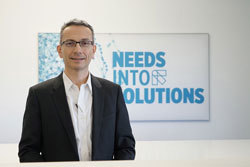
Michel Picandet has just been appointed head of the Tomra Food branch. He joined the company on January 1 at Tomra Food's headquarters in Leuven, Belgium. He oversees the 3 entities: Tomra Food, Compac and BBC Technologies. “I am delighted that Michel Picandet has joined our management team. He has a real strategic vision for these activities, supported by his solid experience in the industry and services of the food industry. I am convinced that, under his leadership, we will continue to grow based on our values, technological leadership, food security, digital transformation in favor of a more circular economy. Michel and his team will seek to maximize the value delivered to customers with our machines to make Tomra Food their essential long-term partner, factor of competitiveness and profitability, "said Stefan Ranstrand, CEO of Tomra. "I am very pleased to have the opportunity to lead a visionary company such as Tomra Food, which is at the forefront of sustainable development. It is a company that has constantly sought to innovate to reduce food waste and optimize the use of resources. I look forward to working with our customers to improve their value chain, to strengthen their position in a more sustainable economy, "said Michel Picandet. Michel Picandet brings solid experience, rich in plural responsibilities exercised all over the world. Before joining Tomra, Michel Picandet had a career at Tetra Pak, where he returned in 2013. Previously, he was responsible for the Life Cycle division at Sidel, operating on 3 continents - America, Asia, Europe - for more than 20 years. He began his career in engineering and quality control at Rhône-Poulenc Animal Nutrition. Michel Picandet is of French nationality; he graduated from Clermont-Ferrand University and obtained a master's degree in management from ESCP (École supérieure de commerce de Paris).
New line for frozen fruits and vegetables at Agram S.A.
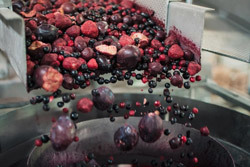
The Polish company Agram SA has just acquired from the manufacturer Ishida a new packaging line including a high-end associative weigher from the RV series as well as a DACS-G checkweigher. This company, created in 1974, processes around 25,000 tonnes of fruit and vegetables, 90% of which comes from eastern Poland, the most fertile region in the country. The distribution channels for frozen finished products concern Polish, European, American, Canadian, Japanese, Chinese, Chinese, Israeli and Russian manufacturers, retailers and the catering sector. The process was devoted to the processing of a mixture of frozen red fruits. Thanks to the association’s advanced software, the dose is calculated using 3 weight combinations, which it checks twice, then chooses from the 3 weighings closest to the target weight. This is one of the unique features on the associative weighing market that allows the company to claim the unrivaled precision of its machines. The association is also equipped with the patented AFV (Anti Floor Vibration) technology whose role is to stabilize the output signal of each weighing head against environmental vibrations to maintain both speed and precision. The DACS-G checkweigher checks all the packaging so that it complies with the legislation in force and avoids overdosing, thus accelerating a good return on investment. The association weighing association / checkweigher operates at a rate of 30 to 50 products per minute for all of the products developed by Agram SA. These rates could be much higher if they were not limited by the speed of the packaging machine. Before the new equipment was put into service, the line sometimes operated 24 hours a day. Now, for equal production, from 4 to 8 p.m. is enough, thus freeing up valuable production capacity, while offering the possibility of redeploying employees to the next order.
As Bogusław Demianiec, President of Agram explains: “When choosing our machines, we take into account their quality and technical capabilities, and Ishida meets these requirements. The Ishida associative weigher guarantees reliable operation and practically no unplanned downtime, as well as preventive service and maintenance. "The president added:" Having already bought Ishida brand equipment about 8 years ago, we we decided to continue with this manufacturer in order to continue to offer only reliable products to our customers. "
Raphaël Simoneau, new CEO of Sautelma-Rotolok

Raphaël Simoneau has been appointed managing director of Sautelma-Rotolok, manufacturer of weighing, dosing, checkweighing and bulk handling components for 65 years. He was also appointed managing director of Rotolok France, a French subsidiary of manufacturer of locks and switches, Rotolok. He succeeds Svedoan Zekir, who has held the position for 30 years, and who has established his development. This appointment marks the will to continue the international and local French development of the Rotolok group, manufacturer of components intended for bulk. The Sautelma company was created in February 1964 in Aix-en-Provence. In the first two decades of its existence, the company developed exclusively in heavy industry (cement, coking, steelworks, foundry), mining activities and fertilizer chemistry. It carried out the vast majority of its activity in France. To anticipate the gradual decline of these industries in France, and to preserve its future, the company has resolutely turned to export and emerging countries. Today, it generates 60% of its turnover there.
It has also diversified a lot. Its equipment is now used in a wide variety of sectors, including food, plastics, petrochemicals, the environment, water treatment and packaging. After its acquisition in 1995 by the Rotolok group, Sautelma became Sautelma-Rotolok. Thanks to the significant synergies developed within her group, she has gained access to new technologies, and now masters new trades, in particular in the handling of bulk through rotary locks or airlocks and switches. Rotolok France was created in 2006 to become the French subsidiary of the Rotolok group. With 20 years of experience in the field of powder and granule transfer, Raphaël Simoneau has developed his expertise in powders in all industrial sectors: food, chemistry, pharmacy, mineral. A graduate of Ensmic Paris, he began his career in 1998 at Tripette & Renaud where he was in charge of the marketing of components: locks, switches, centrifugal and vibrating screens, Archimedes screws, blowers ... Through an increased presence and the development of innovative solutions, the new director wishes to strengthen ties with French and foreign integrators and users.
Denios France celebrates 25 years
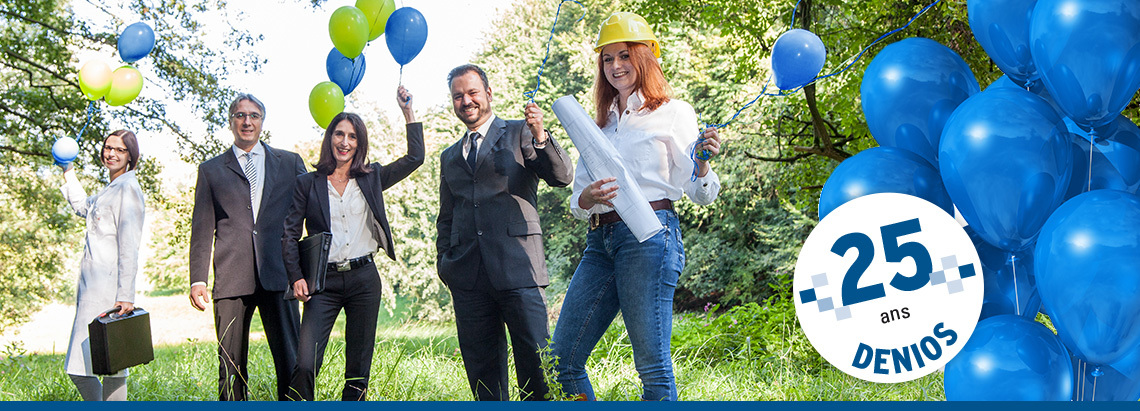
Founded in November 1994, the company continues to innovate and has for many years confirmed its position as leader on the French market in the field of storage of dangerous products, in particular through its production of storage containers and bungalows adapted to needs the most varied of its customers. With more than 10,000 products on the web and in the main catalog, Denios offers a wide choice to its customers from all sectors of activity. A French subsidiary of the German group of the same name, Denios France has quickly established itself as a specialist in the storage and handling of dangerous products, occupational safety, risk prevention and environmental protection.
By setting up its production plant in Normandy in 1994, Denios moved closer to its French customers and thus offers storage solutions entirely made in France. Today, Denios France brings together more than 10,000 products in its main catalog and on its online store: retention tanks, anti-pollution absorbents, safety cabinets, drums and tanks ... Denios' product offerings are plentiful, allowing the company to always offer the best solutions to meet the needs of its customers. At the start of 2019, Denios France obtained EN1090 certification for all storage containers and bungalows manufactured in Normandy. A good way to start the year!
The storage solutions are thus certified on welds and paint and therefore promise superior quality. Thanks to this certification, Denios is the first container manufacturer in France to meet the EN 1090 standard. The project and challenge of 2019: the redevelopment and modernization of production. The production workshop at the Denios site in Nassandres started getting a facelift in April: roof, floors, walls, heating, lighting, etc. The goal is to respond to the "5S" method: remove the unnecessary, locate things, sparkle, standardize, follow and progress. An approach that creates an orderly, functional, efficient and pleasant working environment. To finish 2019 off in style, and to start 2020 with optimal equipment, a BySprint Fiber 4020 fiber optic laser cutter was installed in November. It will be fully operational by the end of the year and will automate and optimize the processes during the manufacturing of storage containers and bungalows. A great birthday present for the 25th anniversary of the company!
« Trophées européens développement durable » : les carriers français à l'honneur
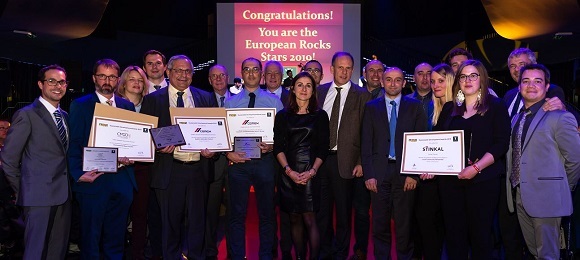
4 French sites were rewarded during the official award ceremony of the European Sustainable Development Trophies held in late November in Brussels.
The Armailler quarry, operated by Agulats Vicat, in Drôme, is a winner in the "Communication" category. This site was able to seduce the European jury with the originality of its approach, which reveals a new approach to promoting an extraction site in favor of a natural and cultural heritage.
The European jury also wished to award a special mention, its “favorites”, for 3 other French sites. The following were distinguished: the Grand-Champs quarry (Morbihan), operated by CMGO Bretagne Sud, the Auriol quarry (Bouches-du-Rhône), operated by Cemex Granulats Rhône-Méditerranée and the Buzet-sur-Tarn site (Haute-Garonne), property of Cemex Granulats Sud-Ouest.
Coop de France: Florence Pradier appointed DG
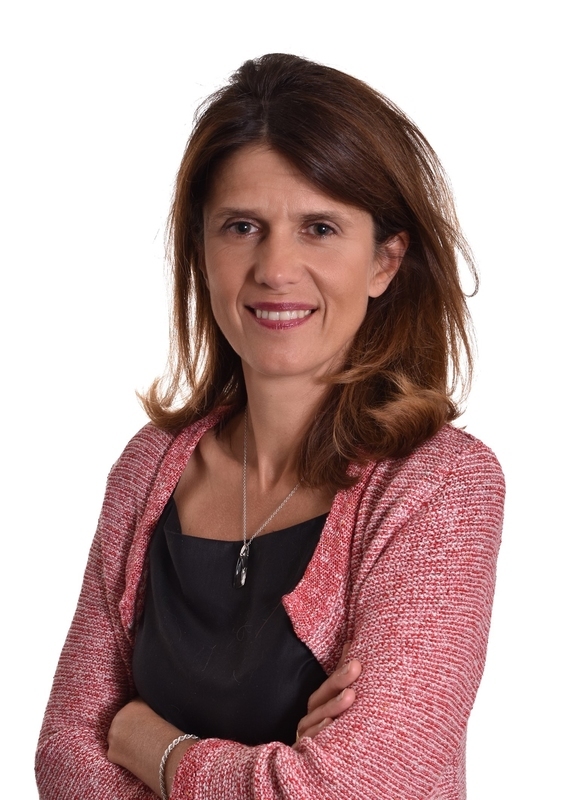
Florence Pradier, from a family of winegrowers, graduated from Agro ParisTech and holder of a master's degree in food science, has recognized experience in the agricultural and food sector. For more than 20 years, it has brought its expertise and know-how in the creation of collective value and the development of companies' competitiveness, with the permanent desire to put consumer confidence in their food at the heart of the systems. Florence has worked throughout her career to support the transformation of food businesses in ecosystems with high sustainable and societal challenges. Since 2008, she has been Executive Director of Alliance 7, the federation of grocery products and specialized nutrition, where she leads the collective strategies of 9 professions in France and in Europe. She previously structured and directed the GIE housing the process of production of “controlled reasoned culture” cereals with agricultural cooperatives. She was also responsible for the development of product certifications (Red Label, organic, CCP) and audit manager (ISO and Products) for 5 years in the Bureau Veritas group. Florence will be able to draw on her solid expertise in the field of change management and project management to work on one of the major challenges of agricultural cooperatives: support for the various transitions. "The arrival of Florence Pradier and the advantages of her profile will enable Coop de France to continue its mission of supporting the agroecological and economic transitions of agricultural cooperatives while consolidating the upstream-downstream link", specifies Dominique Chargé, president of Coop de France.
"We have to take up the challenges of sustainable production that meets market expectations and the competitiveness of the French agricultural sector, especially on the European scene. We must also give more visibility to the cooperative model which provides lasting solutions to the challenges of transformation of the agrifood sectors, while continuing the structuring of our network which should allow us to better respond to these ambitions. "
Signature of a single national collective agreement for the entire professional branch of the cement industry

It was unanimously that the social partners representative of the cement industry signed, in October 2019, the new unified national collective agreement of the professional branch (SFIC, FNCB CFDT, CGE-CGC BTP SICMA, FNSCBA CGT, FG FO Construction). This signature is the result of an employer and union will to maintain the conventional identity of the cement industry branch and the result of intense joint work of more than 1 year to reach this new collective agreement. In accordance with the consolidation method agreement of April 12, 2018 and the merger agreement of June 5, 2018, the three national collective agreements for the cement industry branch (workers, ETDAM, engineers and managers) and their agreements thematic collective agreements have been grouped into a single national collective agreement (CCN). This regrouping is part of the legislative process of restructuring of the branches started since 2014 and reinforced by the last social reforms (law of August 8, 2016, ordinances of September 22, 2017 and law of September 5, 2018).
Creation of the association

Technological Meetings on Protection against Dust Explosion in Industrial Processes

New rail traffic from the port of Sète

On Monday, September 16th, a new rail freight traffic started at the port of Sète after a summer devoted to testing. Clinker containers (a cement component) arriving by boat are transported by the Régiorail railway company to the Aliénor Ciments factory in Tonneins (Lot-et-Garonne). This new service is good news for the environment: at the rate of 1 to 2 trains of 52 containers per week, this represents several thousand trucks that will not borrow the roads each year.
New high precision volumetric doser Gericke
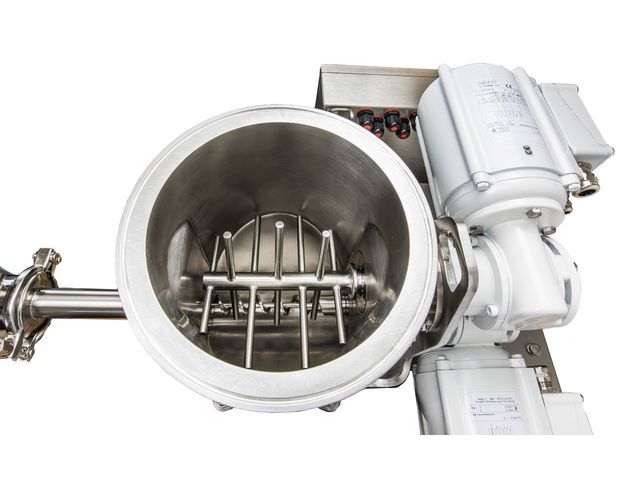
Gericke has recently developed a high-precision volumetric feeder: the Feedos S. Precision dosing systems for bulk products must be fed precisely and consistently.
For reasons of economy, the availability of appliances throughout their life cycle is crucial. The shutdown and maintenance phases, malfunctions and high cleaning costs reduce the manufacturing time and thus increase production costs. The range of products and solutions provided by Gericke, which accompanies its customers throughout their projects, respond to these constraints.
The fields of application and the properties of the Feedos S doser are numerous:
- versatile use thanks to the optimized design of all components for a constant product flow,
- designed for easy-flow, medium to hard bulk products,
- completely redesigned, the trough favors the flow of the product towards the dosing tool, the device can be disassembled very easily;
- all parts of the dispenser are light and easy to handle, unlike most devices available on the market,
- the dosing pad and the trough can be extracted for cleaning operations,
- the Feedos S dispenser works both in volumetric and weight versions, thanks to different types and lengths of screws, there are many applications.
In summary, this new dispenser provides a clear improvement for cleaning and maintenance while maintaining its versatility of dosage. This allows it to be particularly suitable for the food, chemical and pharmaceutical industry whose requirements in terms of reliability in metering accuracy, hygiene and ease of maintenance are very strict.
TRIAX on VRAC TEXH EXPO
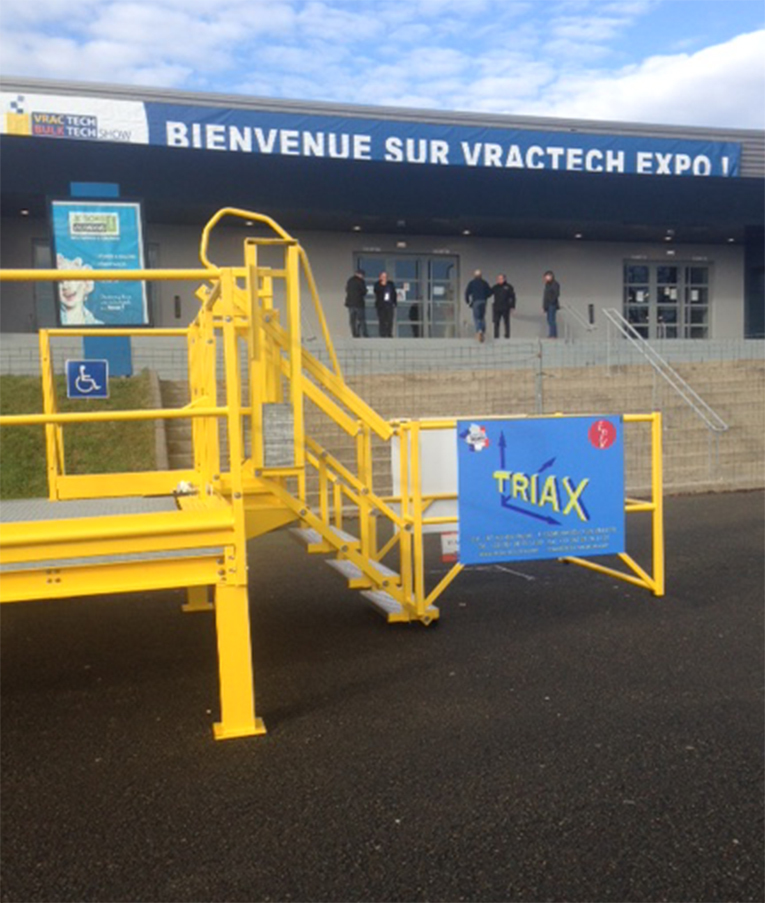
At Vrac Tech Expo in Le Mans from 1 to 3 October 2019, EMCO WHEATON joins forces with TRIAX to present a complete safe loading solution. Thus, on the outdoor stand, visitors can discover a folding bridge with its access island, which will be for the first time as part of a lounge, equipped with a loading arm.
TRIAX and EMCO WHEATON are waiting for you in hall D stand J 1 and on the stand!
The company Gillouaye SAS signs two inaugurations in May 2019
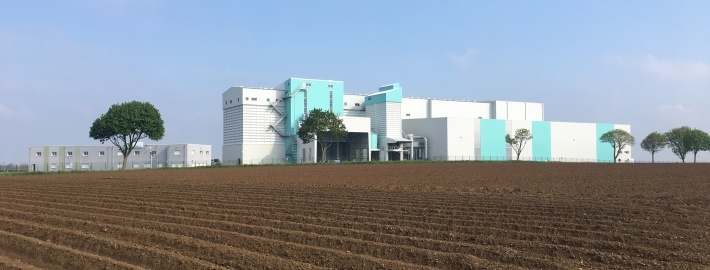
Indeed, the inauguration of the largest seed station in Europe on behalf of Exelience (grouping of Uneal, Natup, Noriap and Invivo cooperatives for the main ones) took place on the Avesnes-lès- Bapaume (Pas-de-Calais), on Wednesday, May 15th. More than 500 guests, including a large number of cooperative presidents, and general managers, were able to visit "this extraordinary facility that can be considered historic for Gillouaye SAS, which is carrying out its largest project here with 108 bushels of 110 t and 250 t, and an impressive floor area. An exceptional opportunity for the company, to put forward its know-how and its professionalism in the service of its customers and for the past 53 years. The other significant event was the inauguration on Friday, May 24, of the latest addition to the Cavac cooperative: a 38,000 t silo on the Aizenay site (Vendée) delivered in July 2018. After the Fougeré silo (Vendée ) delivered in July 2016, Gillouaye SAS continues its collaboration with the cooperative by installing 8 cells of 3,375 t, 2 cells of 2,050 t, 2 cells of 1,365 t plus 8 GH cells with a unit capacity of 500 t Gillouaye SAS, will also deliver, in the coming days, a 15,000 t silo on behalf of agricultural cooperative Saboc on the Luigny site (Eure-et-Loir). Anxious to guarantee a quality service, Gillouaye SAS invests constantly in the production tool and in the men to remain efficient and responsive to the different requests of the customers.
Kuehne + Nagel launches KN Pledge, the first online solution for marine shipments with a time guarantee
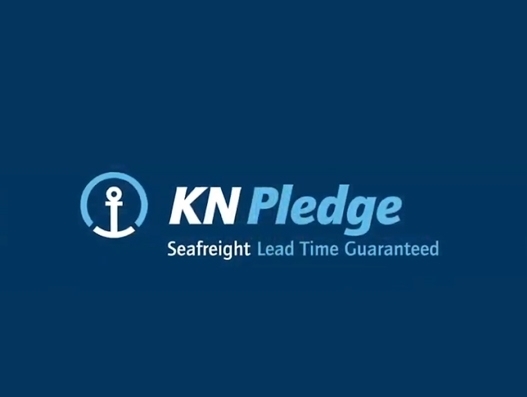
With the brand new FCL solution called KN Pledge, Kuehne + Nagel is one of the first logistics service providers to offer an online solution for complete container shipments guaranteeing a delivery time, a 100% repayment commitment. delay, extension of liability, real-time quotation and carbon neutrality, all integrated into a single service offer. Even in today's ocean freight market, delays can occur for many reasons: congestions, adverse weather conditions or delays in transhipments continue to be a regular cause of supply chain disruptions. With KN Pledge, Kuehne + Nagel guarantees more serenity throughout the customer's supply chain with guaranteed delivery times that cover all combinations, from port to port to door-to-door. In the event that delays are unavoidable, customers who booked through KN Pledge will not pay the transport costs. The product also promises an extension of liability covering a wide range of causes or damages with a maximum of $ 100,000 per container. Cases covered include, but are not limited to, fires and explosions, force majeure, acts of war and strikes. In addition, with KN Pledge, companies have an active role in their environmental impact. Kuehne + Nagel responds to the global ecological challenge by conducting 4 environmental projects by offsetting the carbon footprint of its customers' goods transport. Kuehne + Nagel covers more than 63,000 port connections, with more than 750 weekly services and a multitude of connections. 7,500 Kuehne + Nagel specialists provide reliable expertise to their customers. For this, Kuehne + Nagel relies on the latest digital technologies, big data and real-time ship data provided by Sea Explorer. With KN Pledge, Kuehne + Nagel customers can now easily make automated quotations, book their FCL shipments and track them online.
The Synad celebrates its 50th anniversary and offers itself a new logo
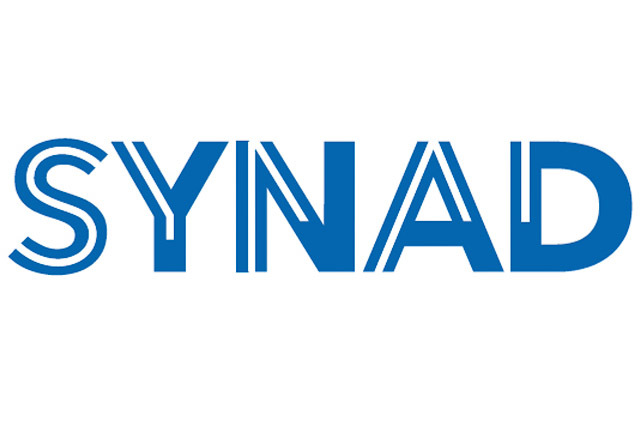
The Synad (National Union of admixtures for concrete and mortars) has just celebrated its 50 years and unveils for the occasion a new logo, more graphic, modern and structured. Identity-blue and reassuring, this revised visual identity is based on a clean design, without baseline, easily identifiable by professionals. Innovation, environment, service and education are the values conveyed by this logo. Virtues that have been part of the very foundations of Synad for 50 years now. But beyond that, the union intends to recall its fundamentals and its commitments. For half a century, he has been acting for the beneficial development of admixtures, release agents and curing products, while acting as an interface between market players.
Secure and validated storage solutions
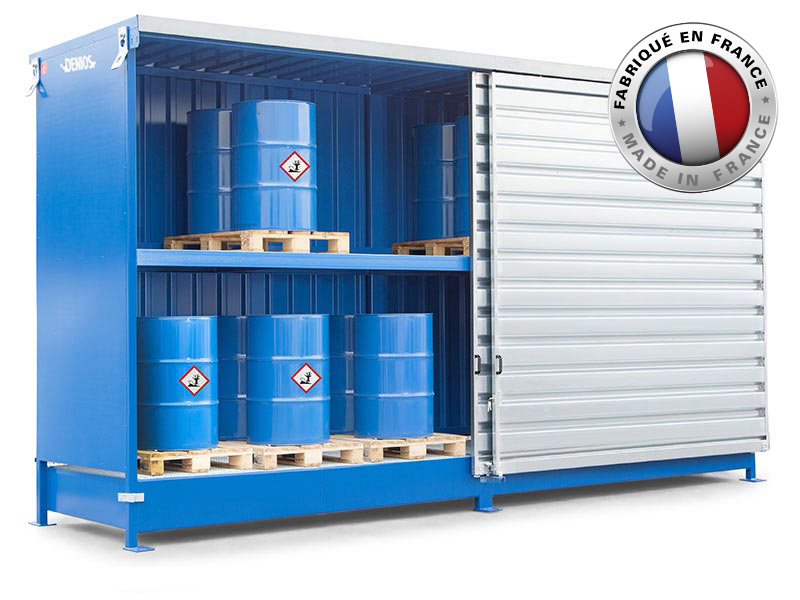
In France, manufacturers of steel structures must meet the EN 1090 standard. In 2019, the company Denios France obtained this certification.
All containers and storage bungalows as well as ovens manufactured in Normandy are validated according to the EN 1090 standard.
Denios products, combined with construction products, are therefore subject to the EU Regulation No. 305/2011 on construction products (CPR). ). Depending on the type of product, a harmonized standard can be used to describe what is needed to meet the requirements of the CPM. For metal structures, the harmonized standard is EN 1090-1 - Execution of steel and aluminum structures. Compliance with EN 1090-1 allows the manufacturer of steel or aluminum structural members to affix the CE marking and to issue a declaration of performance. Denios containers are certified on welds and paint and therefore promise superior quality.
Denios is thus the first and only container manufacturer in France to meet the EN 1090 standard. The certification has improved the quality of the products, including resistance to corrosion for more than 5 years and excellent resistance to weather and natural disasters (earthquakes, fires ...).
The certification, given by the independent accredited body TÜV, guarantees that Denios qualified the know-how of its personnel, but also that the equipment and the techniques necessary for the fabrications are mastered.
Signature of two agreements for the development of freight and fluvial logistics in Île-de-France
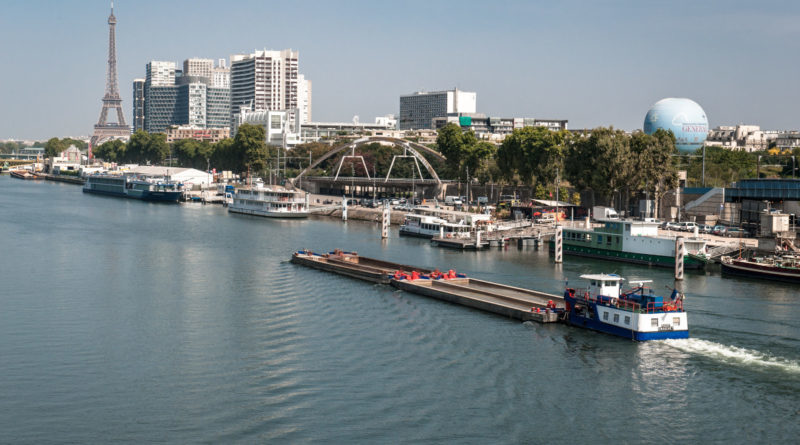
Stéphane Beaudet, Vice President, Transport and Sustainable Mobility, and Thierry Guimbaud, General Manager of Voies Navigables de France, have signed two agreements in favor of the Region's financial support for the Modal Transfer Assistance Plan (PARM) and the Modernization and Innovation Assistance Plan (PAMI) for projects located in the region. Manager of the French river network, Voies navigables de France (VNF) aims to develop river transport by stimulating transport demand from shippers, and by encouraging river transport operators to modernize their units. Thus, VNF renewed its national aid schemes for the period 2018-2022 for a total amount of € 29 million (excluding co-financing from the Regions): the Modal Transfer Assistance Plan (PARM) intended to support shippers wishing to resort to the river and the Modernization and Innovation Assistance Plan (PAMI) to help the fleet adapt to environmental and regulatory requirements. The PARM and the PAMI have been validated by the European Commission.
On March 15, 2018, the Île-de-France Region adopted its "Regional Strategy for Freight and Logistics". With € 50 million over 3 years, this action plan for controlled, efficient and innovative logistics fully integrates river transport. Located at the crossroads of trade in goods flows, densely irrigated by waterways, the Île-de-France is an important consumer base for the growing needs of freight transport. The strategy deployed by the Region reflects its ambition to reconcile economic attractiveness and environmental excellence, and allows the regions to support a more virtuous and responsible logistics. The regional contribution will be € 1 million for PARM and € 1.5 million for PAMI.
This assistance from the Region will enable VNF to handle a larger number of files on the IDF region, and thus to participate in a better integration of the river mode in the logistic chains. River transport has many economic and ecological advantages for the Paris region's logistics industry: significant capacity reserves, a high growth and innovation potential, safe and reliable transport, respectful of deadlines, and a reduction of nuisances for agglomerations. .
William de Warren, new president of the SNBPE College of the Pays de la Loire region
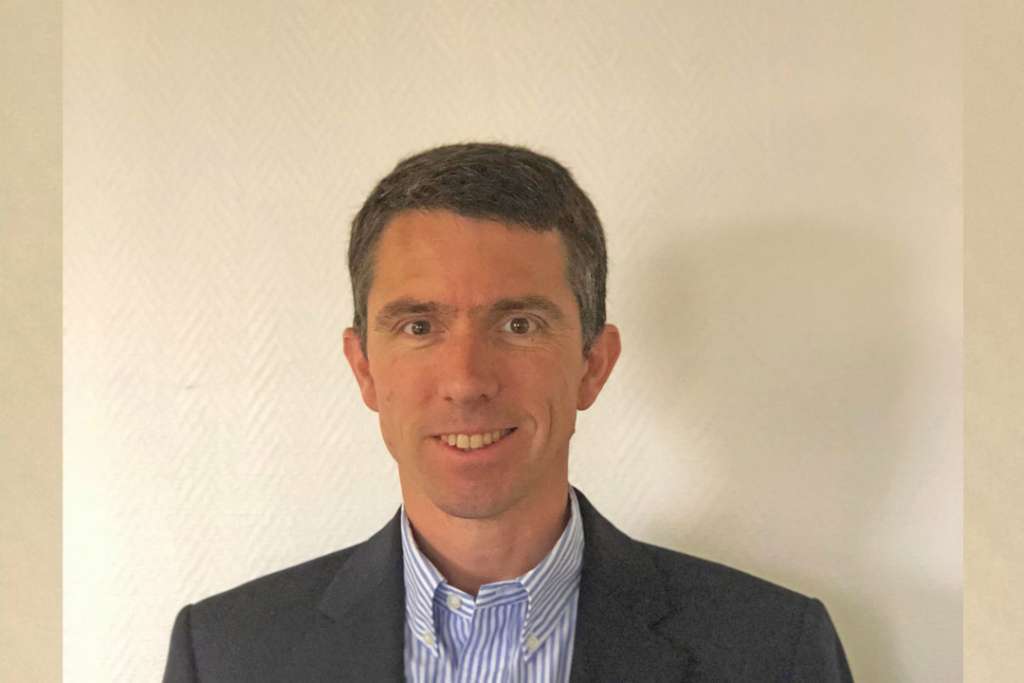
William de Warren has just been elected president of the SNBPE college in the Pays de la Loire region. He succeeds Pascal Barylo whose mandate had come to an end. With a degree from the Paris Graduate School of Management, William de Warren has several years of experience in the Italecementi group at Ciments Calcia and Unibéton. In the latter, after marketing responsibilities, he became commercial director, before taking, on July 1, 2018, management of Unibéton West Pays de la Loire. During his tenure as president of the college, William de Warren intends to continue the commitments made by his predecessor, especially those related to safety on construction sites, such as the non-handling of skips by drivers of truck-routers . He will also promote the profession, its know-how and its technicality by implementing regional actions highlighting the environmental performance of ready-mixed concrete (BPE) and its relevance to meet the challenges. future construction, such as the generalization of low-carbon buildings. It should be remembered that, out of the five Pays de la Loire departments, the BPE activity represents 140 production units.
FM Logistic opens in Romania a logistics platform dedicated to the pharmaceutical sector
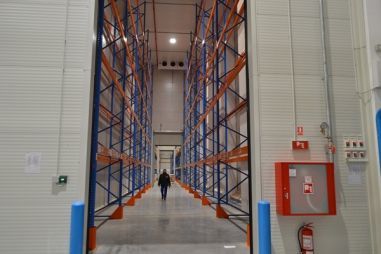
Logistics and transport company FM Logistic has opened a controlled temperature warehouse near Bucharest (Romania) dedicated to the pharmaceutical sector.
This new logistics platform was the subject of an investment of € 20 million. It is intended to meet the growing demand of health sector companies in Romania.
The warehouse, located in Dragomiresti, offers 10,000 m2 of space for the storage and distribution of heat-sensitive products such as vaccines, pharmaceuticals and medical equipment. Its operation has been certified in accordance with Good Distribution Practices (GDP) and Good Storage Practices (GSP) for pharmaceutical products. Storage is provided in three temperature ranges: 25 to 15 ° C, 2 to 8 ° C and -15 to 25 ° C. FM Logistic's customers in Romania include pharmaceutical companies such as Sanofi and Zentiva. The company now operates five sites in Romania, including three logistic platforms in Timisoara, Bucharest and Dâmbovita, and two transport sites in Cluj and Bacau. The company employs 750 people in the country and offers logistics services such as warehousing, handling, secondary packaging and international transport.
Technical specifications :
- 10,000 m2 of temperature-controlled storage space storage capacity
- 14,500 pallets site certified in accordance with good storage practices (GSP) and distribution (GDP) of pharmaceutical products
- three temperature storage: 25 to 15 ° C, 2 to - 8 ° C, - 15 to - 25 ° C
- additional space of 1,150 m2 dedicated to co-packing activities
A standard governing the use of road fluxes
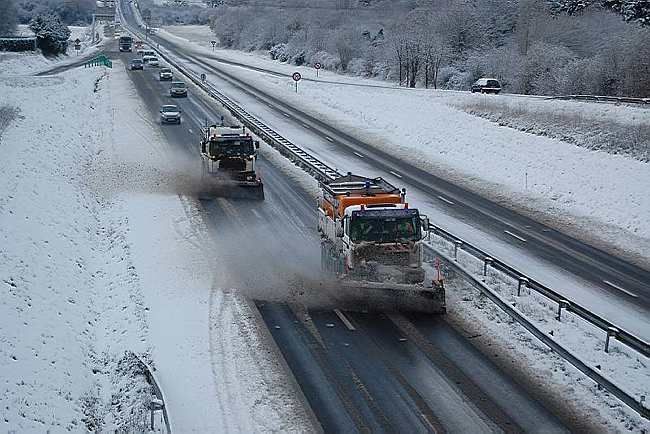
A road flux is a product intended to prevent the formation of ice and / or to ensure the melting of ice or snow. It can be spread as is, diluted, dissolved or mixed and be in solid or liquid form. There is currently a wide variety of road fluxes, composition and physico-chemical properties vary depending on the nature and origin of the product. In France, the normative framework for road melters is based on standard NF EN 16811 entitled "Winter maintenance equipment-road melters" *. It is broken down into three parts: Sodium Chloride-Requirements and Test Methods; Calcium Chloride and Magnesium Chloride-Requirements and Test Methods; and other solid and liquid deicing agents-Requirements and test methods. This standard defines for sodium chloride: the chemical requirements (NaCl and sulphate levels), the water content (moisture content), the granulometry, the general requirements (anti-caking content, pH, heavy metals), the information mandatory on the packaging. It includes "product description sheets" replacing the "technical sheets". For the answer to a call for tenders, these must date from 12 months maximum before the date of the offer.
Jean-Philippe Lemesle, elected president of the granulat college of Unicem Hauts-de-France
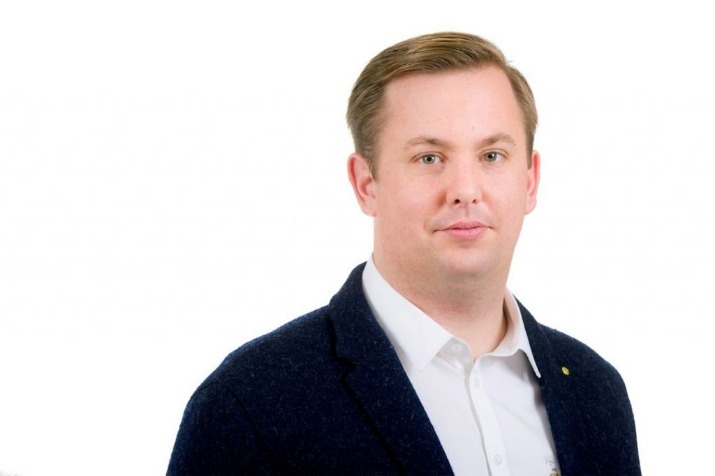
The board of directors of the college granulat of Unicem Hauts-de-France has appointed Jean-Philippe Lemesle president of the union. He succeeds Dominique Hucher. A graduate of EM Normandy, Jean-Philippe Lemesle joined in 2014 the century-old company Lhotellier, expert in the development of the living environment. He is then site director. In 2016, he became materials director for the group. In July 2018, he became head of the Industries division and also served as vice-president of the group. "This mandate is part of the very DNA of Lhotellier: with the UNPG, we share the same desire to serve the territories. Capturing local potential and accompanying it are the foundations of our mission, "says Jean-Philippe Lemesle.
Infociments.fr look like a new website !

Completely redesigned and revamped, the reference platform of the cement industry started the New Year with new features and enriched content for a wider audience. Launched by the professional organizations of the cement industry, since 2004 Infociments.fr has been a reference information platform dedicated to the knowledge of cement and its various applications, in particular concrete. The new interface is part of a sober and uncluttered graphic line that gives pride to large format visuals. Adapted to mobile, mobile or tablet consultation, the new platform offers renewed, expanded and enhanced content. It brings together the institutional and technical information of the sector and makes them easily accessible, whether you are an engineer, technician, craftsman, architect, student, teacher, journalist or public decision-maker.
Boge: Guarding cereals against pests by getting ride of oxygen from silos with BlueProtect
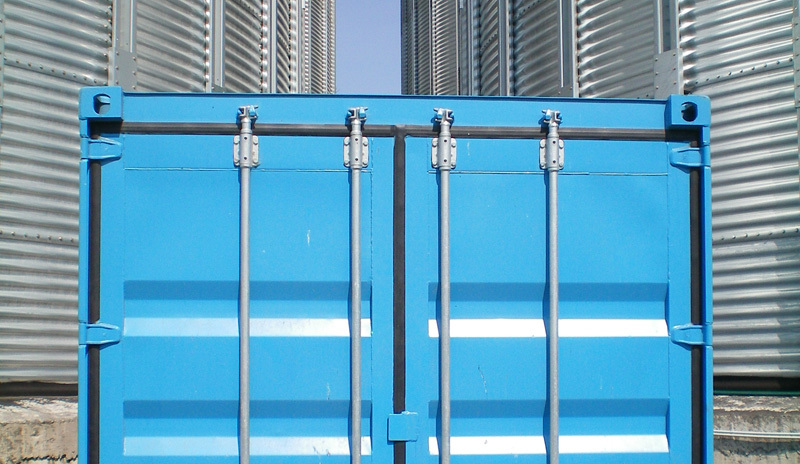
Better protect grain stored in the silos against pests, this is what Boge offers with BlueProtect.
This solution consists in injecting into the grain silos a gaseous mixture of almost pure nitrogen with a maximum of 1% of residual oxygen. Nitrogen then takes the place of oxygen and thus deprives the pests and oxygen-dependent fungi of their livelihoods.
At the same time, the amount of breathing losses is decreasing, as is the risk of smoldering fire. For its BlueProtect solution, Boge uses nitrogen from the ambient air. Near the silo, a compressor generates compressed air. This air passes through a dryer and a combined filter to a membrane filter that separates the nitrogen (N2) from the oxygen (O2) before conducting it into the silo. BlueProtect is therefore an effective pest control method for all sectors where the use of chemical agents is not allowed or desired, for example in organic farming or in the breweries.
Boge has all the components of the plant in a single container so that BlueProtect can be used flexibly in space, with no special prior knowledge and different types of silos. In order to determine nitrogen requirements in advance, the supplier analyzes the initial situation with the manufacturer. The presence of a sufficiently dense silo is a basic prerequisite. To test the solution, Boge provides a rental container on demand to clearly determine the tightness of the silo after a few days.
Rouen : SENALIA takes delivery of three new crossbars

Built in Germany, 3 new high-performance loading gantry cranes have been received by Senalia at its Grand-Couronne terminal, which confirms its status as the 1st grain terminal of the Grand Port maritime of Rouen.
Built in 1971, the Grand-Couronne grain terminal has processed more than 70 Mt of grain since its creation. But taking advantage of the deepening program of the channel of the Seine which is coming to an end, the Senalia cooperative group, main loader of the port, and the Grand Port maritime of Rouen (GPMR) wanted to consolidate it in its ranking of the most powerful terminal of the sector.
The GPMR first invested € 9 million in strengthening the docking front and docks, building a structure to accommodate new tools and deepening the soil. The new berth will accommodate bulk carriers up to 260 m long and 46 m wide, with drafts up to 12 m. "This will load Panamax or Overpanamax up to 60,000 t and avoid the second loading sites," said Manuel Gaborieau, trade commissioner for the grain and agro-industries Haropa-Port of Rouen.
For the Senalia cooperative group, the addition for the modernization of the Grand-Couronne site amounted to approximately € 11.5 million. With safety work, the replacement of automated systems and conveyor systems of grain from the chains to the conveyor belts, the installation of dust collection systems and especially the construction of the 3 new new generation gantries.
Built by the German company Neuero, one of the world's leading specialists, they were transported from Rostock to Rouen aboard the Palmerton, a heavy-lift unit of the Dutch company Combi-Lift. With a unit weight of 250 t, they were unloaded and mounted on rail using two Liebherr cranes with a unit capacity of 250 t. The very complex operation was scheduled for December 17, 2018, over two or three days.
"They are capable of loading 1,000 t / h each, like their predecessors. But they offer the advantage of rail travel over a length of 340 m and are equipped with an anti-dust system called "by accumulation" "says Matthieu Calais, technical director at Senalia.
Liquides Magazine : The comeback !
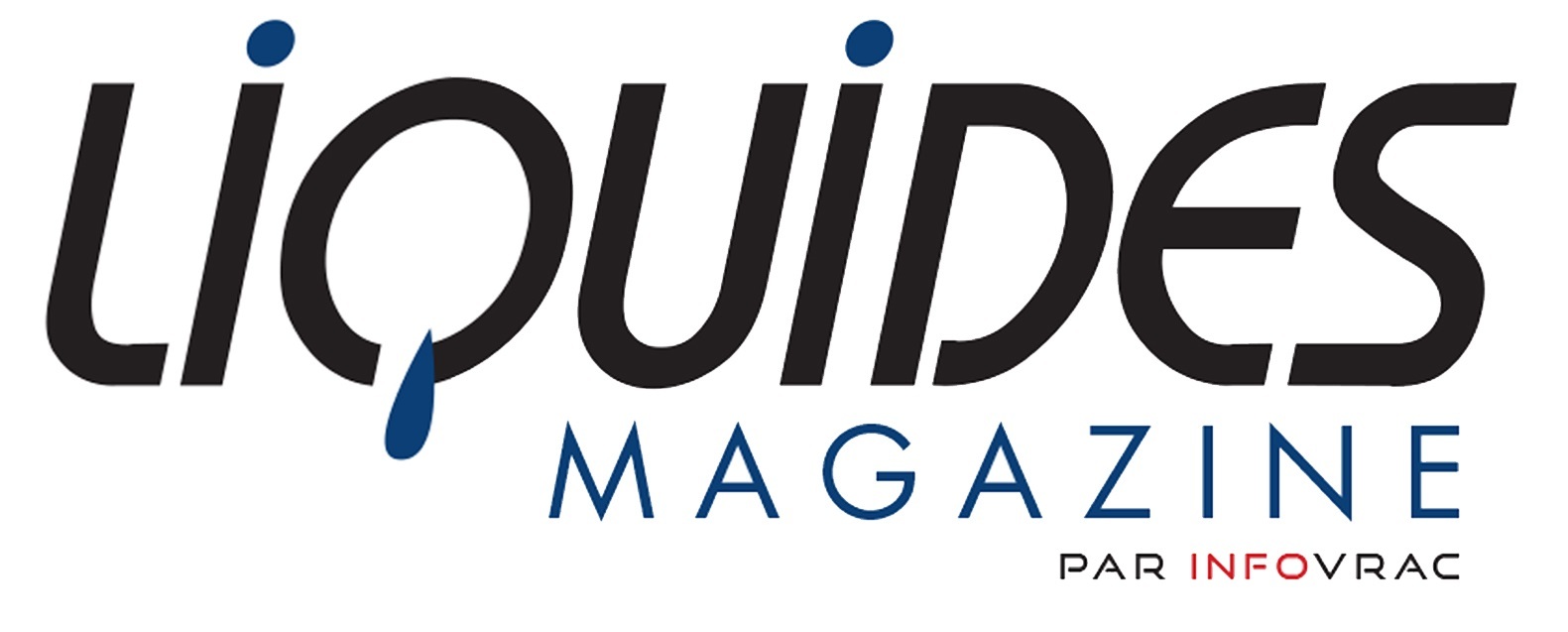
After 4 years of absence, it's time for the little brother of Infovrac to make its come back !
It is therefore with great pleasure that the RPI team announces the return of Liquides Magazine.
At first, it's a unique edition that will be published in June 2019 in order to offer you the best content and reconnect.
For more comfort, your interlocutors will remain the same as on Infovrac, Aude Moutarlier for the editorial aspect and Stéphanie for advertising.
You will find 6 sections: Liquid news (for a concentrate of news), handling, processing, storage, transport and equipment.
For more information, do not hesitate to contact Stéphanie on 01 60 94 22 26 or stephanie@rpi.fr
XPO Logistics expands collaboration with Toyota Material Handling France
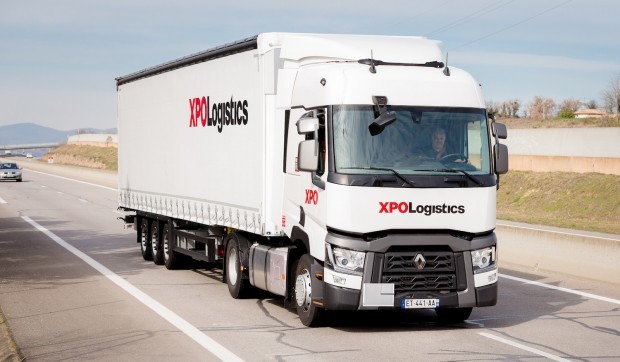
XPO Logistics, one of the world's leading suppliers of transport and logistics solutions, has been awarded a new contract that extends the company's management of its transport operations in France for Toyota Material Handling, a global specialist in handling equipment and automated solutions. XPO has, in fact, developed a customized solution for Toyota Material Handling France, giving it global visibility on all transport operations, tracking and management of returns thanks to innovative technology. XPO's technology specialists have designed a mobile application specifically for Toyota, with full network integration and quality control features. This contract is an extension of the current partnership between the two companies, under which XPO manages the loading and unloading on the Toyota sites of Bussy-Saint-Georges, in Île-de-France, Dagneux, Auvergne- Rhône-Alpes, and Nantes, as well as delivery to customers throughout the country. "With XPO, we found the right logistics partner to carry out our operations and support our growth. We are impressed by XPO's commitment to systematically look for ways to improve efficiency, traceability and competitiveness, "explained Éric Loustau, Supply Chain Director for Toyota Material Handling France. "We are proud to help Toyota Material Handling expand its service portfolio in France, including its new short-term rental service. Our team is excited to take on these new responsibilities, while ensuring a smooth delivery, "added Luis Gomez, Transport General Manager of XPO Logistics Europe.
Chryso acquires Euromodal
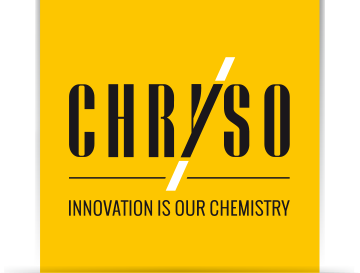
Chryso, one of the world's leading specialists in building materials chemistry, and provider of innovative value-added solutions for the construction industry, has announced the acquisition of Euromodal. A Portuguese family company created in 1986, Euromodal manufactures a wide range of chemical products for construction in its new automated factory located near Porto. Its range of services includes technical support, product formulation and field support. Present in Portugal since 1993, Chryso has supported major infrastructure projects in the country. The company relies on a portfolio of clients including cement manufacturers, concrete producers (ready-mix concrete and prefabrication) and construction companies. "We are delighted to join Euromodal in the group and to work with new talents that will contribute to the development of Chryso. The combination of our activities in Portugal will strengthen our product mix and our presence as a market leader. Local production, a state-of-the-art laboratory and a powerful technical service will serve our customers well. Following the recent acquisitions in Italy and Ireland, this transaction demonstrates our desire to strengthen our positions in countries where customers perceive a real benefit in the use of value-added solutions and the development of differentiating offers, "said Thierry Bernard, president of the Chryso Group, commenting on this acquisition. "We are convinced of the great potential represented by our integration into the Chryso Group, which will enable us to offer our clients a high level of support on their most complex projects", added Francisco Araujo, CEO of Euromodal, who becomes general manager of Chryso in Portugal. Chryso did not wish to communicate on the amount of the transaction.
Bruno Pillon, appointed president of the Cimbéton office
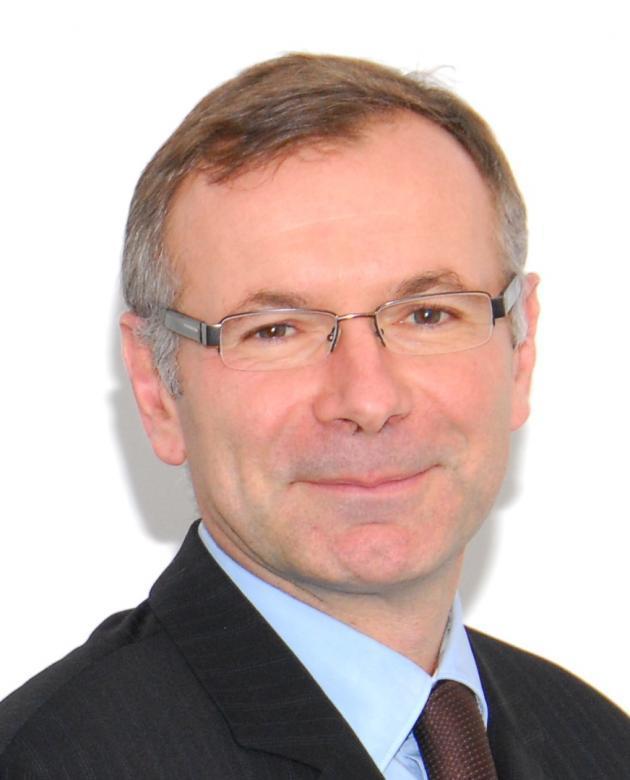
Bruno Pillon, sales and marketing director of Ciments Calcia (HeidelbergCement France group), has been appointed president of the Cimbéton office. He succeeds Grégoire Douillet, commercial director of the Vicat group. In this role, his mission is to define the strategy of the information center on cement and its applications.
After obtaining a degree in engineering from the State School of Public Works and a DESS in foreign trade, from the University Paris-I Panthéon-Sorbonne in 1988, he started his career as a real estate manager at the Ministry of Foreign Affairs and is rapidly moving towards the international construction sector by integrating the general company Glauser International in which he remains nearly 10 years. In early 2001, he created and managed BravoSolution France, a consulting and technology company in supply management. In 2013, he joined the HeidelbergCement France group within Ciments Calcia as Purchasing and Logistics Director, before being appointed, in March 2016, Sales and Marketing Director of Ciments Calcia. In the continuity of his predecessor, Bruno Pillon shares his ambition to "share, know and recognize all the qualities of concrete" to a wide audience, because "beyond the technical and architectural feats unparalleled of this material, concrete is , par excellence, the first material contributing to the improvement of our living environment and to green growth ". Also, in an environmental approach, one of the priorities of the new president is to support professionals in using appropriate solutions to build the city of tomorrow, sustainable and responsible: "Deeply rooted in our territories, concrete allows both to combat the effects of climate change, to save resources and to support the densification of cities while preserving biodiversity. "
Ports of Le Havre, Rouen and Paris: Haropa is on course
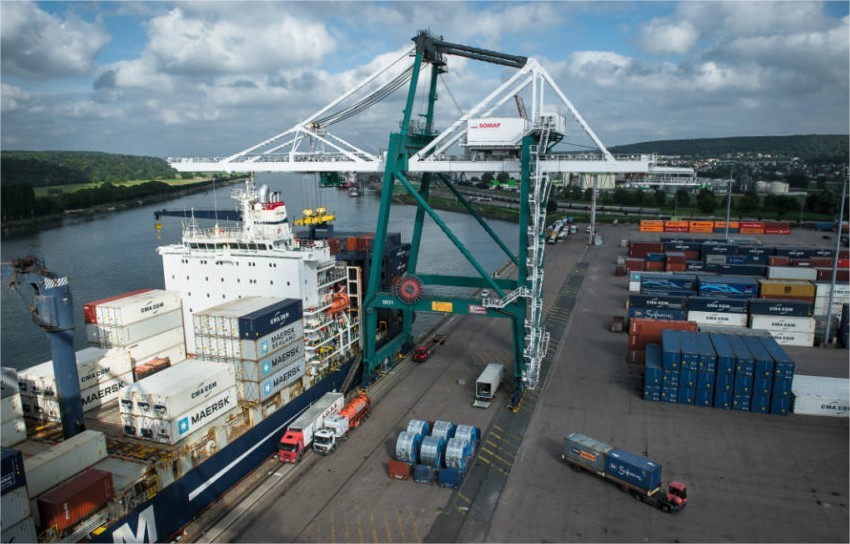
Haropa (ports of Le Havre, Rouen and Paris) is doing well. The first half of the year is marked by excellent results in sectors with very high stakes. Cumulative seaborne container traffic has set a historic record on Haropa's hinterland (its area of influence and economic attraction), with a total of more than 1 million TEUs (twenty-foot equivalent containers), That is + 1.1% compared to the first half of 2017. This increase is reflected in the growth of maritime container traffic by 12.6% in TEU. The hinterland traffic is the best at the end of June for 5 years. As for the market share of Haropa on the export of wheat and barley produced in France (2017-2018 season), it reached a record level of 50%, with a traffic growth of 75% compared to the previous campaign, generating a 22.5% increase in river traffic in cereals in Île-de-France. All cereals combined, the terminals of the port of Rouen operated 7 Mt during the 2017-2018 campaign, an increase of 75% compared to last year. This figure confirms the competitiveness of the port of Rouen (the leading European grain port), which accounts for nearly 50% of French wheat and barley exports. The new 2018-2019 campaign should confirm this good positioning in terms of market shares. The river traffic of cereals in Île-de-France is growing by 22.5%, mainly in connection with the supply of the port of Rouen. Another notable fact for Haropa: maritime traffic of aggregates, sands and gravel, is increasing dramatically from 55% to 900 000 t: it is driven by the restart of construction in the Paris region and Normandy. In this same sector, river traffic recovered significantly from April to 7.5 Mt, after a start of the year strongly affected by the flood (-2% at the end of June against -16% at the end of March) .
In France, wheat prices rise
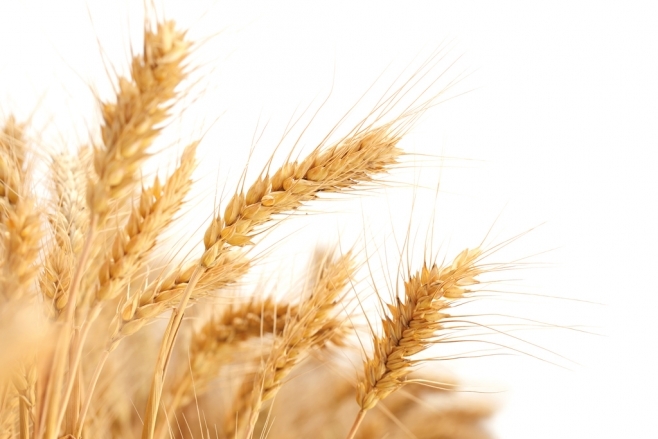
The good news of the new season for grain farmers? The rise of wheat prices which gained 30% between the end of June and the end of August, with levels never reached since April 2014. "No one had envisaged such a rise," said the president of the Association General Producer, Philippe Pinta. "We have been waiting for this for 6 years". At stake, disappointing crops in Germany and Poland, but also in Ukraine or Russia, the two giants of the Black Sea. "For some farmers, price increases are a boon. But for others, the price effect will not offset the volume effect, "warns Eric Thirouin, the deputy secretary general of the FNSEA. In France, the harvest would reach 35 Mt this year, against 36.6 Mt last year and an initial estimate, before the heat wave of this summer, 38 Mt. Fortunately, for grain, quality will be at the rendezvous with a protein level and a specific weight beyond expectations. It will still be necessary to sell it: for the first time in 2017, French wheat has sold more in the European Union than in third countries. The catastrophic harvest of 2016 (28.6 Mt) has deterred many buyers from traditional markets in the southern Mediterranean, at a time when Russia was putting the turbo, both in quantity and quality. Two years after one of the worst harvests in history, French grain farmers have not reached the end of the tunnel yet.
Eureacoop equips itself with a new silo
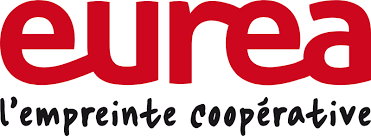
The Eureacoop cooperative has just ordered from the I.C.C. project management office, a new 11,000t sheet pile silo on a flat bottom with ventilated return. The assembly of this silo began at the beginning of July 2018 in Savigneux (Loire). It will consist of 14 cells of 20 m height, a 30 m working tower, 3 bushels of loading and 2 receiving pits. Calculation, manufacture and assembly of the silo were entrusted to the company Silos Camail who also ensured the sizing and supply of the ventilation drain. The handling and the dust collection system are provided by the company Stolz, and the civil engineering package, by Eiffage Construction. Commissioning is scheduled for December 2018.
Advertising time !

The end of the year is approaching with the launch of Infovrac campaigns for the majority of you.
This is an opportunity to reflect on your 2019 media plan and highlight your company in the leading magazine on the bulk sector.
To do this, nothing more simple, contact Stéphanie at 01 60 94 22 26 or stephanie@rpi.fr to discuss your project
See you soon !
The Infovrac team
BREAKING NEWS !

New for the web addict, the Infovrac team launches its newsletter!
6 newsletters for the year associated with each issue and which will be sent to our entire mailing file (nearly 8000 email addresses). Find the different sections of the month's issue, the show agenda and focus on the news. An advertising insert is also available for companies wishing to bet on digital.
See you soon :)
The Infovrac team.
Richard Girardot, new president of Ania
The succession at the head of Ania should mark a change of presidency on both the form and the substance; but the building sites of the association remain the same. Succeeding Jean-Philippe Girard, who has held two terms, Richard Girardot was elected president of the National Association of Food Industries. This pure Nestlé product marks the return of the big groups at the head of the association after several years when it was led by an SME manager, Eurogerm, in this case. In addition to this difference in entrepreneurial culture, this succession should be marked by a significant change in form. Often with a rougher approach than his predecessor, the new president had already signaled himself by very clear positions vis-à-vis large retailers, not hesitating to take part Michel-Edward Leclerc, probably with the approval of its Swiss parent company.
Celebrating 50 years in a few days, Ania still faces the same challenges: combating the growing suspicion of public opinion and media towards agri-food industries, restoring the margins of its companies by rebalancing relations improve the dynamism of SMEs, restore the attractiveness of the sector's trades or, again, boost exports that are insufficiently conquering.
There is no doubt that Richard Girardot will not be long in specifying his lines of action and surround himself with a team of members to try to meet these challenges. Note that Ania has just renewed its strategic partnership with AG2R La Mondiale, sign another one with Mérieux Nutrisciences on the analysis of emerging food risks and health crisis management tools and to announce - in concert with Coop de France, FCD, Feef and Greenflex - strengthening the functionality of the Valorise self-assessment platform to simplify CSR exchanges between suppliers and distributors.
What effects would a rise in French agricultural prices of 10%?
Of the 320 pages of report submitted to Parliament on 19 June, the Observatory of Pricing and Food Margins devoted 319 pages to the analysis of the situation in 2016 and 2017. A single page is risk to the prospective but it is worthy of interest. Because, at the request of the steering committee of the Observatory, it simulates the effect of a 10% increase in domestic agricultural prices on household food expenditure.
At a time when the law for the balance of commercial relations in the agricultural and food sector plans to give farmers the power to set their selling prices, this projection brings objective information to the debate. Even if the Observatory wishes to emphasize that this figure of 10% was chosen arbitrarily. Thus, if domestic farm prices increased by 10%, this would mechanically result in a 4.4% increase in the purchase expenditure on domestic food products. Prices for agri-food and beverage products would be up 3.6%. "What result in 2.7% increase in total food expenditure (including food and imported foods), and + 0.5% on total household spending, knowing that food accounts for 20% of household spending" , says the Observatory. This projection does not take into account the effect of the price increase on the volume of demand, but only the mechanical transmissions of this rise along the chain. "To achieve this, we simulate the rise in product prices of each industry that keeps its value added at the initial level. And we consider, moreover, that the rates of taxes and margins of trade and transport remain constant ", comment the editors. Another possible simulation: if the levels of taxes and margins remained constant, and no longer the rates, then the effect on prices would be further amortized: it would be close to + 2%, compared to + 2.7% in the previous scenario with a + 0.4% increase in total household spending.
Even as the raising of the resale threshold at a loss of 10% is already fearing a rise in prices and cry wolf consumer associations and the sign E. Leclerc, ball in the lead, such inflation would necessarily debate. Especially since it would be mechanically accompanied by an increase of at least 3% in the tariffs of agri-food manufacturers, without any other effect, moreover.
This scenario imagined by the Observatory is obviously totally hypothetical, but it at least has the merit of projecting all actors and observers of the food market in a scenario of improving the living conditions of upstream French producers and farmers.
INFOVRAC Press Partner of VRAC TECH EXPO 2018
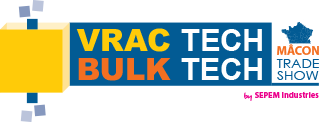
After two successful editions in Le Mans (2016 and 2017), the VRACTECH BULKTECH trade show evolves towards an alternation in Mâcon, in order to facilitate the arrival of national visitors: 25 minutes from Lyon by TGV or 1 hour by car, at 1h40 from Paris by TGV and very accessible from the airports of Geneva and Lyon St Exupéry.
This industrial meeting comes back in 2018 to provide an answer to all the problems of daily management of bulk, liquid, solid or powder: reception of raw materials - weighing - dosing - grinding - conveying - bagging - storage - shipping - transport ... 294 Exhibitors in all the know-how, for this new edition of the exhibition of solid and liquid bulk technologies.
Of course, you will find your magazine INFOVRAC on the exhibition and on our booth! Come ooonnnn !!! :)
INFOVRAC on POLLUTEC once again
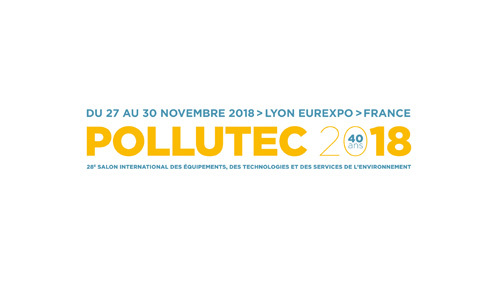
Once again this year, Infovrac offers a press partnership with Pollutec.
Pollutec, the international exhibition of equipment, technologies and services for the environment and energy will be held in Lyon from 27 to 30 November. Pollutec has been the source of inspiration for 40 years now and the means to easily access solutions, innovations and meetings in these markets.
Take advantage of this great opportunity to highlight and boost your communication with more than 2000 copies dispatched on the exhibition.
The Infovrac Team
Stéphanie 01 60 94 22 26 / stephanie@rpi.fr
Welcome on our brand new Website
A concentrateof tools is now available:
You will find the news, all issues since September 2016, you can now consult the published articles, print them in PDF for your press reviews, apply for an online subscription, consult the editorial program of the year and ask for a media kit. Banner ads are also available for advertisers who want to take a digital way.
A directory of suppliers gathering the main actors of the bulk industry is at your disposal ans you can make requests for quotations on line. A single platform for a gain of time.
You will finally discover who is hiding behind your magazine, a team that ensures to bring you the best magazine possible.
We wish you a good navigation
The Infovrac Team
![]()
NUMBER OF COPIES / ISSUE
10 000
![]()
NUMBER OF READERS / ISSUE
30 000
![]()
NUMBER OF ISSUE / YEAR
6

OJD :
CERTIFIED PUBLICATION
BY ACPM
 9 BOULEVARD PIERRE MENDES FRANCE - 77600 BUSSY SAINT GEORGES - Tél. 01 60 94 22 20 - Fax. 01 64 77 51 82
9 BOULEVARD PIERRE MENDES FRANCE - 77600 BUSSY SAINT GEORGES - Tél. 01 60 94 22 20 - Fax. 01 64 77 51 82



